|
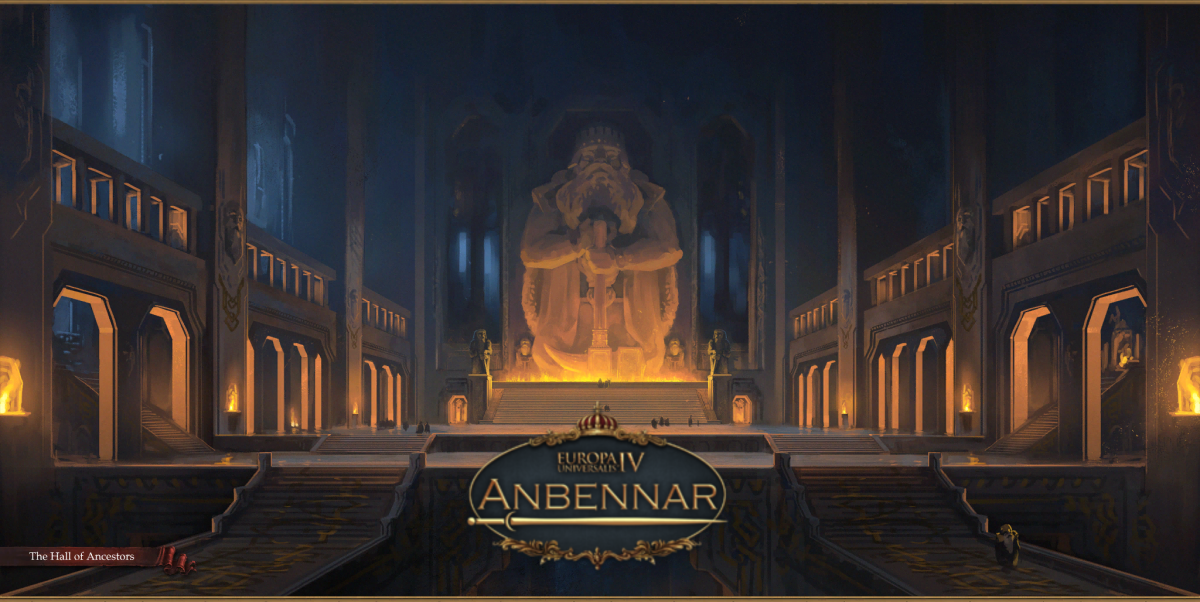 What is Anbennar? Anbennar is a fantasy mod for paradox map game Europa Universalis 4. To quote its steam page: “Anbennar is set in a fantasy world evoking themes from D&D, but through lens and time period of a strategy game like EU4. See how a fantasy world changes from an age of adventurers and good vs. evil to an age of gunpowder, colonialism and magical decadence” Originally started by one man (JayBean) as a passion project, it now has a fairly big community and a bunch of devs working on it. Its updates are frankly huge and, in many ways, it has more content than base EU4. It has a patreon and even a merch store! There’s been quite a few Paradox LPs in these forums but Anbennar remains mostly untapped. So far the only other LP is A great deal of ruin in a nation, by MonsieurChoc, who graciously let me copy a lot of his opening post for my own LP. There’s a lot of stuff in this mod: huge Mission trees, new Religions, new Mechanics, etc. New Mechanics? Oh yes. There’s a lot of new mechanics for this mod. We’ll get more details as we encounter them during the game, but here’s a quick overview (again, thank you to MonsieurChoc for originally writing these out!): - Fantasy Races! Every country gets a modifier for who’s in charge of the administration and who makes up the bulk of the armies (they can be two different races!), and every province has one or more modifiers representing the majority and minority(ies) present in the province that have positives and negatives depending on how much you accept each race. - Magic! The Mage estate is available to all countries with mages and can be used to cast spells for various effects. Also, if your ruler is a Mage you get the Ruler Magic menu from which you get access to all kinds of unique spells depending on which of the 8 schools of magic they know. - Artificers! Usually shows up in the late game but some countries and/or races get access early. You can research inventions that buff your nation or special artificer infantry. - New Government Reforms! There’s a lot, some of which are unique to certain Mission Trees. - Dwarven Holds! Deep in the Mountains are these huge dwarven cities built over centuries. They can be expanded by DIGGING DEEPER. - Expeditions! In the mountains you can also send troops to look for treasure. Hope you gave them enough supplies, or maybe they’ll never return. Maybe you’ll even find a Dungeon? - Disasters! So many new disasters. Many are unique to certain regions, races or even specific nation Mission trees. - There’s also special mechanics available only to specific regions or nations, like the Raj or the Sunrise Convocation. Those we’ll see if they come up. - Monstrous nations! Monstrous is more of a social and political distinction than anything else. Some nations are considered monstrous, with unique CBs both for and against them, and can de-monsterize eventually to be seen the same as any other non-monstrous nation. How this LP will work This will be a screenshot LP with a casual narrative focus. I’ll be dipping in and out of story voice as needed to explain game mechanics, and I am still fairly new the mod so if I do describe something incorrectly, please let me know. While I will try to stick to the narrative disposition of the mission tree and the thread votes, I can’t guarantee I won’t occasionally make the gamey choice. And on that note, there will be audience participation! Votes will be held throughout the LP, including for our starting nation, our idea groups, and occasionally some event decisions. Spoiler Policy As mentioned, there are a lot of unique events, mechanics and disasters throughout this mod. I would prefer for spoilers on anything that hasn’t already been mentioned within the LP itself be limited and kept within spoiler tags if they are brought up. While we will be touching quite deeply on the events within our region, there will also be events going on in the rest of the world that may not be entirely elaborated on and I would like to leave a bit of mystery for future LPs, whether by myself or others. So, in that regard the policy applies not just to events that impact our nation directly, but to others as well. What is free to discuss is anything that happens up to the game start. Ancient lore, existing characters, national histories. Anything that you could find by looking at the starting map or the Anbennar Wiki is fair game.
|
|
|
|

|
| # ¿ May 15, 2024 12:11 |
|
Chapter 0: History and Nation World History It is the year 1444, same as in vanilla EU4, but year 0 in Anbennar is when The Day of Ashen Skies happened. A huge cataclysm happened that destroyed the ancient empire of the precursor elves. The surviving elves either stayed behind and got all mutated into ruinborn elves or escaped in huge fleets of boats eventually making it to the other continents where their arrivals caused great upheaval. The big recent historical event is the Greentide. Orcs were historically disunited, organized in clans and tribes. They worship their god Dookan and think strength is everything. A super strong orc appeared calling himself the Dookanson, united the Orcs and swept forth to attempt to conquer the continent. They seemed unstoppable, until Corin. Corin was a young red-headed woman who died during battle, but came back to life as an avatar of the fallen god of war Agrados. She then led a ragtag army of adventurers against the invading Orcs, defeated the Dookanson in combat in the ruins of Escann and then ascended as the new god of war. But these aren’t the stories that we’ll be following, though their impact will be felt. Local History So, where are we? 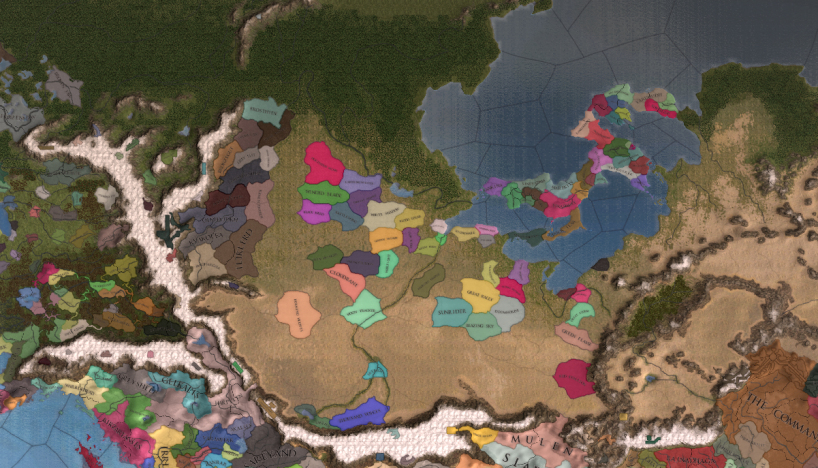 The Serpentspine, as it appears ingame 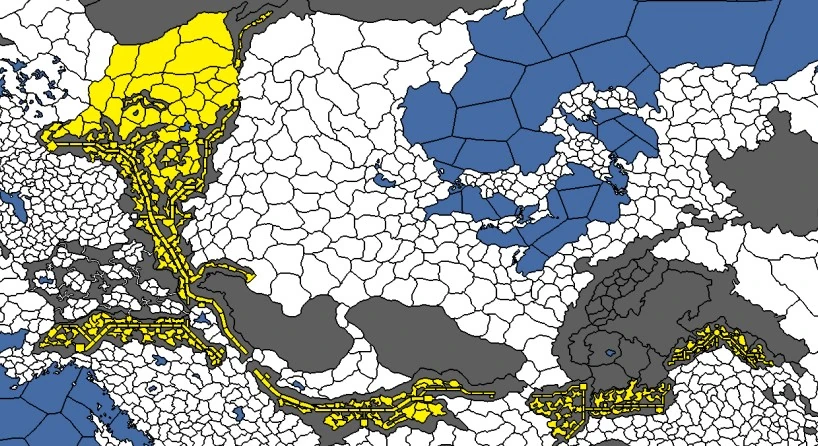 And with the provinces highlighted The Serpentspine, also known as the Dwarovar, or ‘Dwarf Home’, is a continent-spanning mountain range that reaches from the far north of Halcann (the supercontinent containing Cannor, Sarhel and Haless) all the way to the edge of Haless in the far east. It divides the continent, separating the vast and untamed Forbidden Plains from many of the more civilized regions of the world and creating choke points in many other regions as well. It is said that the mountain range was created when the dragon Malliath was struck down by the gods, with his body forming the main Serpentspine, and one of his severed heads forming the Dragon Coast on the west coast of Cannor. Whether this is true or not, the Dwarven people forged their home in the tunnels and caverns of the mountains. They founded a mighty empire, the Aul-Dwarov, which spanned the length of the Dwarovar and established a rail system that extended their reach to every corner of the mountains. 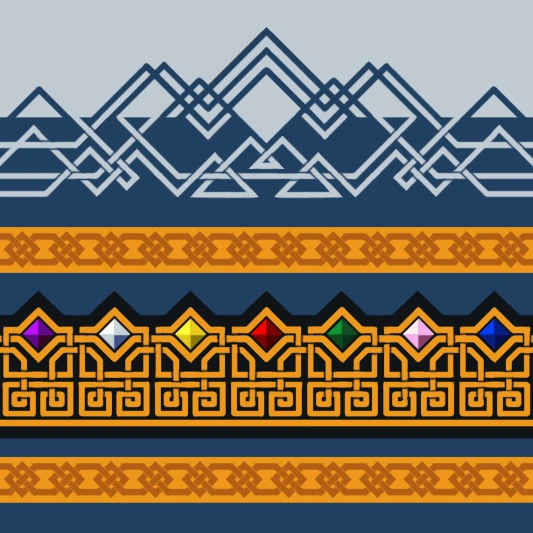 Flag of the Aul-Dwarov Thousands of years before the Ashen Skies, the ancient dwarven empire fell. Civil war, conflict with the Precursors, and finally the creation and unleashing of vast orcish hordes, brought the empire to its knees, shattered the rail system that brought it together and ravaged hold after hold. Those dwarves that survived were forced to either flee to the surface or seal themselves inside their holds. And so that was how it remained for millennia. Dwarves integrated themselves into surface societies or quietly lived out their long lives in isolation and stagnation. The splendors of the old empire lay plundered and rusting. That all changed when the Greentide poured from the mountains. The devastation wrought across Escann was to be the Dwarven people’s opportunity for rebirth. Dookanson had conscripted countless orcs and goblins who had previously been occupying the ruins of Dwarven civilization, so for the first time in thousands of years there was the possibility that the ancient holds could be reclaimed, and that home could once again be reforged. The long-sealed holds are starting to wake up. Adventuring parties sent forth by the surface Dwarves are plying the tunnels, seeking long-lost treasures and liberating ruined holds. The time is right for reclamation, and a new age for the Dwarovar! Vote Who will we be playing as? There are two main options, either we can start as one of the surviving holds or we can play as an adventuring party and form a hold. This list is not exhaustive of all possible Dwarf tags, I have curated based on who has a mission tree that I haven’t played before. I am also limiting it to the western and middle Serpentspine, as I am not familiar with playing in the eastern part of the map. Surviving Holds A: Krakdhűmvror – In the far north wielding unique ice magics, seeking to create a new empire rather than rebuild the old. B: Ovdal Lodhum – Ruled by a Human adventurer who fell in love with a Dwarven woman. Love and diplomacy (unless you are an orc or goblin). C: Seghdihr – Having maintained an alliance of holds throughout the dark ages of the Dwarovar in the more southern reaches, said alliance fell apart only recently by Dwarven standards and must be restored. D: Verkal Gulan – Sitting on vast reserves of gold, can they overcome their decadence and make use of their incalculable wealth? Formable Holds E: Orlazam-az-Dihr – Tasked with guarding the fertile surface lands of the Serpent’s Vale, they did so with gusto atop war rams. F: Verkal Skomdihr – Fallen due to invasion from the Deepwoods, revenge must be won and what better way than to deforest their lands to supply material for rebuilding. G: Mithradhűm – Sitting on a large deposit of mithril and with a long history of producing powerful and loyal warriors, this hold is capable of producing the greatest army for sale that Halcann has ever seen. H: Khugdihr – Having only fallen recently as a result of the Greentide, reclamation is just a short step away. From there, close ties with the surface nations will make the reclaimers a foremost economic power. I: Orlghelovar – Glass, crystal and science. The technological heart of Dwarven society, looking to stay one step ahead even as a new technological age dawns on the rest of the world. J: Shazstundihr – The home of great builders and craftsmen. Those who take up the legacy seek to extend Dwarven architecture to the world beyond. 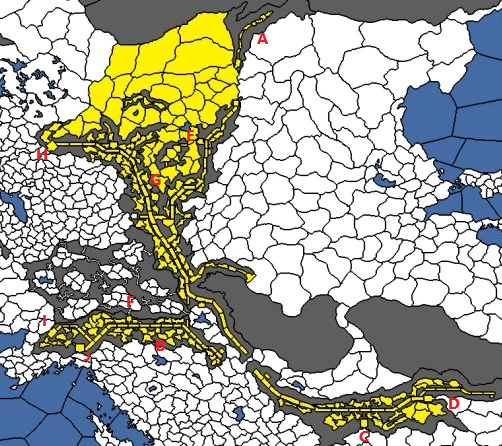 Locations, for reference. Voting will remain open for 72 hours Sybot fucked around with this message at 00:29 on Feb 28, 2023 |
|
|
|
Caustic Soda posted:There are two disasters related to digging too deep (tough) and also events for digging into caverns held by hostile orcs/goblins (easy). It wouldn't be a dwarf game without it. Try not to give any more details though, the disasters are one of the big draws of this mod so I'm looking forward to people who've never seen them before finding out just what they are like. VideoWitch posted:Let's go with I: Orlghelovar Currently in the lead with three votes, I'm starting to get concerned that my thread title will become very ironic. From the wiki (referring to the ancient hold, not the refounded one, so not a spoiler): quote:The hold of Orlghelovar was facing the surface, allowing the Cobalt dwarves to experience sunlight, but they were unsatisfied as they created intricate mirrors and lenses to direct sunlight inside of the hold.
|
|
|
|
Hiveminded posted:I was checking around on the anbennar discord and it looks like Seghdihr might actually be partially broken rn due to recent changes in the layout of trade nodes relevant to their MT. sad! anyway let's see orlghelovar I'm playing the current Steam version, not the Bitbucket version with all the Sarhel (and thus trade node) changes, but I'll look into it and see if there is a problem is this version as well. I'll count your original vote, and if there is a problem then switch it over With half the voting time gone, Orlghelovar is currently leading but there is plenty of room for a swing. Voting ends tomorrow. A - Ice Magic Dwarves: 2 B - Romance Dwarves: 1 C - Alliance Dwarves: 4 D - Gold Hoarding Dwarves: 1 E - Cavalry Dwarves: 1 F - Deforestation Dwarves: 0 G - Mercenary Dwarves: 2 H - Banking Dwarves: 2 I - Science Dwarves: 6 J - Construction Dwarves: 0 Sybot fucked around with this message at 10:37 on Mar 1, 2023 |
|
|
|
Xerophyte posted:The Train Dwarves in the Hold of Er-Natvir is not a listed option. Which is probably fortunate, since it's not very fleshed out. Expect abstract trains for the listed holds. I was fairly disappointed by Er-Natvir when I played them, which is why I didn't have them as an option. The mission tree is mostly 'conquer the rails', which you'll be doing anyway, and 'dev up the railway provinces', which spends all of the mana you should be spending on digging deeper in your holds. I originally considered including goblins as an option for the vote, but found the number of options was getting too big so decided to limit it to dwarves.
|
|
|
|
There haven't been any votes for a while, and there was a clear leader so I'm going to close this a few hours early and declare Orlghelovar the winner! We'll be doing some dwarf First update should be done tomorrow.
|
|
|
|
Ah, screw it. Apparently I can write an entire update in an afternoon/evening. I'll still be aiming for a twice-weekly update rate though.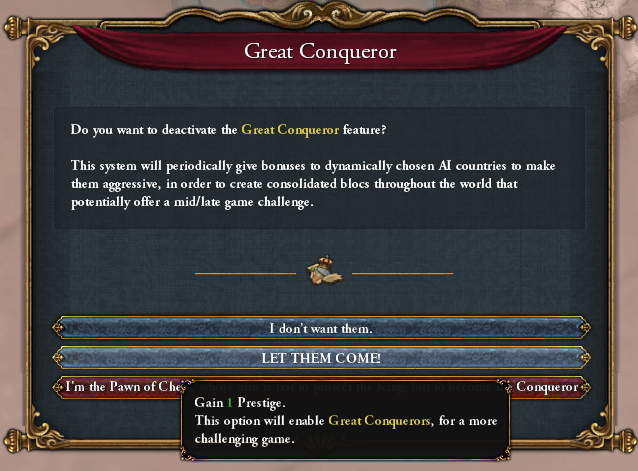 Before we start, I will be playing with Great Conquerors enabled. We will be seeing certain (relatively random) AI tags blobbing up a lot more than they would have otherwise. Not Mythic Conquerors though. Mythic only applies to Great Powers, so it'll inevitably see the same superpowers forming over and over again while GCs can cause unexpected minors to rise to prominence. Chapter One: The Blackbeard Cartel 1444 - 1449 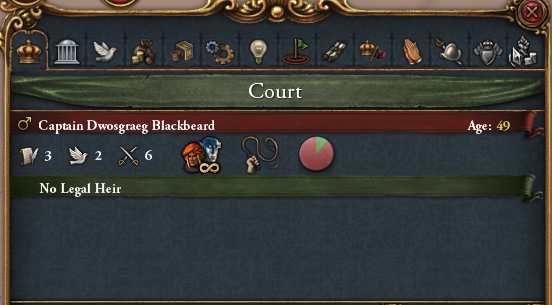 Captain Dwosgraeg Blackbeard Dwosgraeg Blackbeard was an ambitious young dwarf. Not even 50 years old, he had chafed against the gentocracy in Silverforge and its submission to the half-elven nobility of the Empire of Anbennar. When the call went out for dwarves to join the reclamation efforts, he saw his opportunity to make a name for himself. He did not want to join Silverforge's official expedition, nor the one funded by the Asra Bank, nor the old man Blueshield's company. Instead, he took advantage of the countless other young, like-minded dwarves eager to participate but not willing to answer to the elders at home. There was wealth to be found, ancient technology to be rediscovered, and above all, glory and names to be carved into the history books. As the cartel made its way through the treacherous, orc infested lands of Escann, Blackbeard found that he had a natural talent for leading dwarves in battle. His strict discipline kept his soldiers moving no matter what dangers they faced. 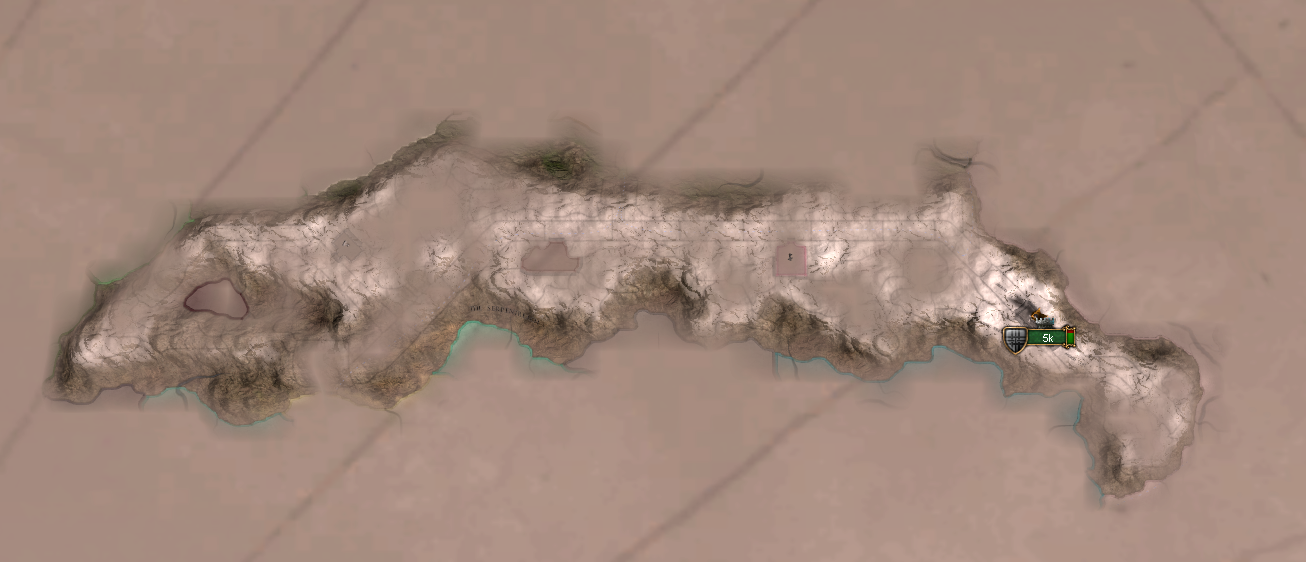 The Serpent's Reach After finding an entrance into the Dwarovar, the cartel made its way south and passed through the Arg Tunad tunnel into the Serpent's Reach. To Blackbeard's knowledge, the other expeditions were plying the northern tunnels but the Reach was completely free for the taking. Rather than face competition, his cartel would have these tunnels all to themselves. 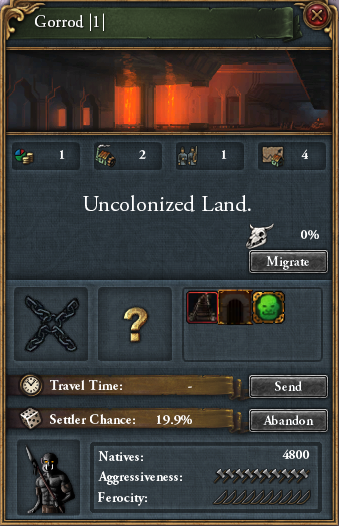 Ferocious, aggressive orc and goblin tribes dwell in the tunnels Themselves, and thousands of goblins. While the tunnels were not as teeming with the vermin as they had been before the Greentide, there were still enough to give the cartel pause. Progress was slow going, as the cartel's camp had to be carefully moved, and every cavern and side passage checked for ambushes. It is generally a bad idea to send troops out from your single province to start with. The goblins and orcs will chew up your manpower for little to no gain, and purging the natives to prevent uprisings is prohibitively expensive. 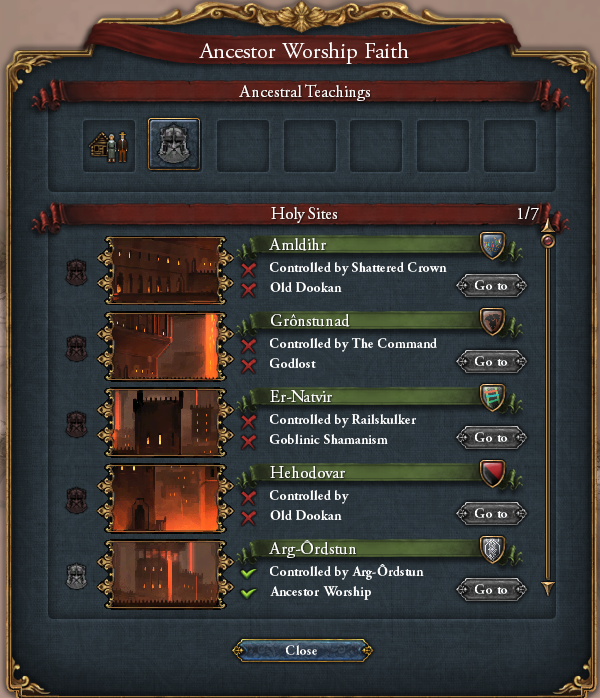 Only the Diamond Hold of Arg-Ôrdstun remains in dwarven hands Officially, the dwarves of Silverforge followed the same religion as the rest of the Empire, that being the gods of the Regent Court. Unofficially, many dwarves still venerated their ancestors, and it was that sort of dwarf who was much more eager to join the reclamation efforts. As ancient shrines and temples were uncovered, long ransacked but solidly-built enough to survive the millennia, more and more of the cartel began to revert to the old ways and pray to the ancient inhabitants of the mountains to protect them. Ancestor Worship, the primary dwarven religion, follows the Coptic mechanics. Right now, only one Holy Site (aka major hold) is occupied by dwarves, so we are only allowed to select one bonus. Given that we aren't heading for a second Holy Site and I can't guarantee that we'll pick up a second blessing off the AI adventurers any time soon I've picked extra settler growth to help us once we start expanding beyond one province. Otherwise, I would have picked a morale bonus to help us initially. 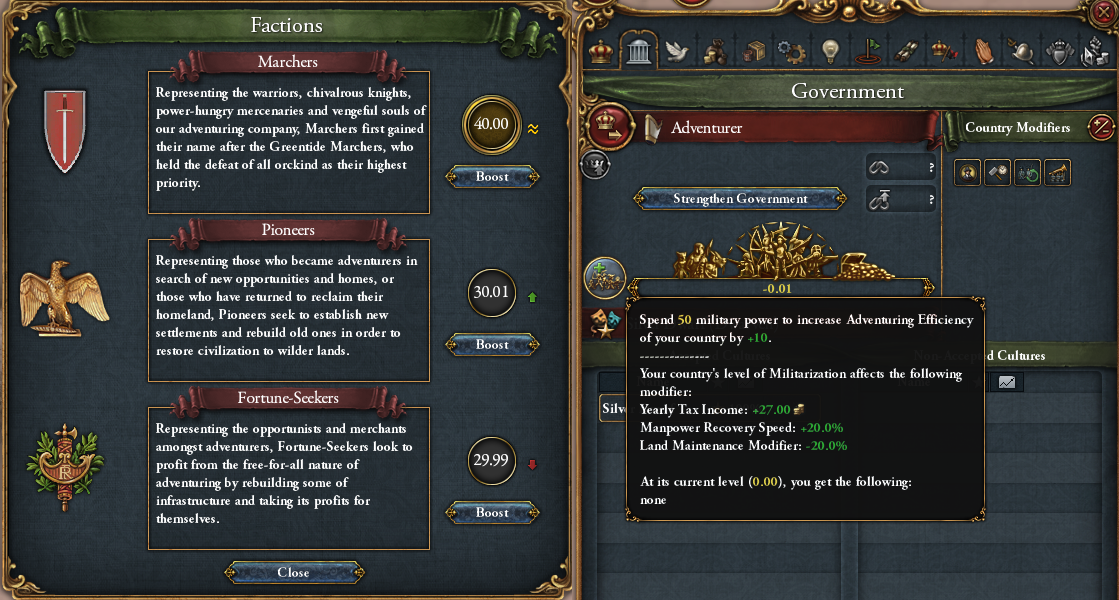 Cartel Organisation The council advised Captain Blackbeard and lobbied him for their endeavours. One part was the Marchers, the military commanders who lead the armed forces of the cartel. With so many dwarves under arms just to keep them safe from the ever-present threat of goblins, they were the strongest political force in the cartel for the moment. The next were the pioneers, who were most interested in finding a place to settle down and begin building a home. While their dreams were still distant, they were making good use of the experience in setting up, maintaining, and tearing down the cartel's camps to regain experience in underground living that had been lost in the millennia since the exodus. Finally were the fortune seekers, the mercenaries and adventurers who were in the cartel for the fame and fortune. They were responsible for collecting the treasures of the Dwarovar and finding ways to turn that into money and knowledge. Blackbeard hoped to turn them into eager soldiers and not just a set of gold-hungry rabble. Adventurers make use of a mix of mechanics from the base game. First is factions, which allow the company to swap between a military focus, colonization focus, or treasure hunting focus with the expenditure of a bit of mana (for those not familiar, a catch-all term for Admin, Diplomacy and Military Points earned by your nation). Presently we are getting a few military buffs, combined with some diplomatic debuffs. The second is Adventuring Efficiency, which is a rebranded Militarization. For a small mil mana investment we get a scaling buff that gives us some income, and makes our armies cheaper and easier to replenish. I hit the button once to get us over the first threshold where the scaling buff begins to kick in. 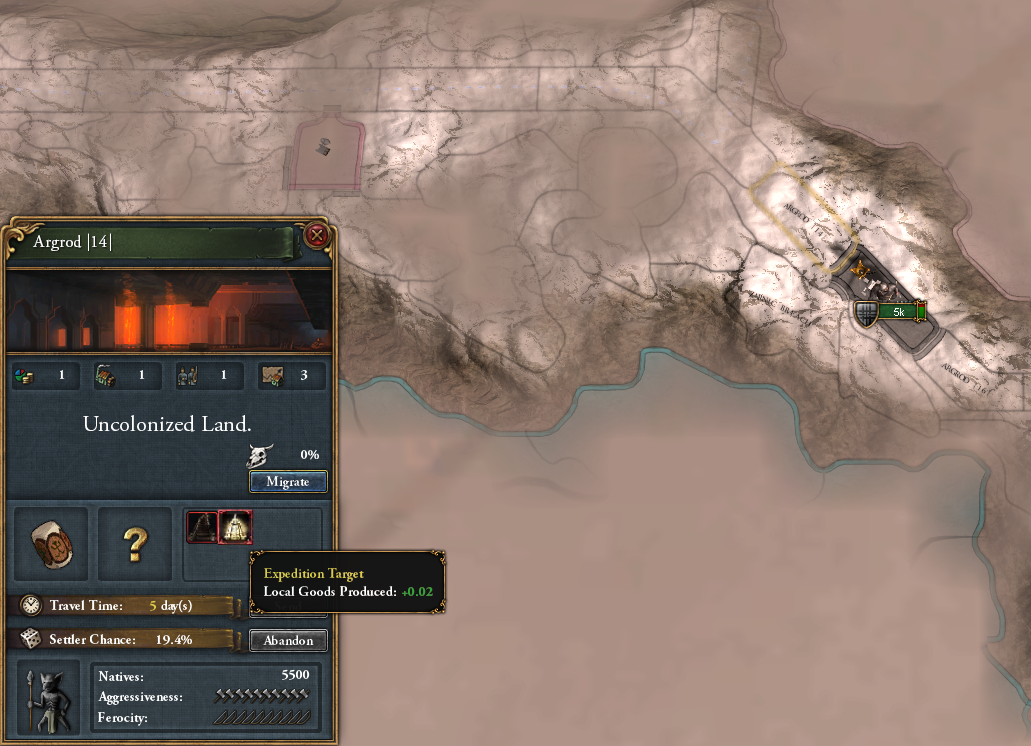 The Blackbeard Cartel migrates to an expedition site The cartel was an ever-shifting camp stretching miles along the path of the ruined Argrod rail line. Scouting parties set out ahead of the bulk of the cartel's forces, charting out the path of the rail line through the vast caverns and over pitch-dark crevices. Regular combat with the goblins and orcs saw a steady rate of attrition to the dwarves brave enough to take the lead, but they were rewarded with first choice of any loot that was liberated from the savages that had plundered it. When one such party found a cave opening up in a separate direction to the main rail line, and evidence that goblin looters had passed through that way with a large haul of rightful dwarven treasure, word quickly sped back to the command tent. Blackbeard made the decision quickly, the whole cartel would move to the entrance and set up to support a full expedition deeper into the unknown cave system. The last mechanic shared by all adventurers is the ability to migrate, so long as they remain an OPM (one-province minor). Doing so earns us some mana and can be done once per year. There are also tribal land and development mechanics that some adventurers use, but these are restricted to Escann nations afaik so are unavailable to us dwarves. 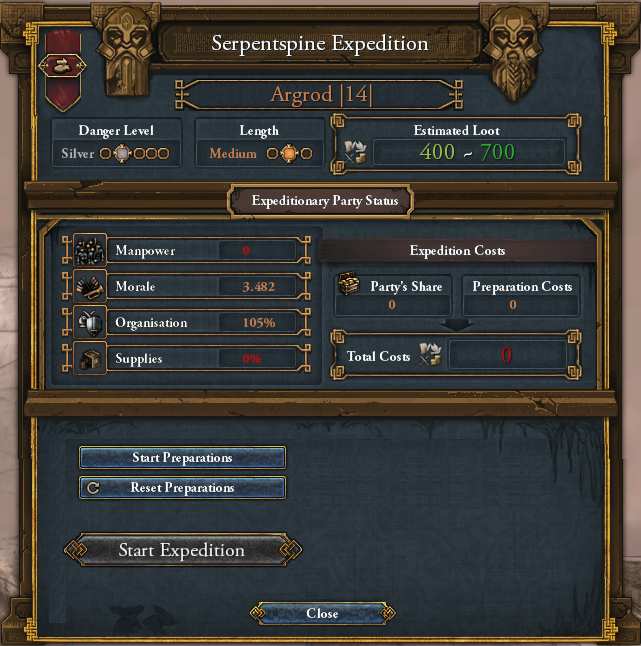 The Argrod Expedition The preliminary scouting of the expedition site confirmed that it extended for many hundreds of feet deeper in the mountain, far below the level of the rail lines. However, nothing had been sighted that presented a significant threat to a well-prepared dwarf, and the scouts had returned with gold, forged metal, and ancient trinkets that proved that there was a veritable haul of stolen relics to retrieve and place back into rightful dwarven hands. Or sold to the many merchants that were trailing with the cartel and looking for unique goods to take to the surface. One of the newest big features in Anbennar is expeditions. There is an impressive amount of work put into the interface and back-end scripting to add a dungeon crawling minigame to grand strategy game. I'll go into everything else shortly, but the key stats for determining the difficulty of an expedition are the danger level and the length. Danger level will increase the risk of bad events, and might have an impact on attrition. Length will increase the number of 'levels' that the expedition has to progress through. However, the greater the risk the greater the reward. 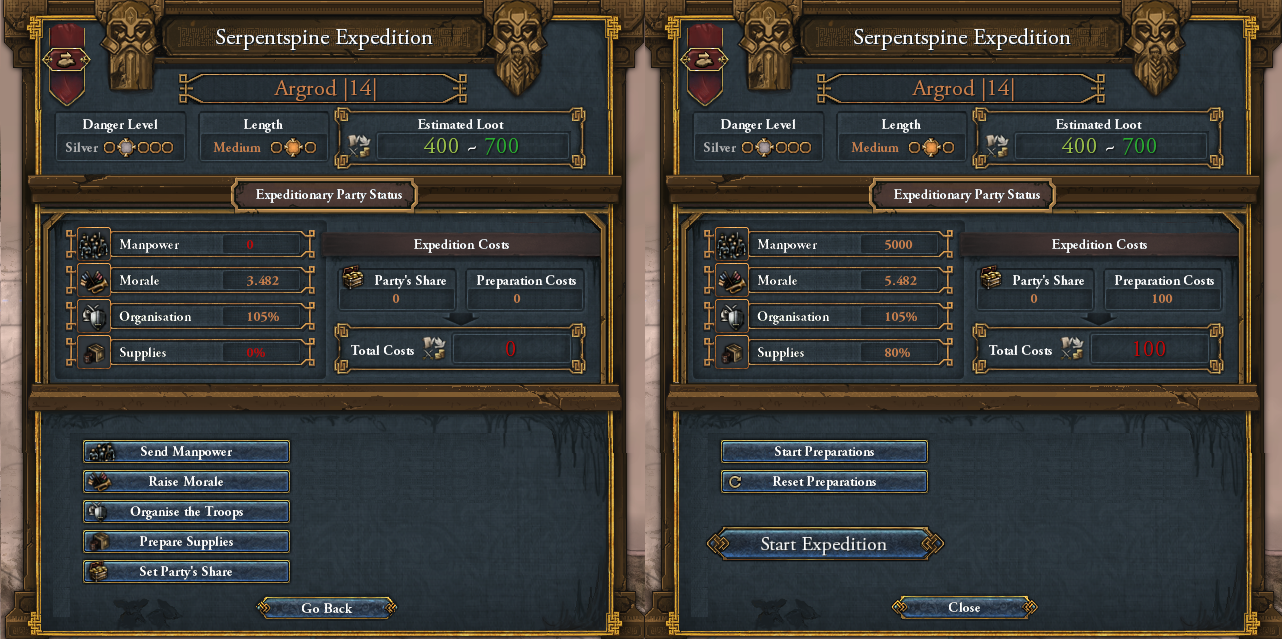 5000 dwarves, led by Blackbeard himself, prepare to brave the unknown With the camp firmly in place, Blackbeard commandeered the standing defence forces of the cartel to join in the expedition. There were rumblings of discontent from the dwarves, but these were placated somewhat by holding a great feast for their departure, making sure that the soldiers would be well fed and full of ale before setting off into the unknown. Supplies were purchased from the merchants, and a whole logistics train was set up to carry cured meats, barrels of booze, and whatever treasure was found. Blackbeard gave a rousing speech before the expedition set off, announcing his intention to join the party and uncover the ancient secrets of the Dwarovar himself. The empire fell because it grew too stagnant, too inwardly focused. Now was the time to take risks, uncover lost knowledge and find out what really lurked in the darkness. Before you launch the expedition, you have to prepare it. This is done by using the interface to spend units (as in literal units on the map, not manpower from the pool), money, and mana to boost the expedition stats before you begin. Manpower does what it says on the tin. If this hits zero then the expedition fails. Over the course of the expedition it will be ground down by attrition, based on the other stats. Morale represents the troop's willingness to continue. If it hits zero then troops start deserting and manpower declines that much faster. Organisation is equivalent to the discipline stat in combat, and in fact we get the same 5% bonus from Blackbeard's 'Strict' trait. Manpower and morale losses will be reduced by increasing this. Supplies are straightforward. If you run out, morale plummets much faster, troops die faster, everything goes to pieces. You can also see the expected loot and resources spent preparing, which will help give an idea of the profit you'll make. It's a delicate balancing act between making the expedition worth it, and the risk of losing it all if you don't send enough dwarves or supplies. 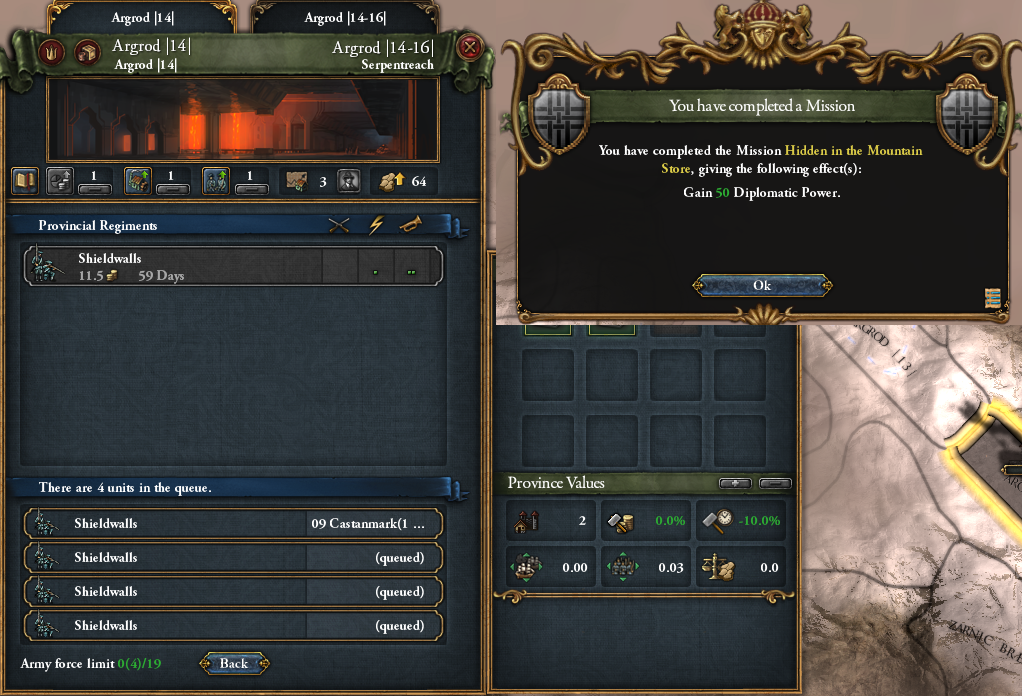 Blackbeard Cartel adventurers undergoing training While Blackbeard delved into the depths his second in command, Drominarsaraor, focused on training new arrivals into a proper fighting force. Despite being deep in the mountains, there was a steady flow of smaller adventuring companies and well-guarded merchant caravans travelling back and forth along the rail lines, which were relatively clear following the larger expeditions driving away the tribes squatting on them. This was how word got to the outside world of the treasure that could be found simply by digging deeper. The first wave of trinkets and artefacts that the scouts had returned with proved to raise the cartel's profile with those backers who remained on the surface. Sending all your soldiers down into a hole you found isn't the best idea, but luckily right now there aren't any other nations that can see us to take advantage of it.  The adventurers flee a rolling boulder The expedition was not without its perils. A massive rockfall flattened nearly one hundred of the party who were unable to escape in time. It was far from the only losses. Constant skirmishes with goblins, with the vanguard driving away tribes that had settled on the path deeper inside, or raiding parties attempting to attack the logistics train, all took their toll on the dwarves. Nonetheless, with Blackbeard at their head they remained resolute. Throughout the expedition you receive events dealing with their progress. These quite nicely show the current stats of the expedition and their progress through the current floor. Some expedition events are a straight loss/gain depending on the dice roll. Losing 100 dwarves isn't a big deal as I overspent on manpower in this expedition. 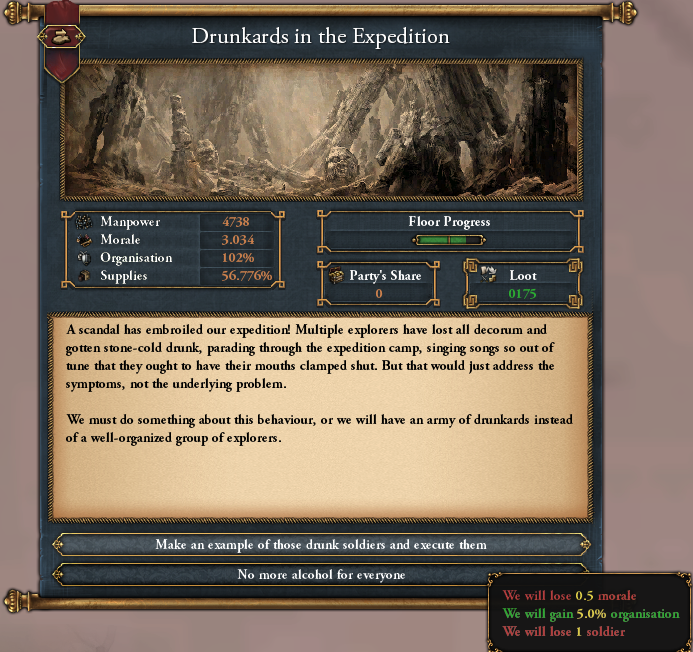 Blackbeard personally executes a dwarf accused of dereliction of duty Morale was perpetually a problem, one that many dwarves bolstered with alcohol. As the expedition wore on, some dwarves began to drink more than their ale rations and discipline started to break down. Blackbeard was left with no choice but to stamp down on the worst offenders and make an example of them to restore order. Sometimes you get a choice in what stats you gain and lose. The other option cost a whole 1 morale, so I took the 0.5 option since I underspent on morale during preparation. 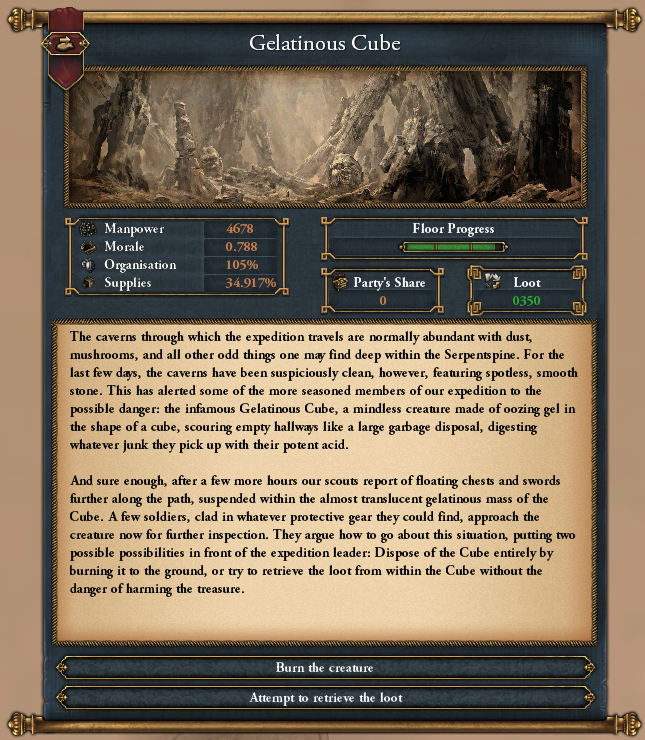 The burning of the great gelatinous gobbler In the deepest part of the tunnel, Blackbeard and the expedition vanguard found a monster of incredible proportions. A gelatinous cube the size of a building had scoured the rock clean and absorbed all the treasures into its body. A debate broke out among the party members whether to fight the creature or destroy it through fire. After discussing it with some of the foremost monster experts, Blackbeard agreed that attacking the cube was too risky with expedition morale dropping. Any treasure that could survive so long in the acidic belly of the creature could survive its destruction by fire. Destroying the cube took many days of effort, and all that remained once the slime had been burned away was piles of warped metal equipment and half-melted gold and silver trinkets. One item stuck out of the pile. A brilliant gemstone caught the eye of a member of Blackbeard's retinue, and the dwarf presented it to the captain. Blackbeard fell silent upon seeing it, and remained quiet for the remainder of the journey back to the cartel base camp. Sometimes you have to pick an option without knowing the outcome. The loot was tempting, but I suspect has lower odds of a good outcome. In this case, the event results gave a morale boost that fixed that perilously low morale. 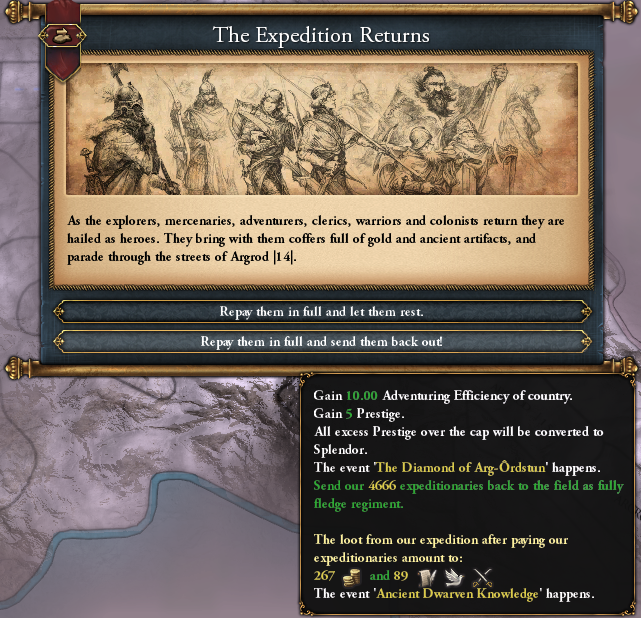 The victorious adventurers return The return of the expedition was met with jubilation. A great feast, a mirror of the one at the beginning of the expedition, brought together the newest arrivals and the veterans who had returned from the depths. Immediately the labourers and merchants began to unload the loot from the logistics train and appraise it for sale. All in all, there was enough gold, silver and mithril among the treasure to fund the original expedition three times over, as well as a significant amount of ancient dwarven literature. At the height of the feast, among the celebrating and drinking dwarves, Blackbeard climbed up onto the highest table to address the entire cartel. After the expedition, you can regain the survivors as manpower or as troops in the field. You also gain adventuring efficient, money, mana, and any special treasures that you found during the expedition. 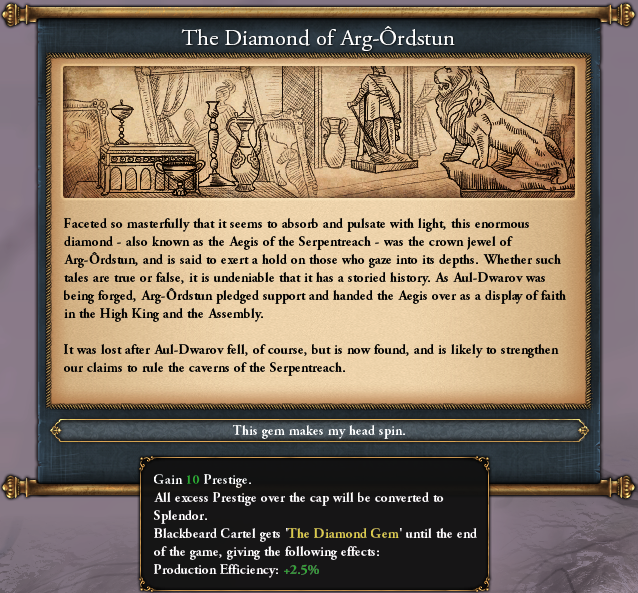 The First of Seven Held high in Blackbeard's hand was a brilliant diamond. He had spent the journey carefully cleaning off the soot and muck that had accumulated on it over the thousands of years it had been missing, and upon seeing the perfect unblemished gem it was undeniable. It was the Aegis. The Diamond in the Dwarovkron. Every eye in the cavern was drawn to its glittering light. As the captain began to speak, his voice struggled to keep from cracking. This discovery was a sign from the ancestors, a symbol that the Blackbeard Cartel was on the path to become the true inheritors of the Aul-Dwarov, proof that the past could be reclaimed, and that a new future could be forged. Blackbeard is not exaggerating; this is a huge deal from both a lore and gameplay standpoint. If you remember the flag of the Aul-Dwarov, this gem was one of those seven that appear in the flag. Finding all seven is one of the requirements for declaring the revival of the Dwarven Empire. Each gem has a nice, if small, buff associated with it. I'm amazed I got one so early. 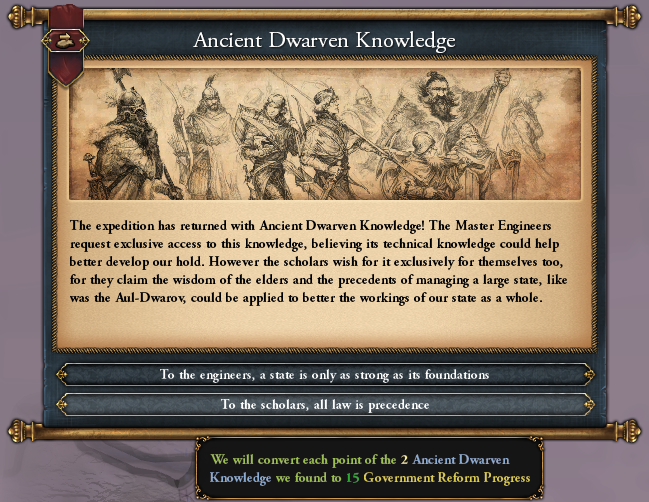 Relearning the lessons of the past Among the treasures of the expedition were documents, mostly those carved into stone or metal rather than anything like paper that would decay. These were handed to the cartel's administrators to try and extract any useful management techniques. The other option would have given us something that we could use when we reach a hold, but that is a way off so I decided to take something that'll cut a couple of years off of our government reform time instead. 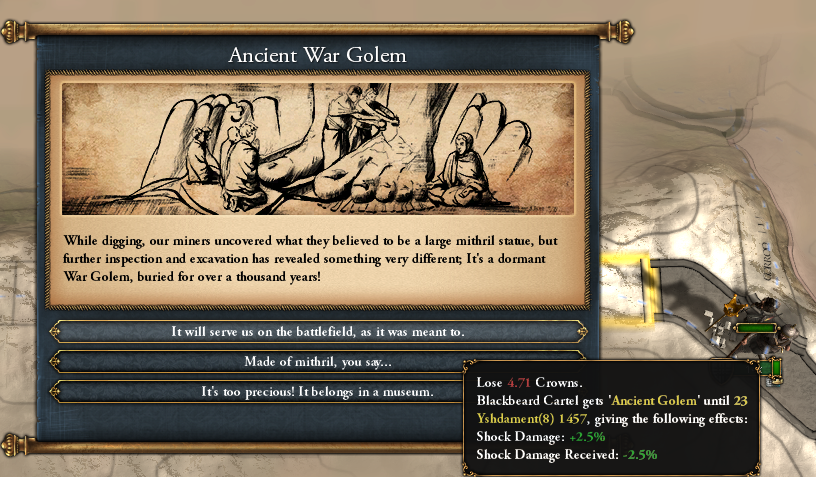 An ancient mithril golem leads the adventurers After the excitement of the expedition the cartel continued to travel slowly along the rail line westwards. There were supposed to be several holds in the westward direction, and if the cartel was going to set up a true base rather than the ad-hoc moving campsite then it had to be in a proper dwarven hold. Along the way, a minor expedition uncovered a mithril golem. Even as ancient as it was, it took very little for the cartel's magesmiths to reactivate it. Blackbeard refused those who suggested melting it down to reforge the mithril into weapons and armour. Such a brilliant invention had to be seen in action. The other options give some mana, which would be nice but we already have plenty, or some innovativeness, which I'll explain below. Immediate military benefits are probably more important. 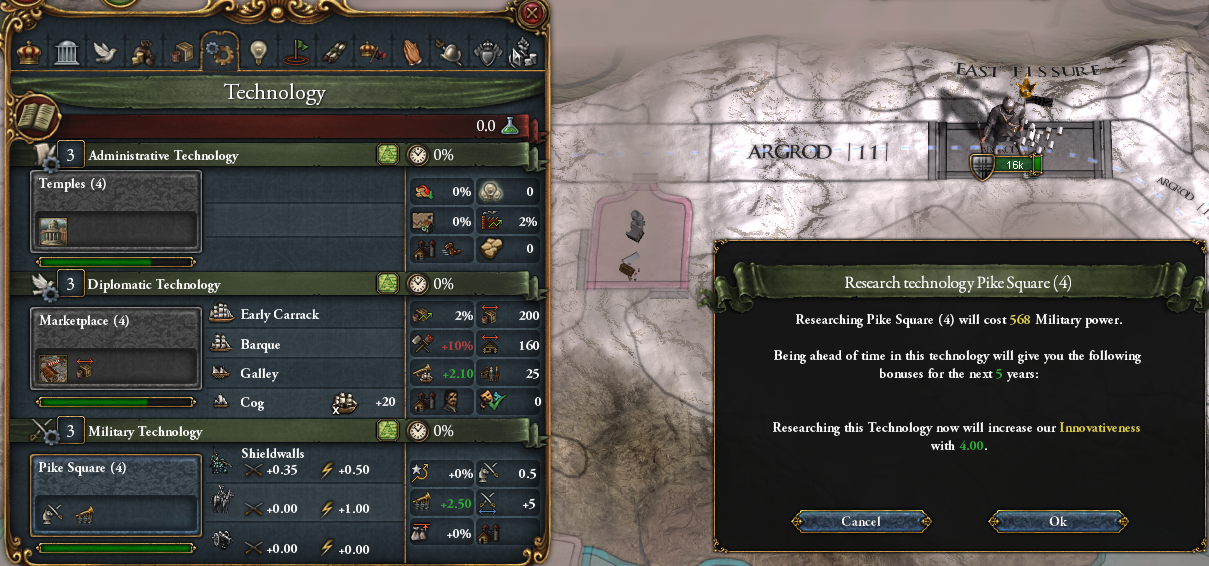 New techniques introduced to the cartel After leading the cartel for several years now, through dozens of minor battles and one major expedition, Blackbeard was getting more of a handle on making the best of the soldiers he had on hand and integrating the ragtag mercenaries and adventurers into properly disciplined formations. Those troops would face a real test sooner than he expected. Speaking of innovativeness. For those unfamiliar with this relatively recent addition to EU4 mechanics, it provides bonuses to nations that stay at the front of the pack in tech and national ideas. It is gained by being one of the first to research a tech (thank you Blackbeard, with your 6 in military), one of the first to pick an idea, or just generally being ahead of the intended year for tech. It is lost by being behind in tech, and it falls off a lot faster than it goes on so it usually isn't worth aiming for unless you are close to where the institutions spawn (and that is a topic for another day). Anyway, this tech is very important as it gives us more morale and military tactics, improving our troops survivability immensely and giving us a leg-up over the goblins we might encounter. 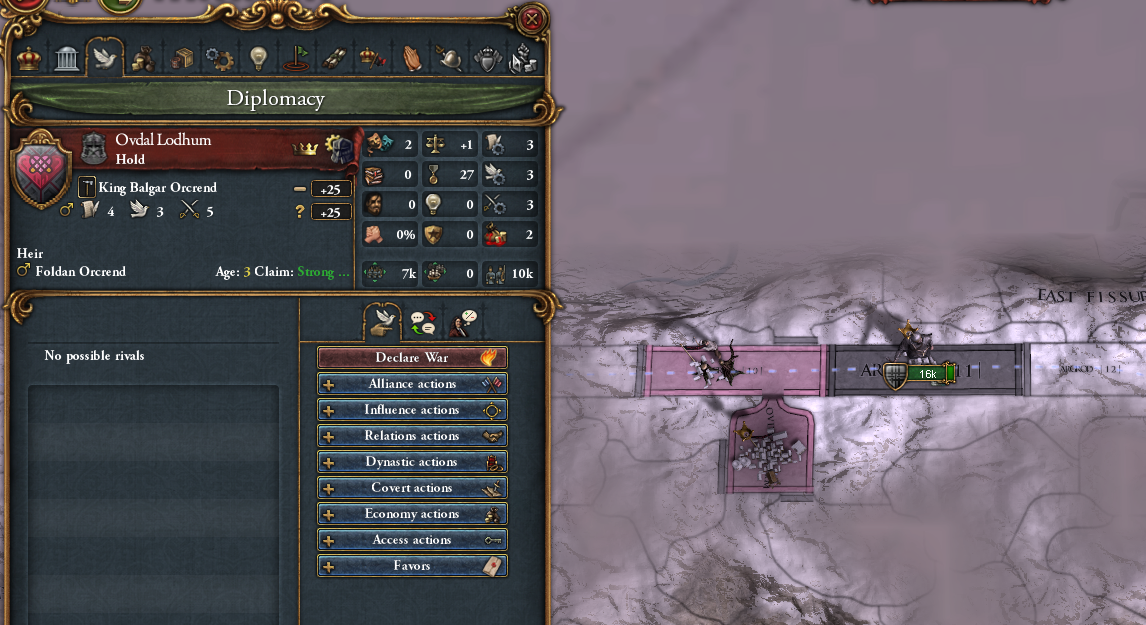 Face-off between those who remained and those who returned The forward scouts reported a barricade on the rail line, one that didn't look like a ramshackle goblin stockade. Blackbeard personally joined the scouts on their probe of the barricade, and when they managed to clamber over they were faced by a shocking sight. Dwarves bearing the garnet heart insignia of the long-lost hold of Ovdal Lodhum on their flags, had set up a defensive encampment on the rail line. The two sets of soldiers stared at each other, not sure what to make of the situation. Eventually, Blackbeard stepped forward to attempt to greet the garnet dwarves. He was met by anger and rage, and had to back away before he was peppered by crossbow bolts. The dialect of the garnet dwarves had shifted from the one spoken by Silverforge, but it was enough to get across the idea that they didn't believe the cartel dwarves were real. Blackbeard and the scouts retreated to the far side of the barricade and set up camp while trying to work out a way to prove themselves to the garnet dwarves. A day later, a horn sounded on the far side of the barricade, indicating a call for parley. Atop the barricade was stood a dwarf in full armour, Balgar Orcrend, King of Ovdal Lodhum. He declared that he been given a mission to open up his hold and retake the Dwarovar, in the name of his deceased father. The Blackbeard Cartel should kneel, or be struck down as goblin-crafted apparitions. With thoughts of the diamond safely stowed back at camp, Blackbeard did not kneel. To be continued… There were a lot more gameplay notes than I expected in this update, but perhaps I should have expected it. Paradox games are very frontloaded in terms of getting your nation set up, and I didn't expect to have such a fruitful expedition so early. Hopefully later updates should be filled more with notes on the action and strategy, rather than explaining how things work.
|
|
|
|
(Update on previous page)Mechanical Ape posted:Well, that's a fine hello from a faction that's supposed to be about love and diplomacy. Maybe they're the goblin-crafted apparitions! It takes them a little while to get there. One might say they love too much. A small spoiler of what some of the early missions of the Ovdal Lodhum mission tree look like: 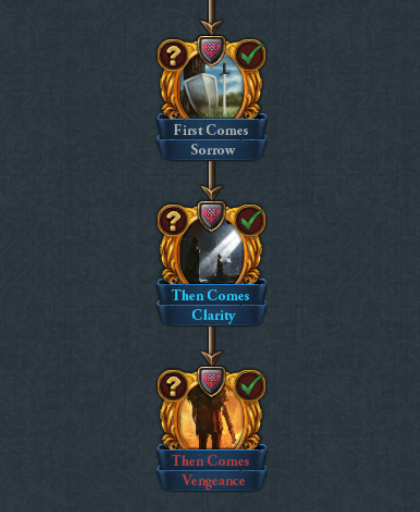
Sybot fucked around with this message at 23:41 on Mar 2, 2023 |
|
|
|
Bloody Pom posted:That said, I think the general consensus within the Anbennar community is to save the longer/more difficult expeditions for when you already have your economic base set up and are up to date on tech. Something to spend your mana on while your holds are busy digging deeper. Agreed, it's a lot easier to stop and delve when you aren't stuck in the early game where every point of mana you risk could mean losing out on a crucial tech before a war. Then you have expeditions that last multiple years, which could leave you stuck when you're supposed to be moving towards your target hold but you can't migrate or you lose the province. MonsieurChoc posted:I loooove expeditions, but I wish they still had the %chance of positive/negative outcomes for the choices that were displayed during the testing phase on the bitbucket version. That sounds like a really neat feature, but I kind of prefer it this way. It reduces the kind of frustration you get when you roll a known 80% chance but hit the 20% instead. Xerophyte posted:You can also run out of supplies and lose a max-supply expedition if the duration is Long, and Long expeditions take 5+ years. Failed expeditions just eat all the time, manpower, gold and points you sunk into them, and then have to be restarted from scratch. Early game expedition failures can be crippling. This is the bit that bothers me most about the mechanics. As there's no way to influence an expedition in progress it is far too easy to throw away everything you invested if you misjudged your starting stats, or just rolled very badly on the events. As thematic as that is, it is still frustrating.
|
|
|
|
Chapter Two: From Hold to Hold 1449-1465 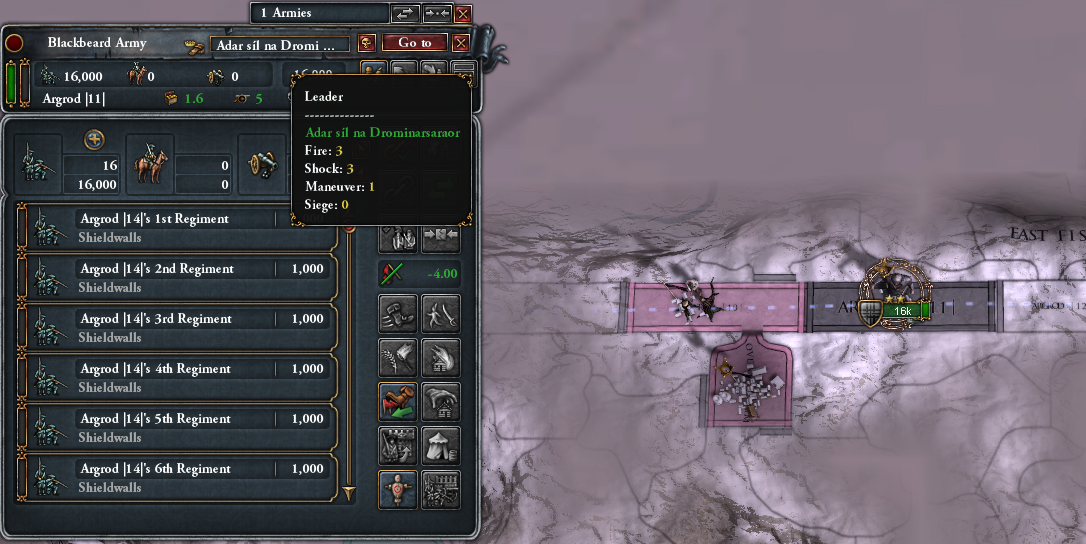 The Blackbeard Cartel's full strength Blackbeard returned to the cartel camp with his heart hardened. He had no idea why was Balgar was so resistant to the cartel being allowed to pass through his lands. Conflict between fellow dwarves was unthinkable. Perhaps thousands of years of isolation had driven the garnet dwarves mad, or the king had delusions of reforming the Aul-Dwarov. In his command tent he looked at the Diamond once again and got to work. Lieutenant Drominarsaraor was ordered to assemble the full armed strength of the cartel. A punitive expedition was needed to ensure that the remnants knew that their time was past. 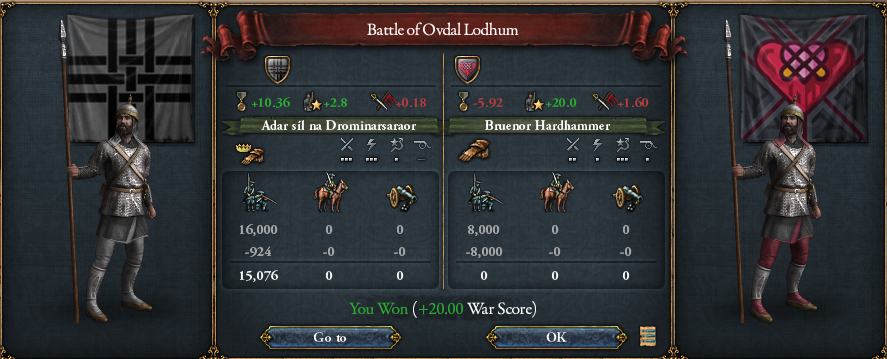 Battle outside Ovdal Lodhum Cartel sappers blasted through the barricade on the railway, and found no resistance. The garnet dwarves had pulled back to the junction leading into their hold, and that chokepoint was where they made their stand. Dwarf fought dwarf, long-distant cousin against cousin, and flags bearing the Black Weave and the Garnet Heart fluttered amongst each other in the melee. In the end, the mithril war golem was used to punch a hole in the defensive lines and cause a general rout. Hundreds of dwarves on both sides lay dead or dying, while the routed defenders retreated into the hold interior to force the cartel to besiege it. Those defenders who were captured were brought in for interrogation and it became increasingly clear that it wasn't just rage and madness that was pitting them against their brethren. All they could talk about was a great loss, and the death of love. A Dwarven Hold gives a combat bonus of 2 to the defender. Unfortunately for Ovdal Lodhum, that doesn't overcome a numerical and technological advantage. 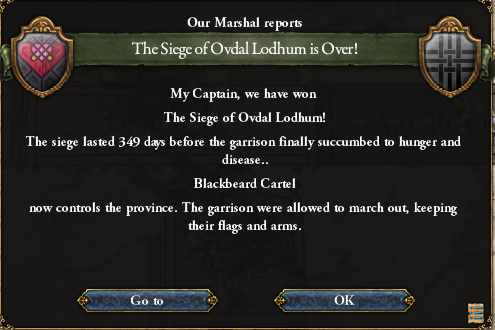 Ovdal Lodhum is forced open At the entrance to the hold was a labyrinth. Once named the 'Tunnel of Love', it was a place where dwarven couples could lose themselves with one another and find quiet away from the bustling holds. In ancient times, couples from across the Dwarovar would visit. Now it was a deathtrap. As cartel scouts plied its tunnels, they found mounds of scorched and crushed orc and goblin bodies. This brought about some much-needed caution, and they narrowly avoided getting killed by the traps that had been set in the labyrinth, or the mechanisms that would pour boiling pitch on invaders. Blackbeard considered the problem. Storming the hold would cause unacceptable casualties. Luckily, there was another solution. The war golem was used as the vanguard to trigger the traps. It was slow going, but eventually the cartel forces passed through the labyrinth and through the main gate of the hold. You don't want this to happen to you. When a hold is successfully sieged, it gets a 'damaged hold' debuff that needs to be cleared by spending money and mana, with increasing costs the more developed the hold is. Every hold should have a fort, even if only a basic one that can hold out a couple of siege ticks until relief arrives. 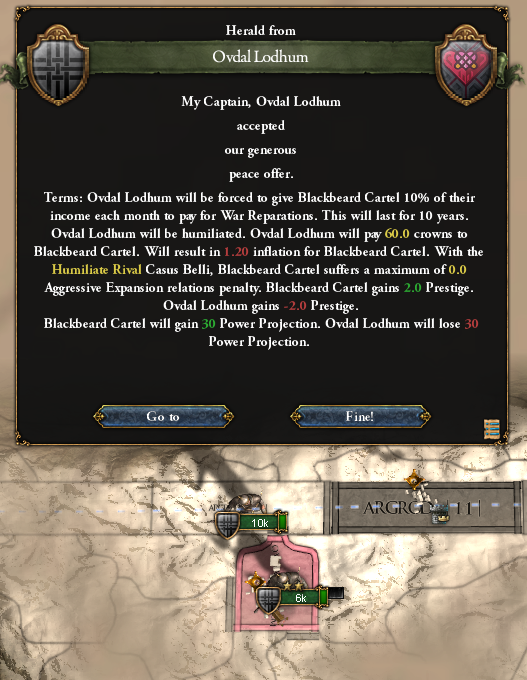 The humiliation of Orcrend When the cartel forces broke through the main gate, they were met with an unexpected sight. Not just the thousands of surviving garnet soldiers, but countless civilians were gathered in the great square that lay just inside the entrance. At one time it would have been a place for lovers to congregate, but now it looked like in contained all of Ovdal Lodhum, intending to make their final stand. The strangest thing was a statue stood at the centre of the square. It wasn't of a dwarf, but a human. In front of it, King Balgar stood defiant against the invaders. Things slotted into place for Blackbeard, as he recognised the man memorialised in stone. He ordered his forces to hold, and called again for parley. He and his retinue were met by Balgar, his mother the Queen Mother, and a number of other garnet dwarves. This time, Blackbeard opened negotiations with an offer of his sincerest condolences for the death of Gerin Orcrend. The man had been a legend, with thousands of orc kills to his name and rumours that he had survived battle against Dookanson himself. However, he had disappeared into the Dwarovar decades ago during the chaos of the Greentide and was presumed dead. Balgar's anger faded, and was replaced by a deep sorrow etched onto his face. He explained the rest of the story. Gerin had adopted him and married his mother after his father had been slain, and had been welcomed into Ovdal Lodhum. There, the inhabitants had grown to love him like one of their own and eventually made him king despite being a human. His stories of the Greentide sweeping out of the mountains, the fall of Khugdhir, and the sheer power displayed by the Dookanson had given the impression the rest of the world was besieged in the same manner as the dwarven holds leaving the idea of a whole company of reclaimers as unthinkable. His death had broken something in the people of the hold, and now they sought a way to repair their hearts in the caverns beyond their walls. There is a lot of story in Ovdal Lodhum, it is a recommended play if you want to be a remnant hold. Despite finding some common ground, negotiations were still fringed with anger. Thousands had died, and Balgar still disputed Blackbeard's right to traverse the Dwarovar and claim a hold. When Blackbeard produced the Diamond Gem, the Queen Mother almost spoke up, but Balgar stopped her before she could get out her words. In the end, the superior negotiating position of the cartel won out. They were able to get Balgar to sign an acknowledgement of the Blackbeard Cartel's rightful possession of the Diamond of Arg- Ôrdstun, as well as allow them and associated merchants free passage along the Argrod rail line and provide monetary reparations for the cartel's losses. The optimal thing here would have been to vassalize them, but I'm not here to be too gamey. 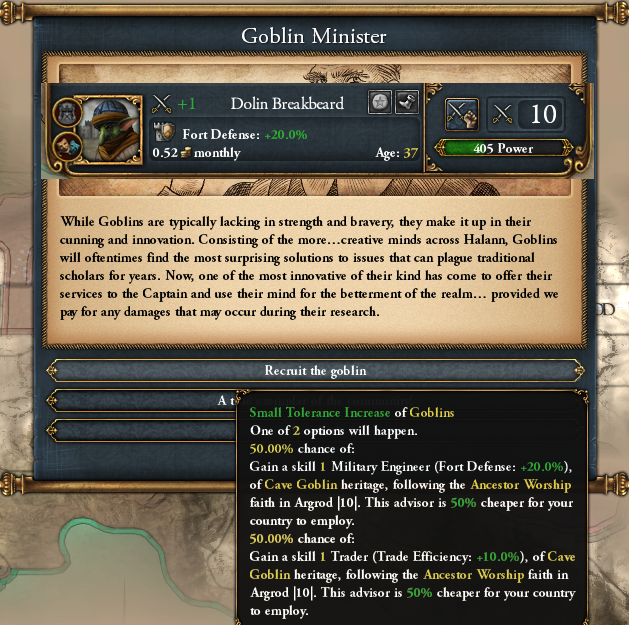 The most unusual member of Blackbeard's retinue As the cartel departed from the vicinity of Ovdal Lodhum, they were left with the warning that all orcs and goblins were to be purged. No such creature ought to be tolerated in dwarven territory. Despite years of fighting against both, Blackbeard couldn't entirely agree with that outlook. It was true that the hostile ones needed to uprooted, but there were many secrets within the Dwarovar and not all of those lay within the hands of dwarves. This was affirmed when the cartel encountered the Breakbeard tribe. They were a minor group of goblins that had settled in small cavern and built it into a miniature hold, and even turned to a form of ancestor worship similar to the dwarven religion. As they didn't present an immediate threat Blackbeard was willing to negotiate with them for information, and during that time a goblin by the name of Dolin insisted on signing up, saying that he was eager to see more of the world beyond his walls. He brought with him much needed experience in building actual structures underground, something that was sorely lacking in the mostly surface-originating members of the cartel. 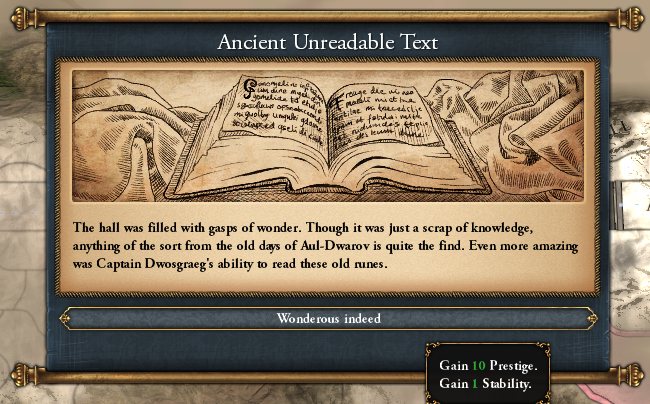 And thus he spoke "Auirus" Throughout the journey, Blackbeard sought out any knowledge that they were able to uncover. He studied ancient runes whenever he had a moment's peace from the administrative workings of the cartel. And yet, when faced with a rune that he had no idea how to pronounce he still had to take a stab at it. As luck would have it, everyone in attendance of the study session agreed that he had pronounced it correctly. This event gives you several identical options. Hope you are good at guessing, or you get a stab/prestige hit instead.  The occupiers of Verkal Skomdihr The next major obstacle on the path west was much more ramshackle than the barricade the garnet dwarves had set up. The scouts were driven off by packs of goblins who looked like they were setting up a permanent settlement along the rail line. Consulting ancient maps, it was determined that the goblins were probably squatting in the lost hold of Verkal Skomdihr. Even if the cartel managed to fight their way through the barricade, they could not allow a hostile horde to lurk behind them building strength and occupying ancient dwarves homes. Plans were drawn up to attack. Monstrous nations, i.e. orcs, goblins, trolls have powerful CBs against non-monstrous nations, and vice-versa. Indulging in such CBs makes it harder to remove monstrous status. 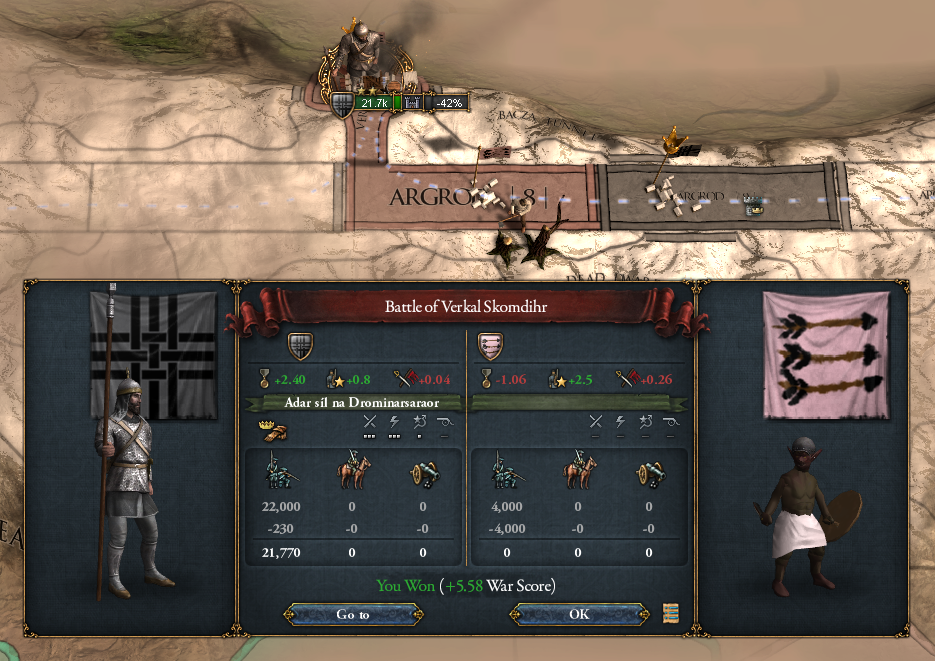 The goblin rearguard is crushed Battle was joined in Verkal Skomdihr, and the goblins were roundly crushed in surprisingly short order. Initial reports had said that the goblins outnumbered the dwarven forces, but the bulk of them were nowhere to be seen. Finally, as Blackbeard joined a scout team poking their heads out onto the surface, seeing natural light for the first time in years, the reason became clear. The Deepwoods, an ancient woodland infused with fey magic, had encroached to the very doorstep of the hold. More than twenty thousand goblins had marched into the trees, perhaps intending to ambush the cartel forces, or retake the hold after the dwarves left. However, no goblins were in sight, not even sentries. Warily, the dwarves retreated back into the hold. 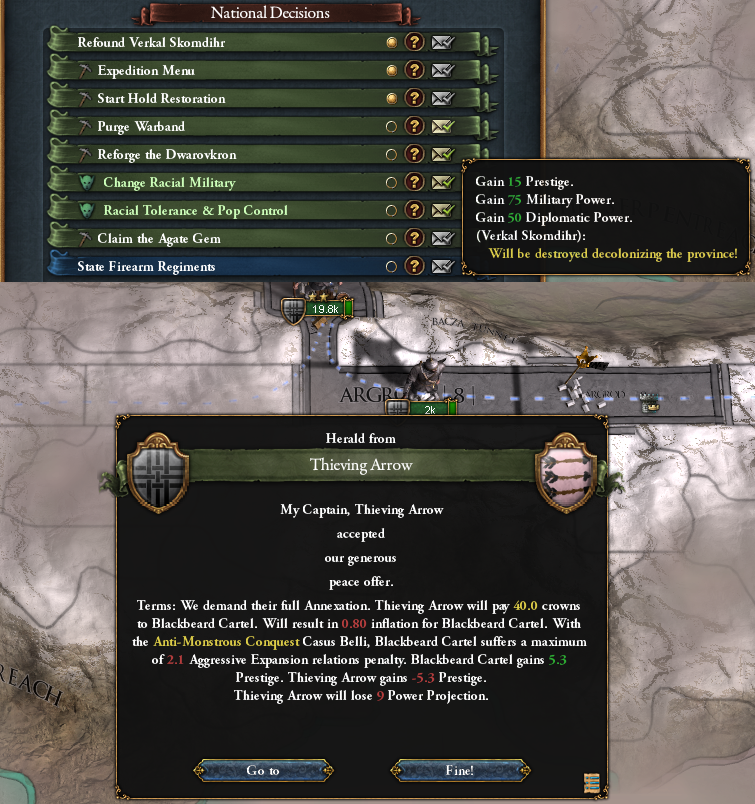 Verkal Skomdihr is cleansed Some of the cartel debated settling in Verkal Skomdihr and rebuilding the hold to use as a base for further reclamations, but Blackbeard vetoed the idea. The Deepwoods were too unsettling. He would only ever return here if he had a safe home, far away from that fey canopy, to return to should something emerge from that treeline. The horrors of the caverns were something dwarves were used to, but not the horrors that could come from an alien realm like that forest. The remainder of the goblins squatting in the hold were driven out, earning a good deal of loot and weapons in the process, and the cartel soldiers returned to camp to continue the rolling move towards the western holds. We get a nice little bonus for clearing out this pack of goblins, but since we still have a long way to go before we settle down it strategically ends up more to Ovdal Lodhum's advantage than to ours.  The introduction of clockwork crossbows bolster the cartel's combat power Development of military technology continued apace, with a combination of lost dwarven tactics and news from the surface of innovations within the Empire brought about a steady improvement to the quality of the cartel's forces. This is a good time to talk about racial militaries. As you can see from the technology, as dwarves we get unique units. Most races are in one or more unique tech groups that mean that each race gets units that are customized to their style of warfare. In our case, ours are more defensive. Additionally, each race gets a set of bonuses that more clearly define where their specialization lies. Dwarves specifically get worse navies, worse cavalry, worse manpower recovery, but in return are much better at sieges, holding against shock damage and artillery. Sadly we won't be seeing any of the latter for a while. 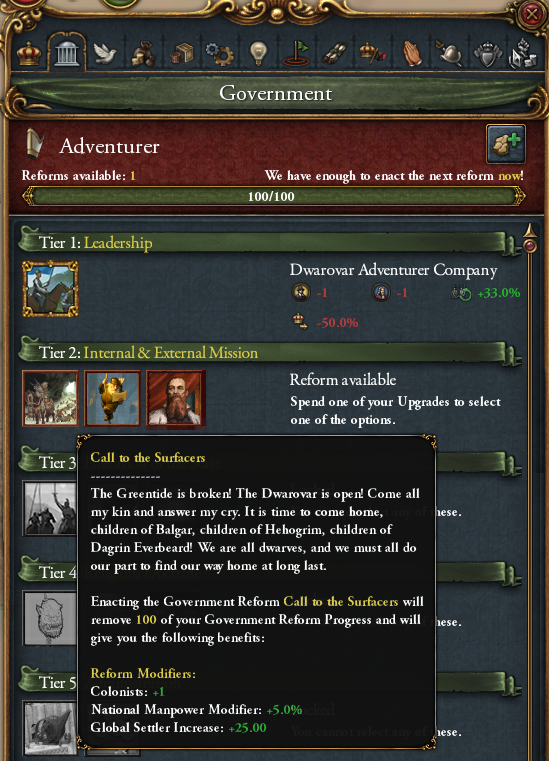 An influx of pioneers join the cartel The regular trade with the surface was seeing an increasing influx of dwarves joining from across Cannor, as news of Blackbeard's exploits spread. It was far from the only adventuring company to catch the eye of the public back in Silverforge, but news of the acquisition of the Diamond made Blackbeard by the most talked-about dwarf since the reclamation began. On the other side of the coin, the new settlers arrived impatient to settle down, complaining constantly about the conditions within the camp and eager to find a proper, solidly built home to populate. We get a colonist, but can't use it until we're ready to settle down. This will help us once we do arrive, at least. 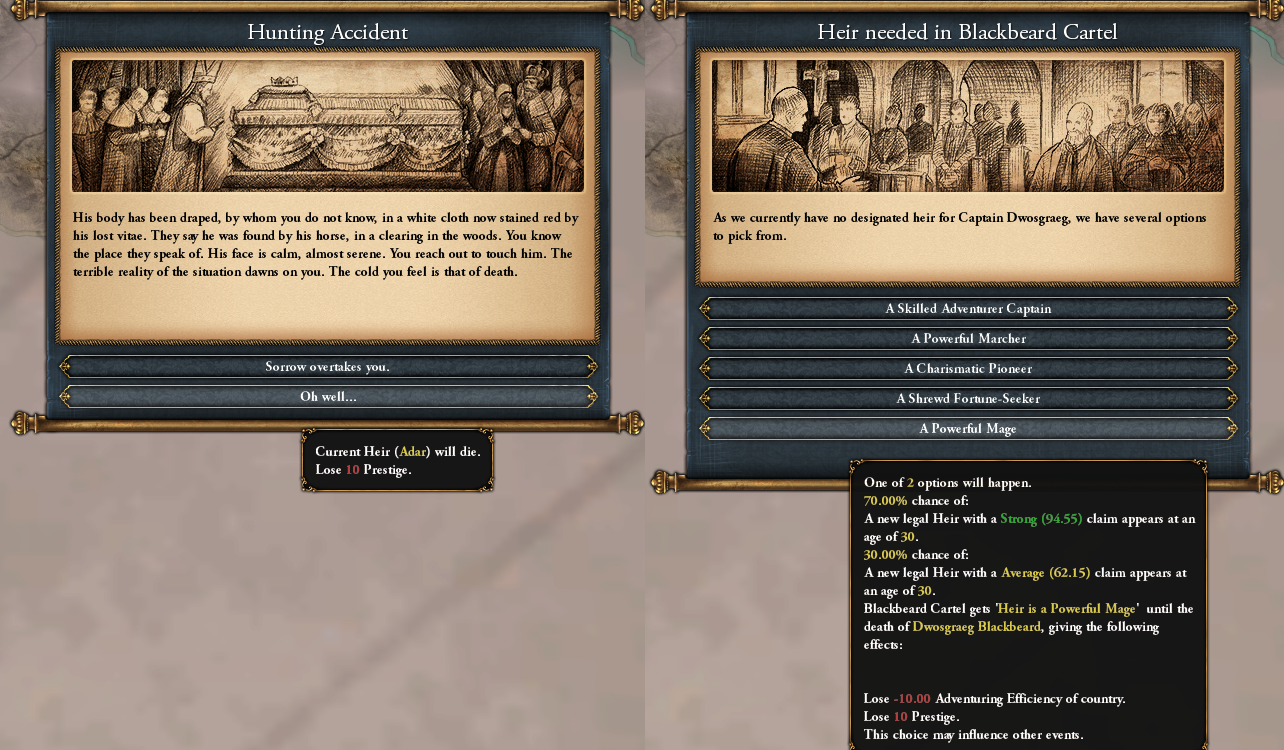 Death can strike suddenly underground Tragedy struck the cartel when Lieutenant Drominarsaraor was killed during a hunting trip out in the caverns. His skill as the frontline commander of the cartel's forces would be sorely missed, and all the work that Blackbeard had put into making him a worthwhile successor should the worst happen had been wasted. There was much debate and jockeying for power among the factions within the cartel as they sought to install a replacement sympathetic to their causes, but Blackbeard sidestepped all of them by elevating a promising young dwarf who had shown magical potential, by the name of Balin sil Ballgarionn. His reasoning was that the cartel now had a wide range of experience across the military, diplomatic, and administrative fields, but it did not have any true access to magic. Building a proper mage guild within the cartel would be Balin's task during his time as second-in-command. This is interesting. There are a few ways to get a mage in charge of your nation, and this is one of them. Unfortunately, we can't interact with the ruler magic mechanics while they remain an heir, and Blackbeard still has another 100-ish years in him. 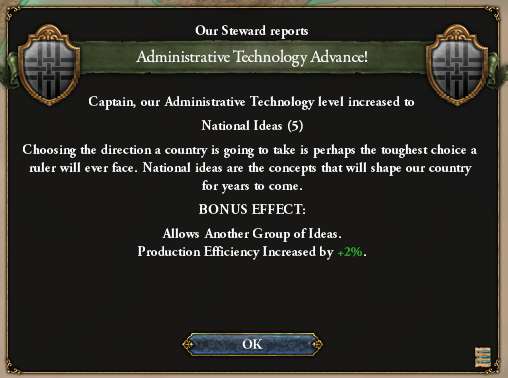 An uncertain direction The cartel was continuing to grow in numbers, and the pressure was mounting on the administration to deal with the population, the economy, and the military all at once. It was coming to the time when a proper direction for their future would need to be selected, but Blackbeard refused to come to a decision until they had settled in a hold. 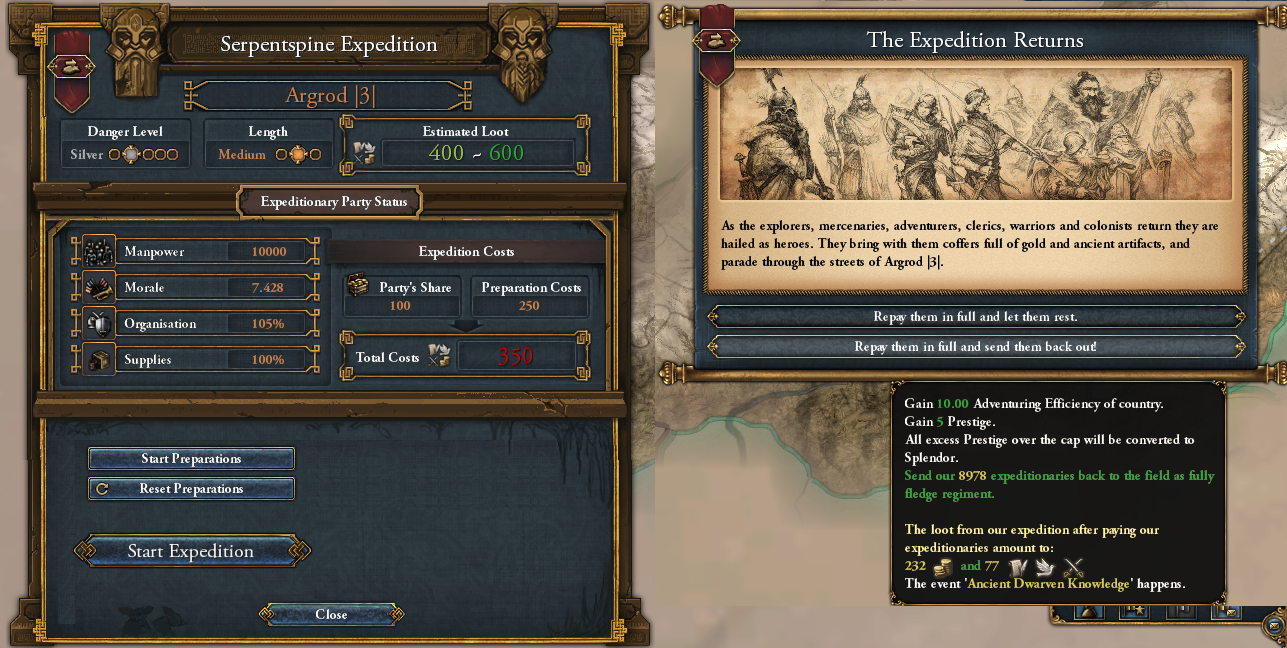 An expedition returns, but only with enough to cover costs Expeditions continued to plumb the depths of the Dwarovar as the cartel steadily pushed west, although none of them were as dramatic as the first major one that brought back the Diamond Gem. An excess of caution in some cases meant that the amount of loot returned was less than was spent on the preparations in the first place. 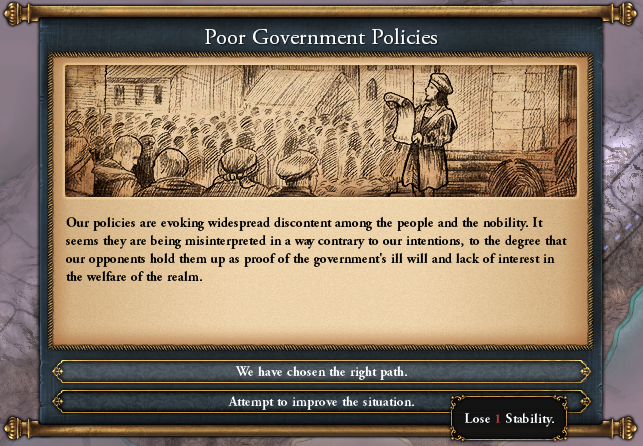 Rising tension Pressure mounted on Blackbeard to come to a decision on settling the cartel, and conflicts between the pioneers and the other factions flared up again and again. It was only Blackbeard's firm hand and the loyalty of the military that kept the cartel from fracturing and countless dwarves splitting off. 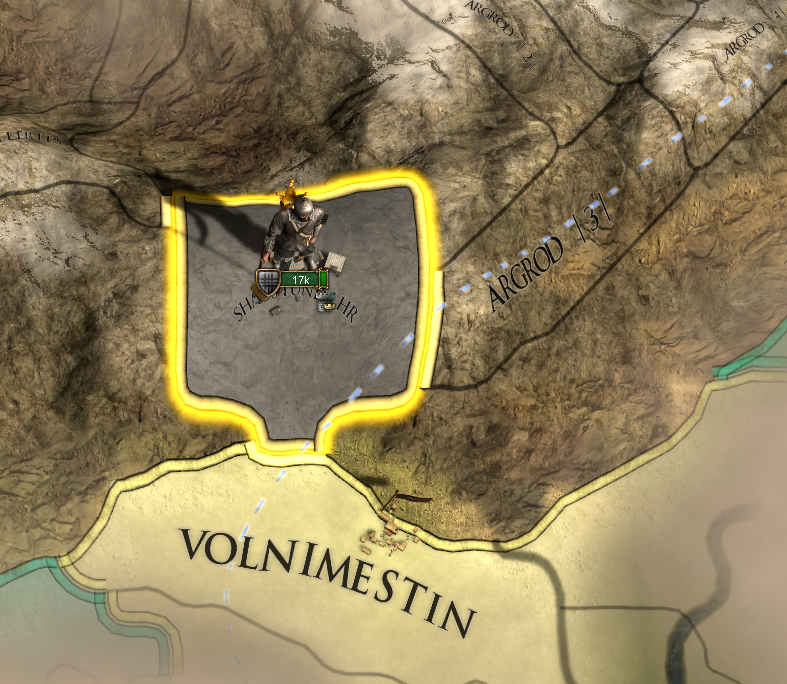 Shazstundihr, ruins of marble The next hold that the cartel arrived in was Shazstundihr, and for a moment Blackbeard contemplated settling down and making this his capital for further reclamation. Those hopes were dashed, however, when the gates were pushed open and the state of the interior was seen. It was a ruin, moreso than any other fallen dwarven settlement they had ever seen on their journey so far. The marble constructions that made up the interior were practically dust, and the only habitable dwellings were ramshackle shacks set up by goblin squatters. It was almost as though something had caused any sign of civilization within the walls of the hold to be scoured away. After some deliberation, the cartel agreed with Blackbeard's decision and moved on. There were still other holds to locate within the Reach. Of course, the voters had to pick the hold that was as far as possible from the nearest dwarf adventurers…still further to go. 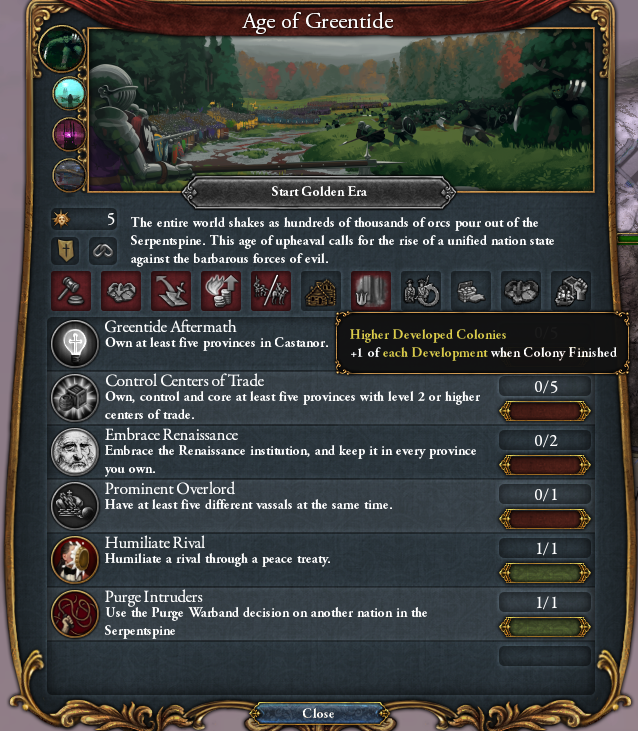 Innovations in cavern-dwelling Even though they never settled in one place for long, the pioneers that had accumulated within the cartel were getting more and more experience in clearing and developing the rail lines and caverns of the Dwarovar. Such skill would be invaluable once the proper resettlement began. One thing I like about the age objectives system in Anbennar is that there is a lot more availability in age abilities depending on your location. For example, three of those four greyed-out options are available to Cannor nations, Escann nations and members of the Empire respectively instead of the vanilla one-per-nation. 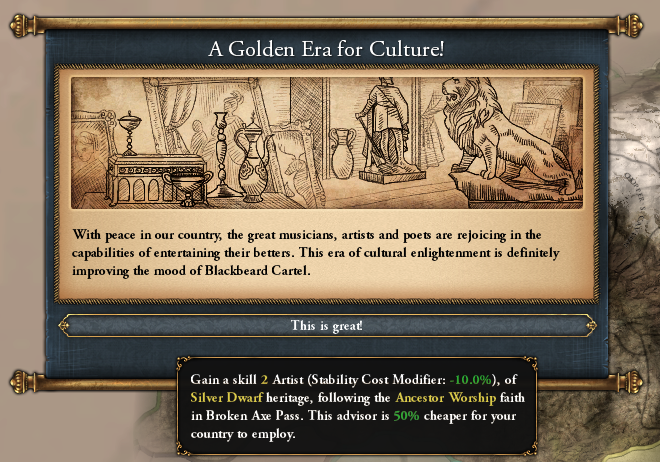 A fusion of ancient and modern dwarven culture There was more than just discontent among the many cartel members. The steady flow of new arrivals bringing songs of the great victories being won in Escann and of the dramatic conflicts within the Empire combined with the resurrection of long-lost dwarven art and music uncovered by explorers, leading to a mingling of old and new. The cartel was comfortable enough that artists could flourish, and a new age of cultural development blossomed in the camps. 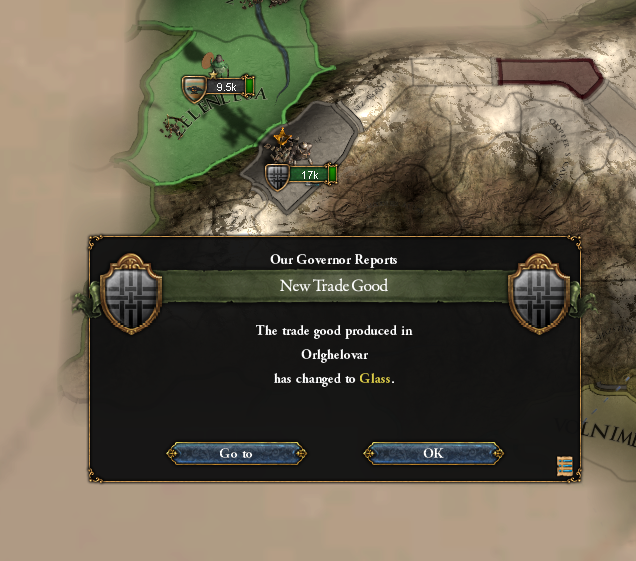 Home of the Glass Lords After years more of trawling through caverns in the westernmost parts of the Reach, cartel scouts reported the discovery of another hold, though one infested by orcs. Blackbeard joined the party tasked with clearing the entrance, and after cutting down the orcish sentries they entered into the hold proper. The dwarves were stunned by what they saw within. The towering central halls of the hold were ruined, but in spite of that they shone with a brilliant blue gleam. Ancient mechanisms redirected sunlight into the hold, and while they were mostly damaged and smashed there remained enough mirrors and lenses to filter a portion of the light inside and illuminate the cobalt-blue glass that adorned every structure. Even in ruins, it was beautiful. This was Orlgehlovar, the Glass Hold, the home of brilliant glass crafters, of a university containing reams of knowledge from the ancient times, and countless laboratories and workshops where the original cobalt dwarves dove into developing their understanding of the world. 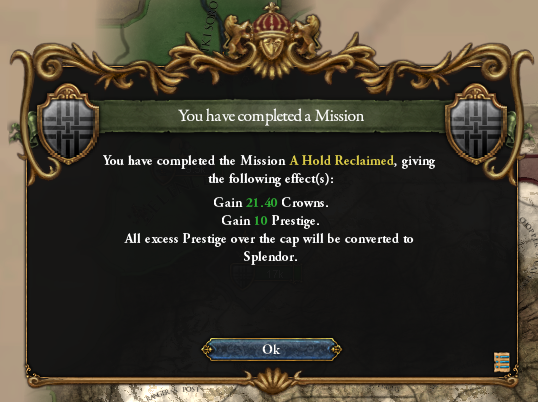 Now home to the Blackbeard Cartel Blackbeard returned to the cartel camp and made his announcement. They had found their home. To be continued… Votes There are two votes to be had this time. First Vote: Our first idea slot is currently sitting open, and we are highly likely to pick up the second in the next update. Please vote for two options, each from different categories below. The most voted in different categories will be selected for the first and second idea groups. Besides game effects, this will also affect our disposition as we go forward. Admin A: Expansion – Reclaiming the Dwarovar is our highest priority! B: Innovative – We have claimed the hold of science, let us begin our study. C: Economic – A strong economic foundation is required to ensure that our hold prospers. Diplomatic 1: Trade – A strong economic foundation can be found by engaging in trade with our brethren and the surface dwellers. 2: Influence – The remnant holds should be brought under our control to extend our influence across the Reach. 3: Espionage – We should root out those who might sabotage our new beginning, and start to build our own secret networks. Military: I: Quality – Dwarven warriors are the finest in the world! V: Quantity – The dwarven diaspora should be called upon to fill our ranks with eager soldiers. X: Defensive – A dwarf's greatest asset is the walls that they have built to protect their kindred. Second vote: Once the hold is officially re-founded, the government will need to be re-organized into a proper administration rather than a gaggle of adventurers led by military strength. What form should this take? Monarchy – Blackbeard's possession of the Diamond Gem is a sign from the ancestors of his right to rule! His foresight and skill will support the hold for decades to come. Clan Republic – Putting all faith in a single throne risks stagnation. Allowing debate and the ascendance of different clans ensures regular fresh blood in the administration. Merchant Republic – The Blackbeard Cartel would never have made it this far without the merchants supporting it. They should be given the opportunity to lead us to a wealthy future. So, to sum up, a vote should look like: 3V, Monarchy as an example The vote will last 48 hours Sybot fucked around with this message at 20:21 on Mar 5, 2023 |
|
|
|
Kanthulhu posted:Some people are voting for three idea groups instead of 2 as was requested It's no big deal, it's my fault for not making it clearer in the post. I've added an example vote that should hopefully do that. There's no need for people to go back and change their votes if they don't want to, I'll work something out if it causes weirdness in the final count.
|
|
|
|
In a slight defence of Expansion as a option, our Adventuring Efficiency bonus pays for one colony by itself. The plan would be to spend a bit longer as adventurers and build up a proper economy before forming the hold making use of their extra income, discount on unit maintenance, and turning admin and mil mana directly into money via expeditions. Money would be tight running two colonies from the get go though, so it would still be risky. eta: Xerophyte posted:Doesn't the Orlgehlovar mission tree have Opinions on what sort of government you should be? I vaguely remember it forcing a particular approach, but I could be confusing it with one of the (multiple) other dwarf holds whose MTs do that. I just took a look and you are correct. This is partially on me for not deeply investigating the tree myself before starting up the LP. I'm mostly blind as to what it contains. However, it doesn't look like any of the government choices will break the mission tree, so I am happy for the vote to continue and let the narrative deal with the fallout. Sybot fucked around with this message at 23:35 on Mar 5, 2023 |
|
|
|
AtomikKrab posted:I dug too deep too quickly, everything EVERYTHING is on fire and I'm in debt for the next 100 years or so, but its been great so far, would continue to do this stuff. Psh, surely there's no such thing as 'too deep', only fun stuff that has been too long hidden. The votes after 24 hours stand as below. At the moment Innovative, Quality and Clan Republic are leading and voting has slowed down enough that it will likely end that way, but there's still a whole day to go. A: Expansion - 8 B: Innovative - 12 C: Economic - 2 1: Trade - 3 2: Influence - 4 3: Espionage - 1 I: Quality - 10 V: Quantity - 3 X: Defensive - 4 Monarchy - 6 Clan Republic - 13 Merchant Republic - 3
|
|
|
|
The final votes haven't changed much, so we will be going ahead with our first two idea groups as Quality and Innovative, and will be switching to a Clan Republic once given the option. Gameplay-wise, this means that we will be focusing on having a smaller but more elite army when given choice in the matter, and focusing on keeping up with technology and ideas and aiming to max out our Innovativeness.
|
|
|
|
We're lucky in that we're probably the 3rd best hold for naval dwarves without border gore, after Shaztundihr and Ovdal Tungr. If people are really that interested then I might actually slip in Naval or Maritime (I know, I know...) to future votes once we have coastal access and see if the thread as a whole wants to pivot to a dwarven naval empire (mission tree permitting).
|
|
|
|
Soylent Pudding posted:e: since we're unlocking a new unit type could we see the pips of the old and new units? I'll bear that in mind for future, and as for the new units this update they look like this:  I went with Tortoise Formation for better survivability against orcish shock. We won't be using cavalry so I'll skip showing those, and Artillery, when they appear, will be the same as vanilla (with one exception that may come up)
|
|
|
|
Chapter 3: Reclaiming and Expanding 1465-1480 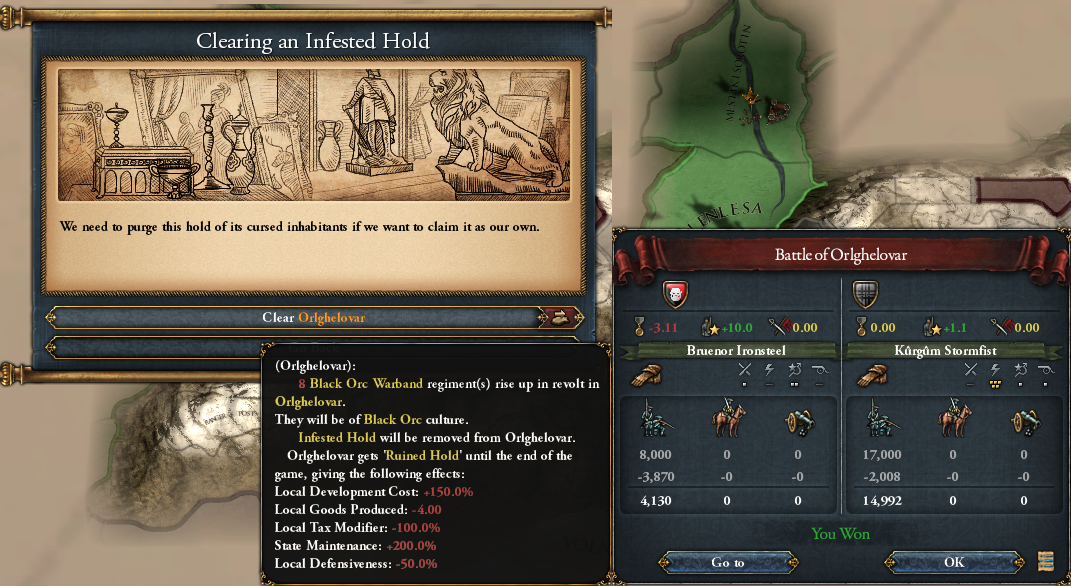 The Battle of Reclamation With approval from the rest of the cartel, Blackbeard returned to Orlghelovar with the full force of the strength at his disposal. The orcs were already aware of the loss of their sentries, and met the cartel forces with a ferocious defence. In the tight confines of the hold, it was a bloodbath, as the fortifications and key structures had to be cleared room by room. Only after losing half their number did the orcs retreat deeper into the hold, while the dwarves began to count their thousands of dead. Hundreds of orcs were taken prisoner, and hundreds more non-combatants cowered in the ruins of the hold as the dwarves swept in and secured the remainder of the uppermost layer of the hold. Blackbeard ordered the survivors to be spared, so that their labour could be used to rebuild what they had pillaged. There are three levels of damage to a hold. Infested, Ruined, and Damaged in descending order of seriousness. The worst level, Infested, requires a purge of the local inhabitants to take it up to merely ruined. 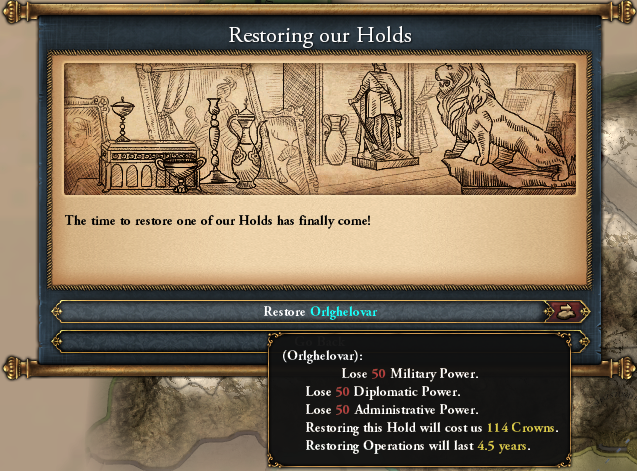 The Cartel pours resources into the rebuilding effort The first order of business was to see the Orlghelovar returned to some semblance of habitability. Dwarves expected a level of comfort and civilization that was a step up from what had been set up by the orcs. Canvas hovels and wooden structures were dismantled, while stone structures were rebuilt using the remains of those buildings that were too far gone to be salvageable. Work began on repairing the outer fortifications, which had been damaged during the reclamation in addition to thousands of years of neglect. While work began, the cartel camp moved within the walls of the hold and immediately began to spread out among the buildings as merchants sought shopfronts, artisans sought workshops, and everyone tried to claim the best homes. It was only Blackbeard stamping down on squatting that kept it from dissolving into chaos. Any dwarf who tried to claim more than their fair share was drafted into the rebuilding efforts until their claim was considered paid off. Luckily, there is only one step to go from either Ruined or Damage back to normal functionality. However, the cost escalates depending on how developed your Hold is so you really don't want to take damage to your core holds. 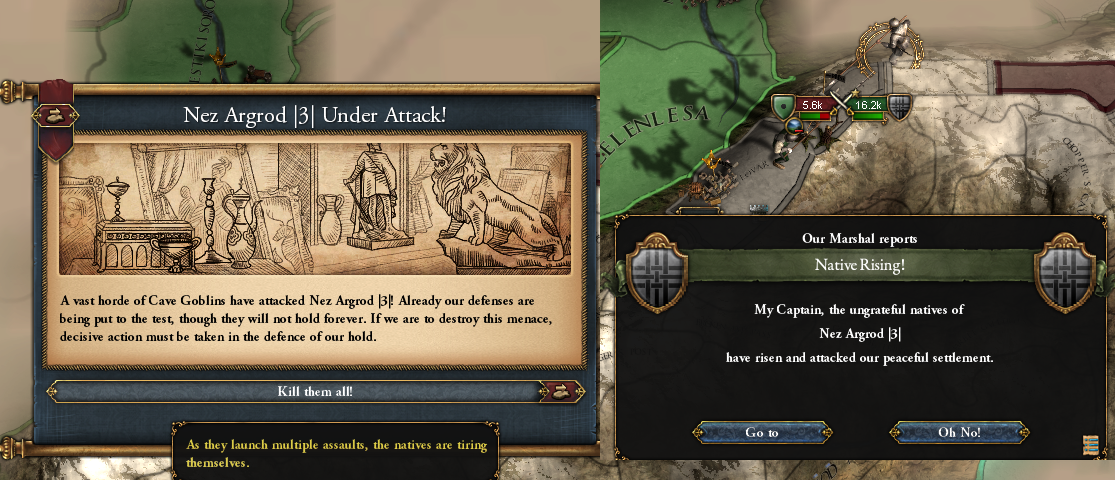 Goblin raids on the rail line Those who didn't want to involve themselves in the free-for-all within the hold, instead sought to establish themselves out in the tunnels of the Dwarovar. Blackbeard sponsored the colonists and provided military support as they began to push down the Argrod rail line, this time working to set up permanent dwellings and seal off any side tunnels that might lead to goblin or orc incursions. Without the sheer size of the cartel's full camp to intimidate them, the goblins were far more bold. Seeing the colonists as easy pickings, they launched constant raids from the shadows that could only be beaten back by the strength of fully armed cartel regiments. Native uprisings are very common as you colonize, you don't get much in the way of assimilation bonus, and it is very expensive in mil mana to purge them. The only upside is that their numbers naturally decline as they throw themselves against your forces. 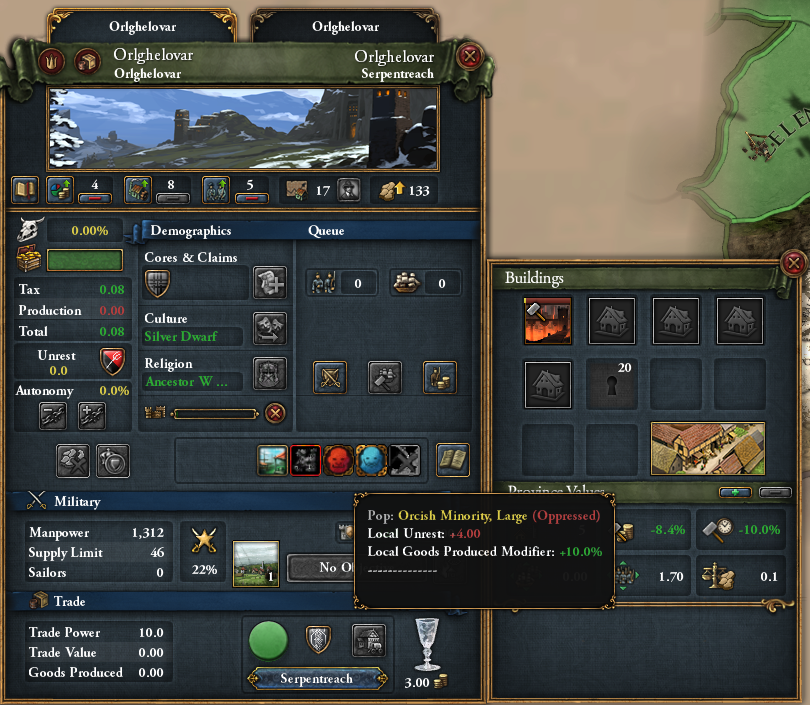 The underclass of Orlghelovar Throughout the restoration, the orc prisoners became a fixture of any role that required hard work. At first that was only construction, but as the economy began to develop, they could be found as haulers, miners and labourers of all kinds. They were very close to, if not in actuality, slaves, as they could either work or be denied their rations. There remained a general discontent with their situation, but the dwarves had proven their strength and had no intention of letting the orcs get the better of them again. Here is an example of a minority. Each province can have a minority at several different levels of size, and several different statuses from Integrated through to Oppressed, with the latter affecting what bonuses and maluses you get, and the former scaling those. For example, oppressing orcs makes rebellion more likely but we get to use them as cheap labour to boost productivity. 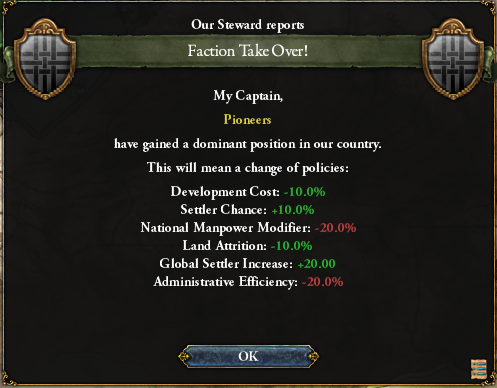 The administration begins to transition to civilian control The marchers, who had been the dominant force in the cartel for so long, were starting to fall by the wayside as the primary focus became resettling. The military was starting to be relegated to colonist guard duty. Blackbeard took the opportunity to give them a new focus to keep them occupied and reduce the risk of a coup or uprising. 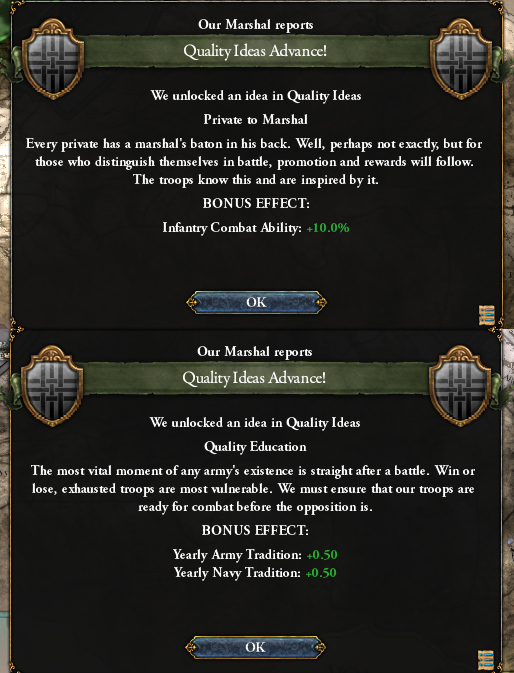 Lessons of Blackbeard's finest A military academy was established within Orlghelovar, where the cartel veterans could drill newly arrived dwarven recruits in the tactics that they had learned through blood over the years of travel through the Dwarovar. These are actually the only two Quality ideas useful to us right now, the rest are chaff until we hit the end of the idea group. As you might imagine, cavalry and naval bonuses don't really help while you're still inside the mountains. 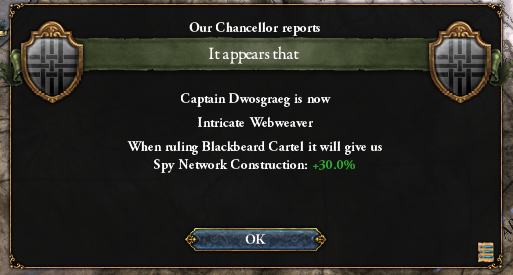 From Adventurer Captain to Politician Having had to manage the competing interests within the cartel for decades had rubbed off on Blackbeard. Where once he would have focused on leading from the front, joining the parties out on expedition and exploring alongside the scouts, he now found himself more and more behind a desk, doing his best to keep the cartel from descending into factional squabbling. What concerned him the most was how he was finding that he had a knack for it. 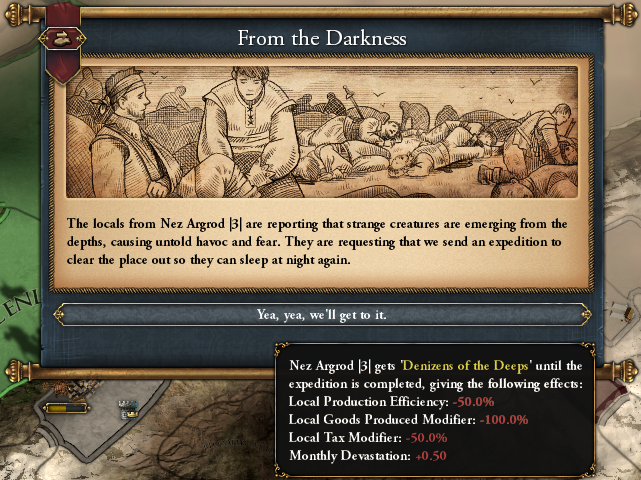 The deeper darkness Orcs and goblins were not the only risks the colonists faced as they pushed their way eastwards. Creatures wreathed in darkness crawled out of narrow passageways and terrorized the civilian dwarves, and always found a way to retreat before soldiers could respond. The cartel could not spare the troops to chase the darkspawn back to their lair, as there were reports of a significant orc warband further down the tunnels. This left the civilians to abandon many of their workings and retreat to fortified settlements to wait out the attacks. 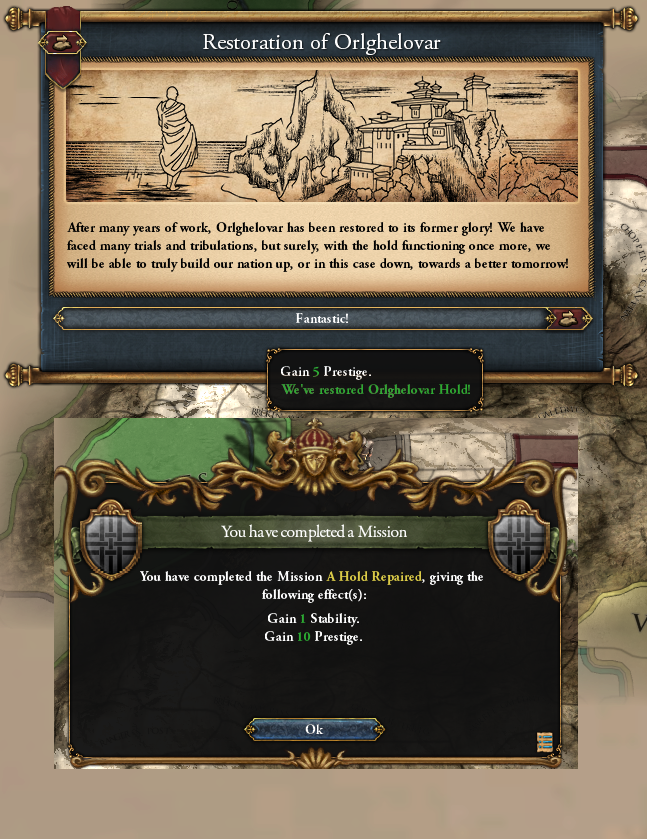 The Glass Hold restored In 1469, after 4 years of hard work from dwarves and harder work from orcs, Blackbeard declared that Orlghevar was restored to the level to become a proper dwarf home. All the ruins had been cleared, the defences were fully manned, the residential areas were fully populated, and the economy was in full swing. A festival was held in the central square, with every dwarf given the day off from their work to participate in the celebration. The great stone structures, rose around them, glittering with blue glass artwork that had been assembled from the ruins by the countless artists who found themselves enthralled by the beauty of the hold. 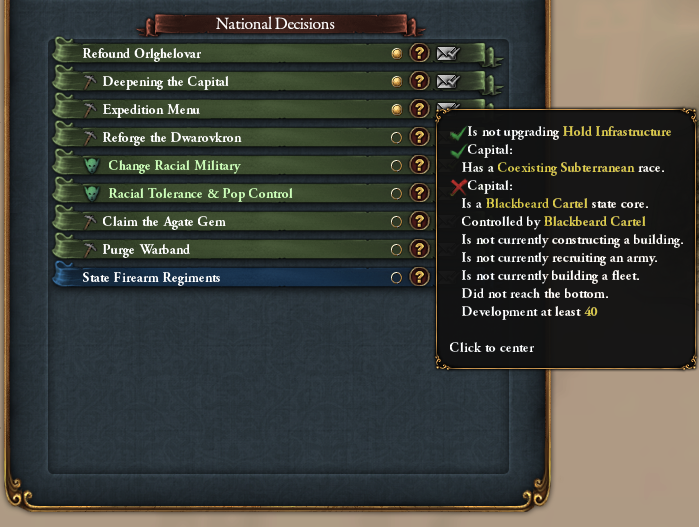 But it could be even greater Blackbeard was not one to rest of his laurels, however. While the hold was functional, it was far from the heights that it had been in the ancient past. They hadn't even been able to produce the fabled cobalt glass yet, being forced to rely on scavenging whatever hadn't already been looted. There were still many layers to the hold that had been lost, some of which might be occupied, some which might have collapsed, and others which would need to be carved out by dwarven skill. We are finally here. This is how you really dig deep and greedily. Each hold has a level associated with it, representing how deep it goes into the mountain. In order to increase (or decrease?) the level, you first need to have a subterranean race either as your primary, or at the coexisting level of integration. We're dwarves, so that's no problem for us but external invaders (including orcs, but not goblins) will struggle. Then, you need to have the requisite amount of development in the hold. Each level of hold gives a cost reduction to developing the province, so it is actually feasible to develop the province up to insane levels. As to what you can find down there, we'll have to see… Holds other than the capital have other ways to dig that we'll see later. 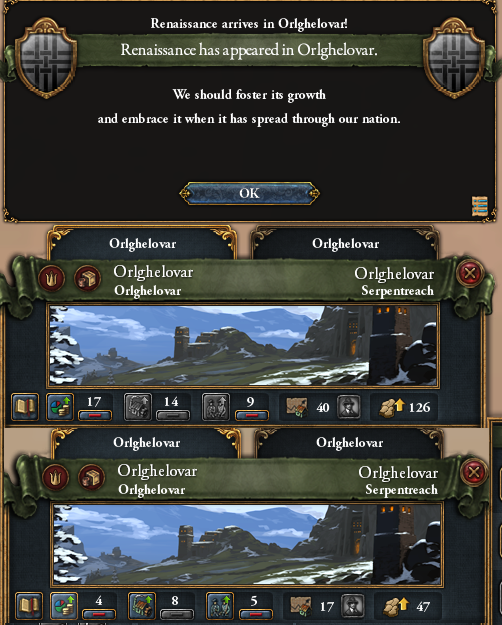 The rapid growth of Orlghelovar Facing a monumental challenge, Blackbeard turned to his old sponsors back in Silverforge. The call went out for any dwarf who wished to build their fortune in a rising star of the Dwarovar. A large portion of the cartel's coffers was drained, and everything that could be traded was, to ensure that talented dwarves would be drawn to Orlghelovar, and not one of the other holds that were rumoured to be re-establishing themselves in the northern mountains. These dwarves brought with them knowledge of new architectural styles and techniques that were gaining traction in the Empire, leading to those ideas being integrated into new halls and plazas that were being carved out as quickly as they were populated. 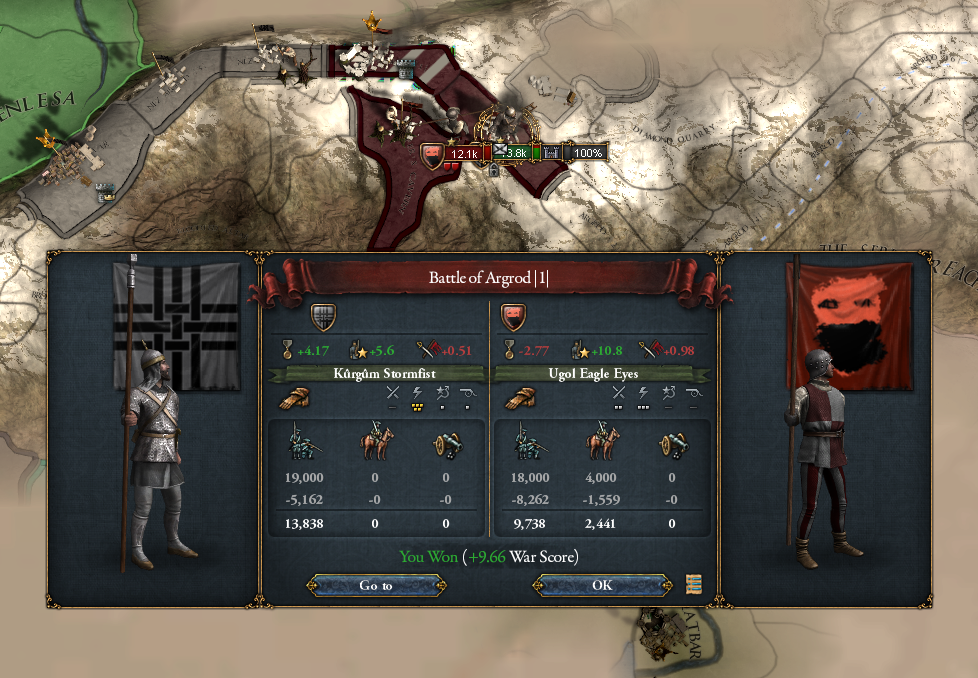 The Battle of the Sealed Gates Meanwhile, Lieutenant Stormfist, a skilled tactician recently discovered by the military academy, lead an expedition to drive out a massive warband of orcs populating the Argrod. While large in number and making use of thousands of quaggoths, large and barely-sentient cavern dwellers, as shock troops, they were defeated. It was another victory won in blood though, as several layers of shield walls were breached by the dangerous beasts who then proceeded to tear dwarves apart by the hundreds. The battle itself was fought in front of a massive set of gates just off the rail line. Based on damage, it looked as though the orcs had been trying to breach it when cartel forces arrived. 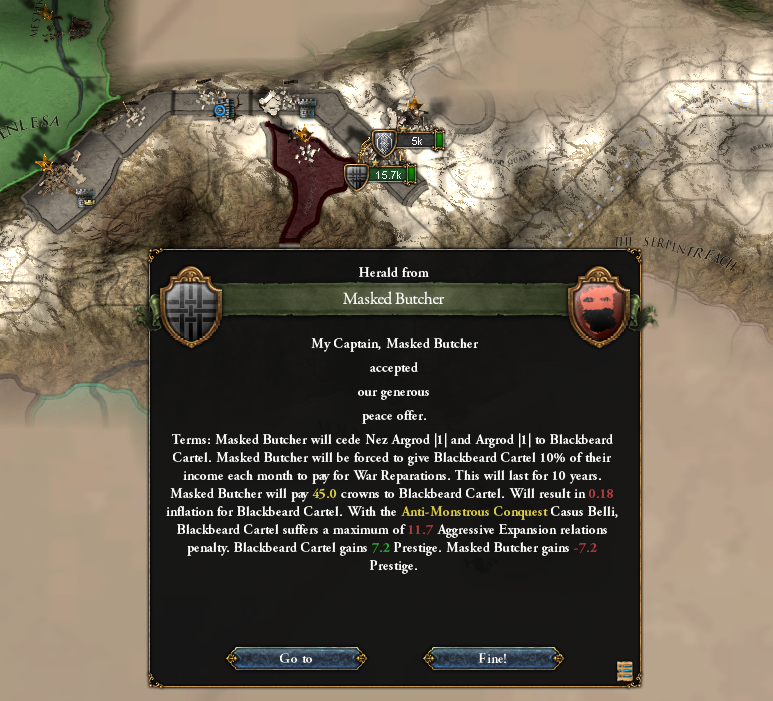 At the gates of the Diamond Hold After completing the task of driving the orcs off the rail line and away into the caverns, Stormfist carefully knocked on the doors of the hold that he had discovered. He was met by richly-dressed diamond dwarves who were representatives of the ruler of the hold, Queen Ardeginn XXII. This was none other than Arg-Ôrdstun, the de facto capital of the Serpent's Reach. Initial pleasantries were exchanged, and the negotiation of the cartel's right to travel the Argrod seemed to be going smoothly. The Queen's party was happy to hear that the orcs were being driven out and the surface dwarves were making a concentrated effort to reclaim the mountains, under the impression that the cartel was a war party engaging in a rolling purge. However, that changed when the Lieutenant revealed that the cartel had made Orlghelovar its base of operations and it was planning to re-found the ancient hold. Almost immediately the negotiations turned cold, and the diamond representative made clear that all the holds of the Reach were rightfully ruled from Arg-Ôrdstun and the self-proclaimed ruler of Orlghelovar ought to present himself to the queen to acknowledge his vassalhood. They were not pleased when Stormfist retorted with the fact that Blackbeard was holding on the very Diamond that once held by Arg-Ôrdstun, so if anything, it was his claim to be pressed on them. 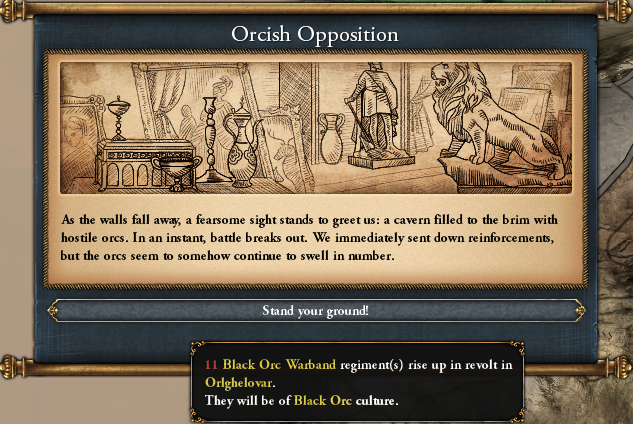 Remnants of the purge rise up As work continued on Orlghelovar, new caverns were uncovered and carved out. Some of those turned out to be filled with thousands of orcs, many of those being survivors of the original purging of the upper levels of the hold. After the first such incident, the digging crews took to establishing fortifications before each cavern breach so there wouldn't be quite so many dead before the cartel forces could mount a proper response. One of the events you get during digging spawns a whole stack of orcs or goblins on your hold. Better hope you have a decent fort or some troops on standby. 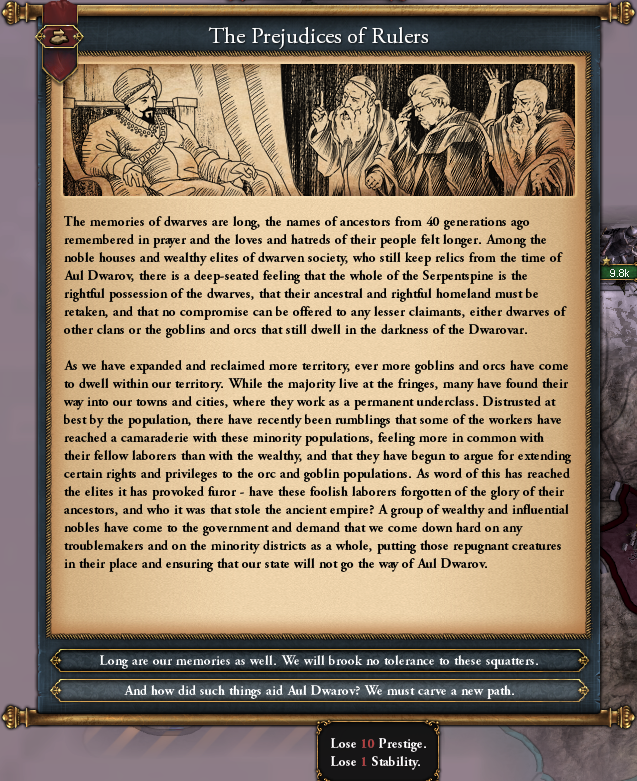 Tensions rise within the cartel over racial policy The cartel maintained a policy, held over from its time travelling through the Dwarovar, that peaceful goblin tribes could be ignored, and that orcs, once defeated, were to be subjugated as labour rather than purged. As the rising noble and merchant class within the Orlghelovar started to gain more of a political voice within the administration, they began to protest these policies. Their demands were that goblins and orcs alike were the very creatures that had brought down the Aul-Dwarov and as such should be removed from dwarven territory by any means. Blackbeard recognised their concerns, but was not of the same mind. Dolin the goblin remained a member of his inner circle, and had become quite the fearsome architect as he had assisted in rebuilding the hold's fortifications. If any other such intellects lay among the goblins and orcs, he wanted to avoid having them lost to a paranoid purge. While he repudiated the demands for the moment, he was no longer the absolute commander of an armed expedition but rather a ruler of a burgeoning nation and thus compromises might need to one day be made with the elites of said nation. 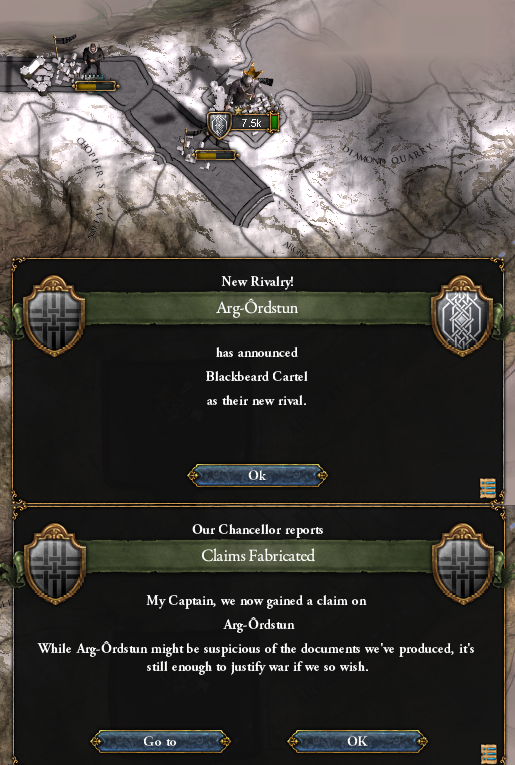 An exchange of insults After the frosty opening negotiations with Arg-Ôrdstun the two sides withdrew and debated their approach to the situation. Not wanting to have to fight any more dwarves after the near disaster at Ovdal Lodhum, Blackbeard considered trading back the Diamond Gem in exchange for favourable trade deals, an alliance and recognition of Orlghelovar as independent of Arg-Ôrdstun's control. With his surface contacts and control of the Argrod at least as far as Shazstundihr he could easily bring the diamond dwarves under economic hegemony. The decision was made for him when the next message from the Queen was a note demanding the return of the Diamond in exchange for him being able to keep his head. It further declared that the Diamond Hold had held for thousands of years, and would not be defeated by brittle glass upstarts. Naturally, Blackbeard responded by formally asserting his claim to the throne of Arg-Ôrdstun. 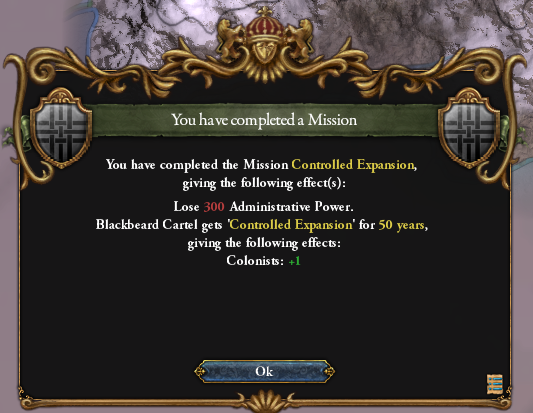 Expansion begins into the Cobalt Caverns While expansion along the Argrod was the top priority, there were also countless caverns throughout the western end of the Reach that needed to be secured. The orcs that had fled still dwelled within them, and there were many ancient mine workings and outlying settlements to be reclaimed and restored to start supplying the hold with the resources of the mountains. A second colonial enterprise was sponsored by the cartel to begin resettling these caves. Turns out Expansion would have been a pointless pick, as here is a colonist at a discount through the adventurer mission tree (300 adm for this vs 400 for the Expansion opener). Our economy is ramping up nicely thanks to deving up the hold and getting bonus dev on our settlements, so maintaining two colonies is no problem. 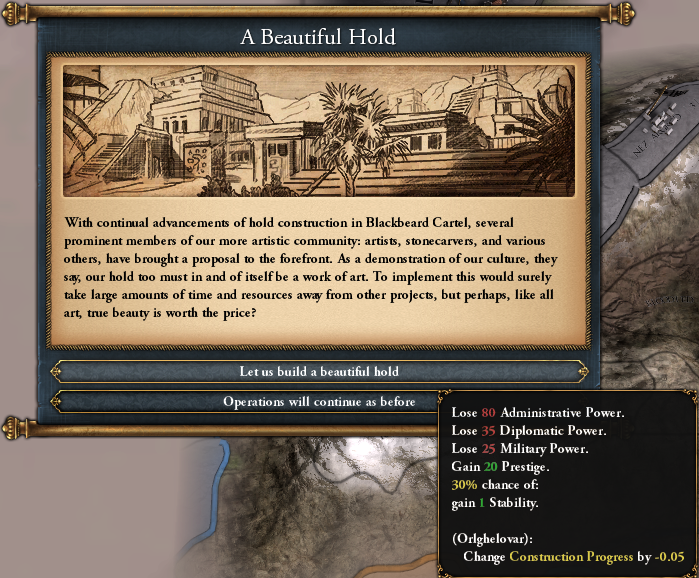 Rebuilding the shining glass city During the digging operations, Blackbeard made sure that additional resources were diverted to future-proof the new structures once glass production was back up to full strength. Fixtures were put up that would eventually be filled with beautiful glass artwork, lofty windows were carved out where dwarves could see a view of the whole layer, and shafts were constructed so that when the lighting mechanisms were repaired, the inhabitants would be able to enjoy natural sunlight. Another type of event you get throughout digging your hold, where you pay some price to get some bonus or to speed up the digging process. 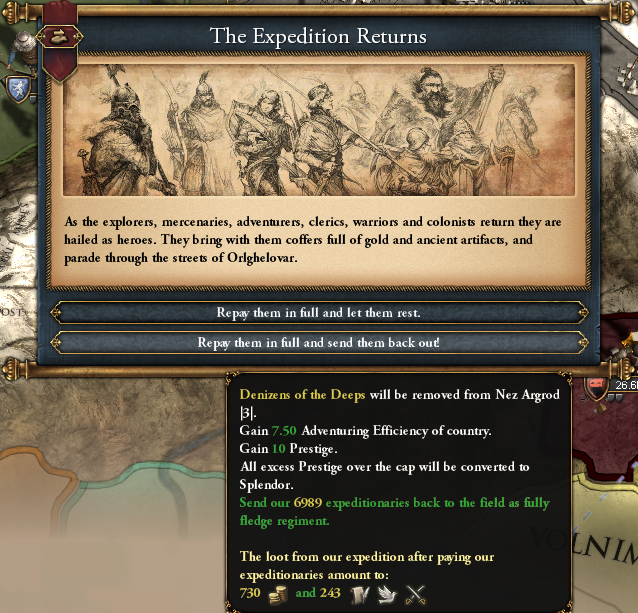 Darkspawn defeated While tensions remained high with Arg-Ôrdstun, any military action had been postponed because of the darkspawn situation that was still causing problems along the Argrod. Ten thousand dwarves had been dispatched deeper into the caves to root out the creatures, a full half of the cartel's armed forces. Deep, deep within a tunnel that was carved with runes that the party's most learned scholars were unable to read, they came upon the source of the darkspawn. A bulky dark-shrouded mother creature that appeared to be reaching out of some kind of magical portal was gathering huge quantities of wealth and resources around herself. While the expedition engaged her and her spawn, the magesmiths were able to force the portal closed, which killed her. The question remained as to why she had been hoarding so much loot, but the expedition was more concerned with returning to hold with all they had found. Now this is what a very successful expedition looks like. This means we won't be having money troubles for the foreseeable future and gives us a good kick towards the next levels of tech. 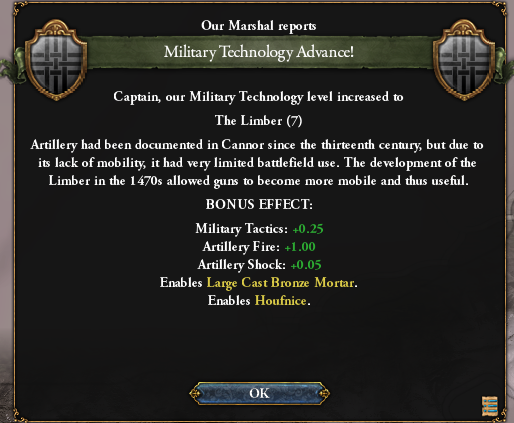 A different kind of glass cannon The foundries of Orlghelovar had reached a point where they could start producing proper cannons once again. Blackbeard commissioned a unit of these to assist in the coming war against the diamond dwarves. Their walls had held against primitive creatures for millennia, but could they hold against gunpowder? Artillery units are the same as in vanilla EU4. 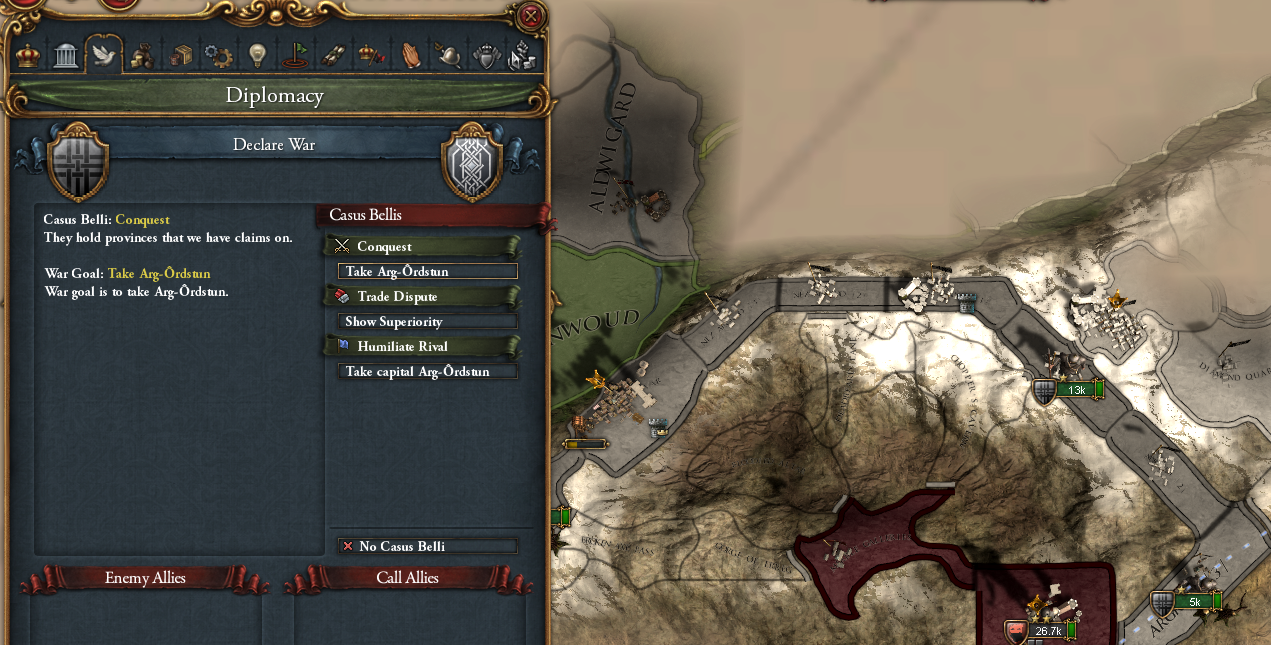 The War for the Crown of Arg-Ôrdstun begins in 1478 With the expedition returned and cannons on the field, the cartel forces commanded by Stormfist lay siege to the gate of Arg-Ôrdstun. Lieutenant Shaleaxe, a less experienced commander but fantastic scout, guarded the Argrod against a possible flanking manoeuvre and the orc warband that still lurked at the edge of dwarven territory. His reports had indicated that they had moved into Shazstundihr, which placed them next on Blackbeard's list to deal with once the diamond dwarves were no longer a threat. 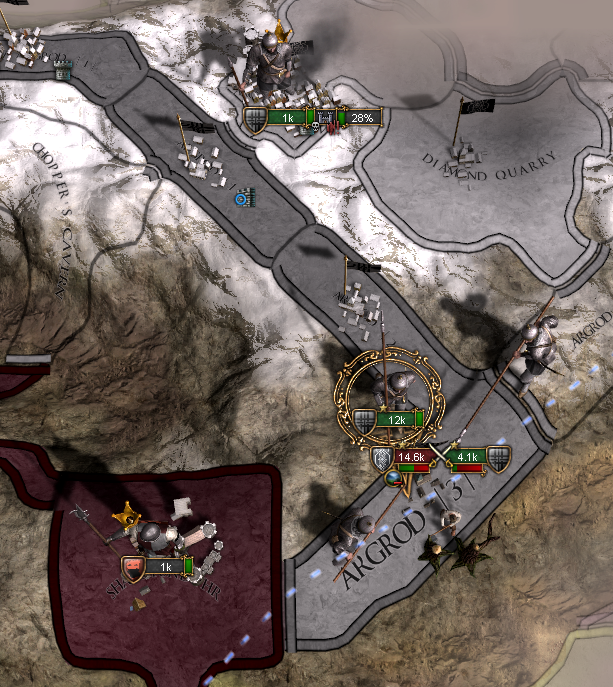 Flanking thwarted The diamond dwarves were no fools, and knew their gates would eventually break. They launched a flanking attack down the Argrod, but Shaleaxe had heavily fortified the tunnels leading eastwards and even after those were overrun fought a running guerrilla battle all the way along the railway, making good use of the side tunnels the cartel settlers had mapped but the diamonds were ignorant of. Though they were close to breaking by the time Stormfist's forces were able to relieve them, their bravery became the tales of legend within the military academy. 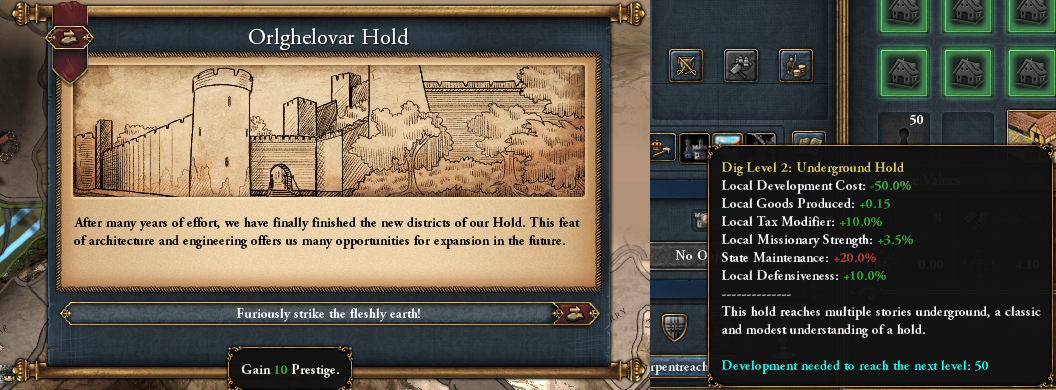 Orlghelovar expands into the earth After nearly a decade of work, the lower levels of Orlgehlovar were declared officially open. Dwarves suffering under the increasingly overpopulated conditions of the upper levels flooded into the new districts, and soon the sound of economic activity and ordinary life could be heard rising up from the deeps. 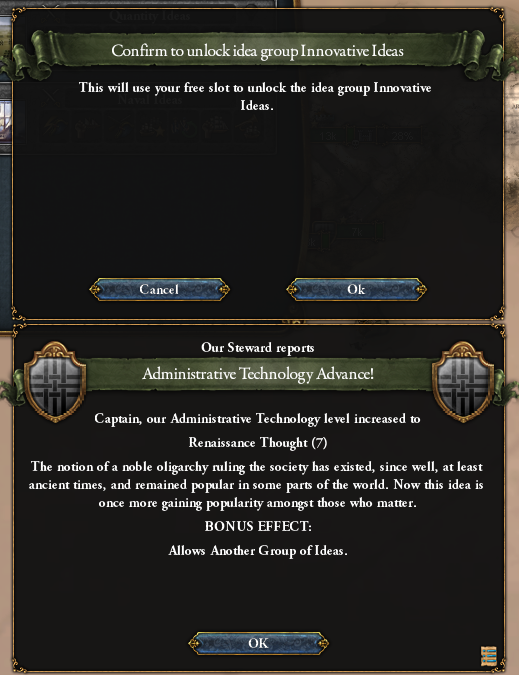 Rise of a hold of innovation Blackbeard had taken an attitude that innovation was most important quality that the new Dwarovar needed to avoid repeating the mistakes of the past. That was reflected in the attitude of the dwarves who took up residence in the newly developed layers. New techniques were developed in the laboratories and workshops and shared freely among the members of the trades, while knowledge that would have once been spurned as pointless surface-dweller distractions flowed swiftly in along with immigrants from Silverforge, Rubyhold and the other distant parts of the diaspora. 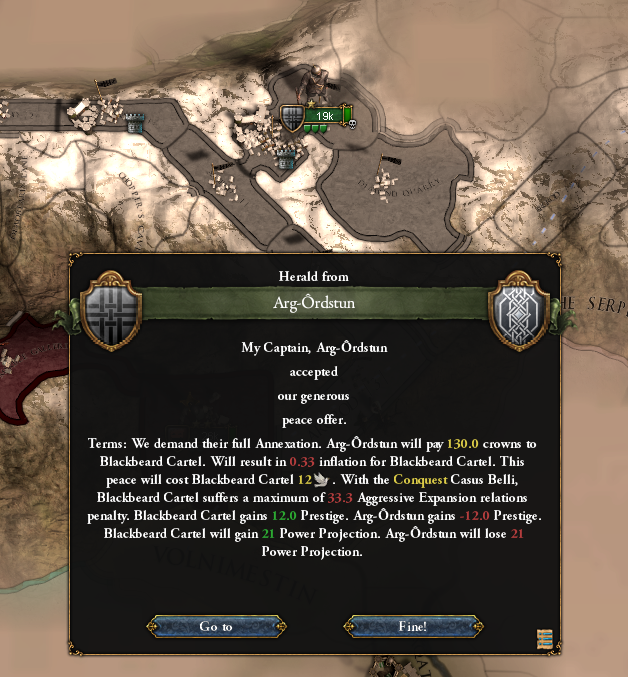 A Queen kneels Despite the use of cannons, it took two years to breach the defences of Arg-Ôrdstun. The bulk of their army had been lost in the caverns as their flanking attempt fell apart under Stormfist's counterattack, so once the cartel forces breached the fortifications they encountered no further resistance as they marched on the royal palace. The Queen had many strong words for Blackbeard when he arrived to accept her surrender. Scoundrel, bandit, goblin-lover, to put it mildly, were just some of the barrage that he suffered. In the end though, she was forced to hand over her crown. With a crown in one hand and the Diamond Gem in the other, Blackbeard began to wonder exactly what direction he wanted to go. Integrating the hold into the new nation would prove tricky. The diamond dwarves were suspicious of outsiders, but simply maintaining the existing administration was a recipe for resistance and rebellion in future. There had to be a clean break, on both sides, to avoid long-term recrimination. 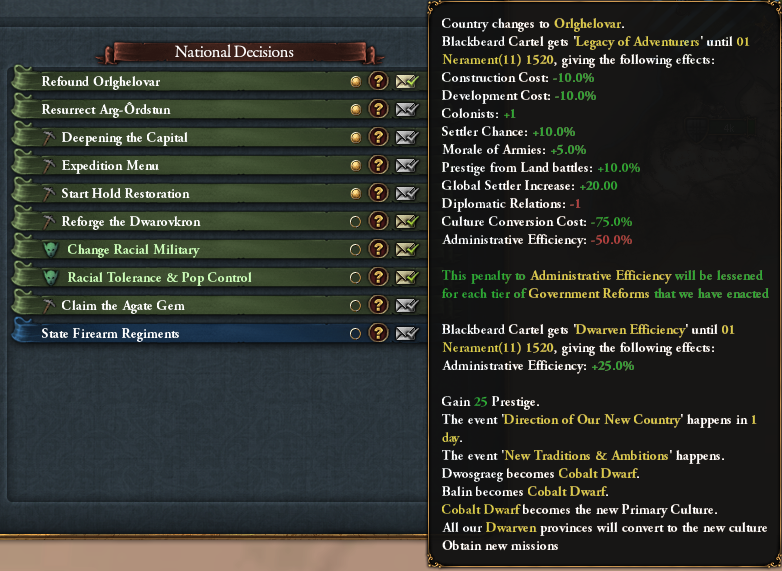 The Proclamation of Orlghelovar Upon his return to Orlghelovar, Blackbeard prepared a proclamation to be sent to every dwarf in the Reach, even distant Ovdal Lodhum, and to be further disseminated back to Silverforge. The dwarves of the Blackbeard Cartel had fought, struggled, lived and died in the pursuit of the dream of the reclamation of the Dwarovar. They were no longer silver, or ruby, or copper, or any of the other disparate cultures outwith the walls of the mountains. They had forged their bonds and become a single people, the Cobalt Dwarves. Orlghelovar was reborn, and with it a new age of gleaming knowledge would dawn upon the Serpent's Reach, and from there the whole of the Dwaorvar. There was still one point that was not clarified in the proclamation. Blackbeard held in his hands the chance to seize total power. The military was still loyal to him. He had a valid claim to the Diamond Crown of Arg-Ôrdstun, which could be leveraged to a claim to the Aul-Dwarov itself. No one, besides the deposed Queen, would bother contesting his ascension to King of Arg-Ôrdstun and Orlghelovar both. But, would he be betraying himself by doing so? 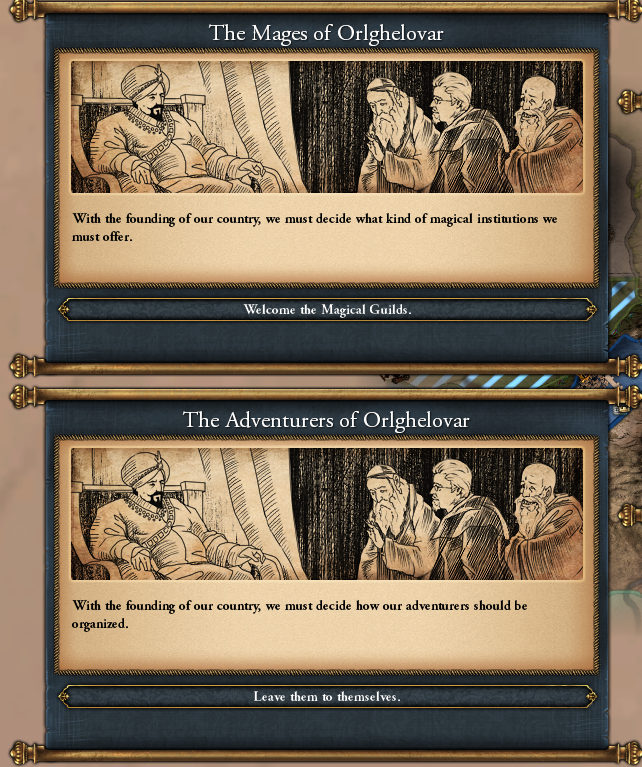 Establishment of the Mage Guild and the dis-establishment of the Blackbeard Cartel Along with the proclamation was the official charter of the Mage's Guild. Balin sil Ballgarionn stepped up as the head magister, to see to it that the magesmiths worked for the betterment of the hold. He offered up support for Blackbeard's stance, declaring that the pursuit of knowledge would drive the advance of magic and science alike and that Orlghelovar had need of both to ensure its shining future. Finally, the Blackbeard Cartel was officially disbanded. The administrators had long since been integrated into the bureaucracy developing around Orlghelovar, and the merchants quickly re-established themselves independently, however there had long been a grey area between the military and the adventurers that made up significant portion of its manpower. The proclamation called upon all dwarven patriots to sign up officially to the new Orlghelovaric Army, but many adventurers took the opportunity to strike out on their own before they could be tied down to a strict chain of command. Forming a proper nation means that we now have access to the Mage and Adventurer estates. I'll get into the actual mechanics of these another time. 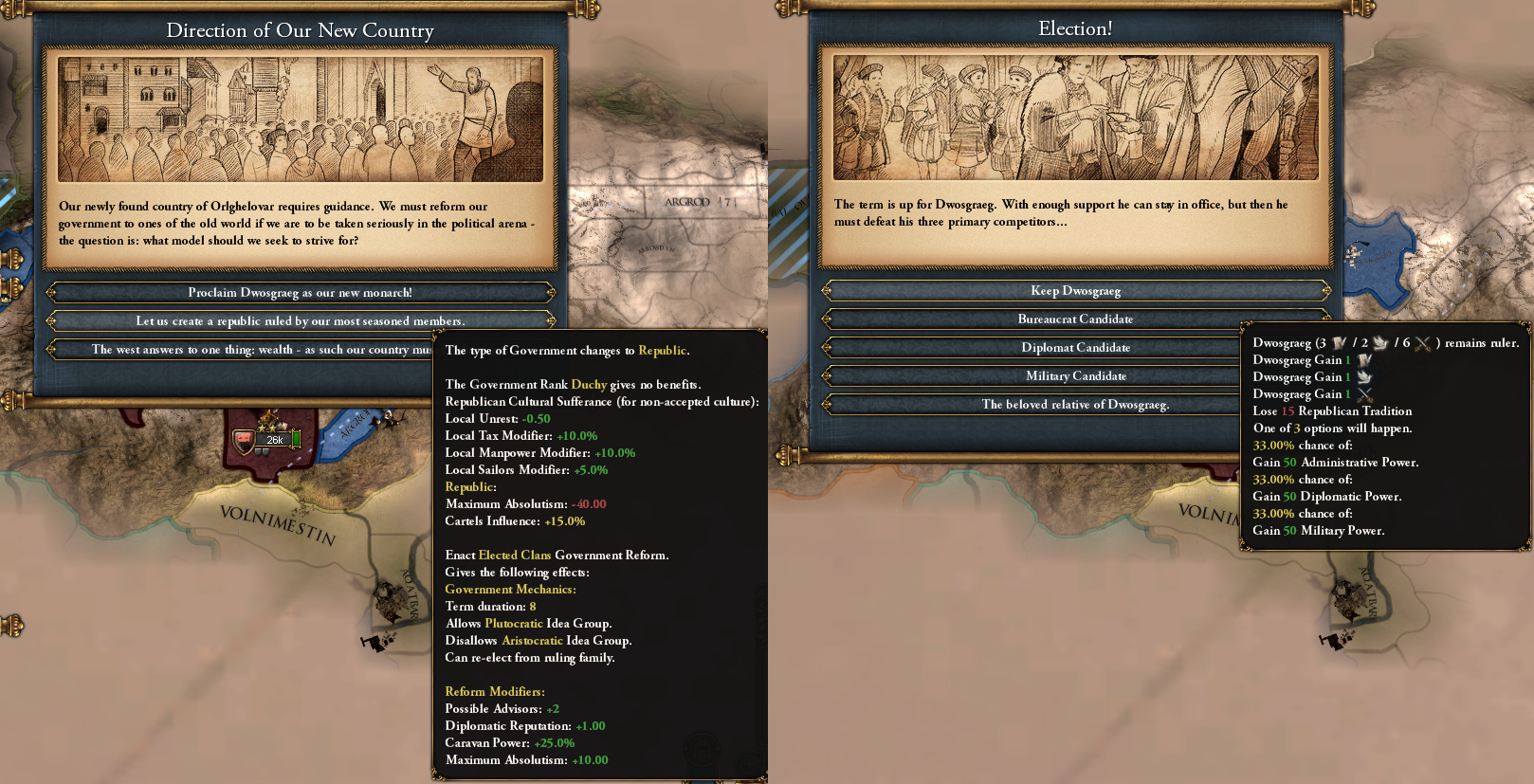 The Republic of Orlghelovar is declared Blackbeard finally came to a decision. He had only gotten so far with the skills and guidance of those around him. Drominarsaraor and Stormfist, Balin and Dolin, and many others besides. His actions so far had already acted as a repudiation of the old ways, where a single all-powerful king or queen ruled in decadence and decay. If he locked himself to a throne, he could accomplish great things, or he might instead grow fat and lazy. No, he needed to formalize the system of advisors and encourage competition and innovation in the government. A call went out to the clans of the hold, both ancient clans who were returning to claim their ancestral legacies and new clans that had risen up out of the reclamation through military or mercantile skills. Combining the wisdom of the elders with the fresh ideas of the new generation of dwarves, and then electing from within that assembly of clan heads would allow the strongest ideas to rise to the top. The first election results, with votes restricted to the heads of the noble and mercantile clans that made up the assembly, were a landslide for Blackbeard himself. He still held more than enough clout among the dwarves of Orlghelovar to hold onto his position for as long as he wanted. The question was, whether the political landscape would shift enough to leave him behind.  The Serpent's Reach, 1480 A new day dawned on the Reach, and a new power arose. Banners of the cartel were taken down, and the Cobalt Links replaced them. Pioneers continued to push through the ancient caverns and railways, and dwarven warriors assembled to finish driving the orcish and goblin warbands to the depths where they belonged. The curtain had dropped on the first act, but the next had only just begun. To be continued…
|
|
|
|
Kanthulhu posted:What are those two provinces marked with diagonal blue stripes? There's a war going on between two AI, those provinces are occupied by a country with a light blue colour.
|
|
|
|
Chapter 4: Orlghelovar Rises 1480-1507  Blackbeard's two-pronged plan for the revival of Orlgehlovar A ruler's work is never done. While the rest of the nation was celebrating, Blackbeard, now officially Lord Mayor of Orlghelovar, was working with his closest advisors to prepare for the next stage of dwarven revival. There were two main areas that he determined should be focused on. The first was to restart the glassworks that the hold was so famous for, both to fill out the lost and damaged glass structures within the hold and to have a unique good to begin trading with the outside world. The second was to finish securing the Reach and to open up proper diplomatic ties with the outside world. These are merely the first stage of missions for Orlgehlovar, focused on economy and securing the immediate surroundings both within the Reach and immediately outside. Once we complete the final mission the tree will expand. 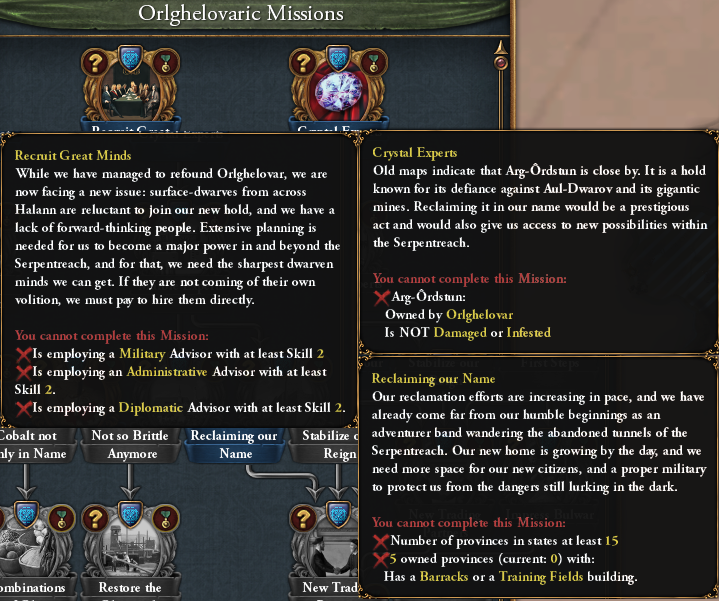 Debate, diamonds, and dwarfpower The three top priorities for his administration were to finish integrating Arg-Ôrdstun and repairing the damage done to the hold during the war, secondly to start building up enough of a military infrastructure that the Orlghelovaric Army could stand on its own without needing the support of adventurers, and finally to build up a council of the most skilled dwarves in the nation. All of these would require money, which was being equally divided with the colonisation efforts, so it would be a strain on the hold's coffers to accomplish it all. 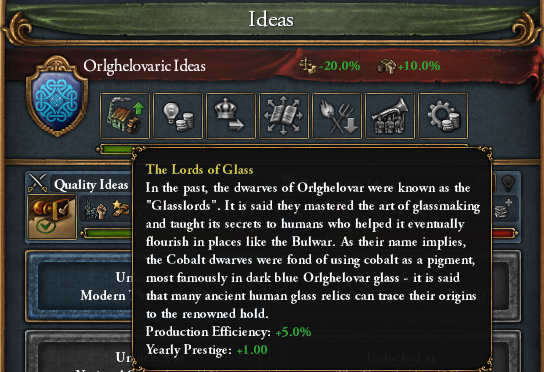 Rise of the Glasslords While the primary glassworks and famous cobalt glass were still a long way from being available, many of the nobility and wealthier merchants eagerly took up the title of 'Glasslord'. They spun up countless smaller glassworks, and found prestige in being the first to develop new colours of glass to display on their residences within the holds. Orlghevar's national ideas are nothing special, mostly being focused on economy, and advancing techs, idea groups and reforms. We'll probably feel the lack of military ideas if we go against a real military nation. 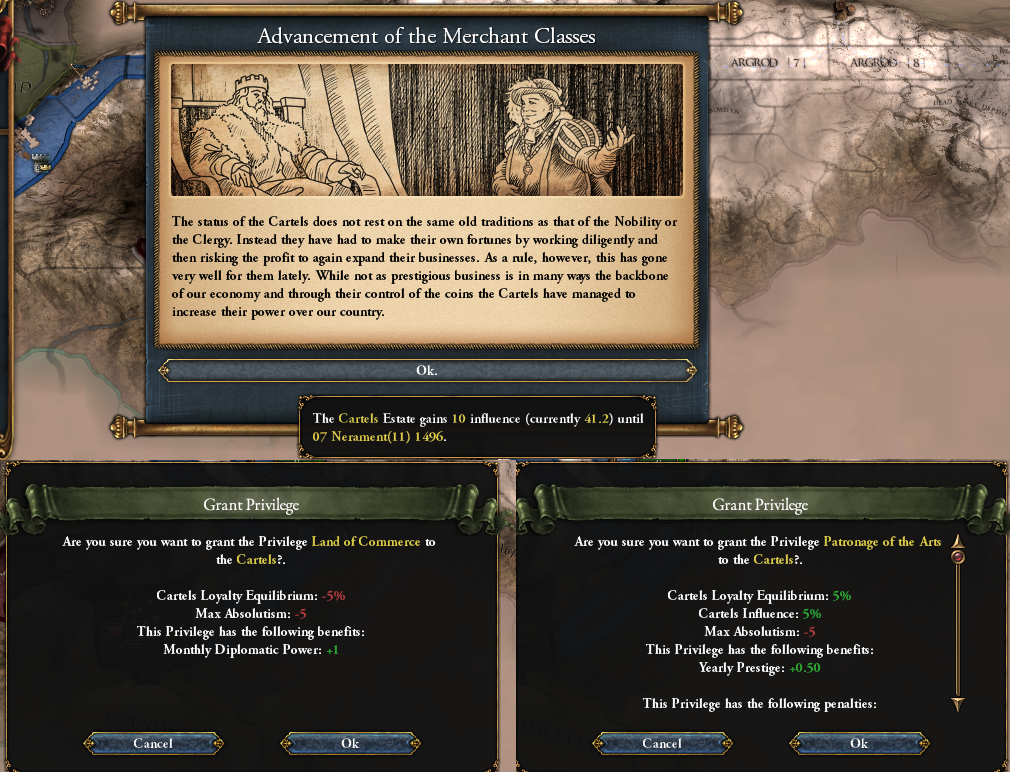 Commerce and culture intertwined One might say that the line between nobility and merchant was stretched very thing in Orlghevar. Without ancient ancestral inheritances to live on, both had to engage in fierce competition to try and build their wealth and power within the hold. That was a field in which the younger merchant clans held the upper hand, and they grew even more powerful as cartels started to form around burgeoning trade routes of the cleared Argrod. Further power came to the merchants as the government subsidized the carving of magnificent artworks and innovative architecture inspired by sketches of the renaissance in Cannor. 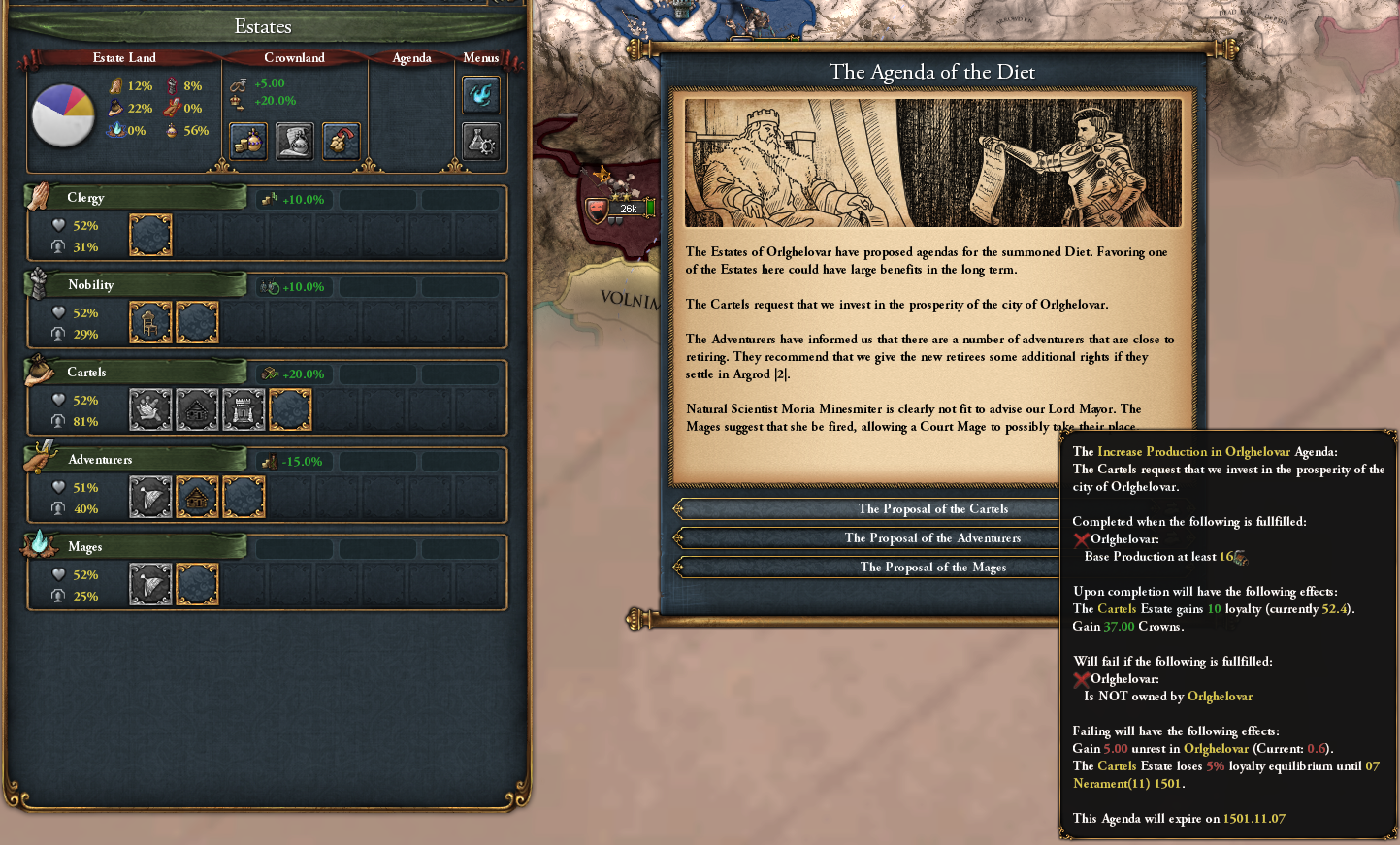 Requests from the powerful The cartels were eager for further investment and lobbied Blackbeard to invest further into the development of the hold. He was eager to this, given that they needed to expand even further downwards to find the space to create a proper glassworks. On the left you can see the other privileges set so far. Besides the ones shown above, there are two 'organisation' ones for the Mages and Adventurers that determine how they work, two that provide even more settler growth and one that gives the estates the right to randomly assign missions to me. 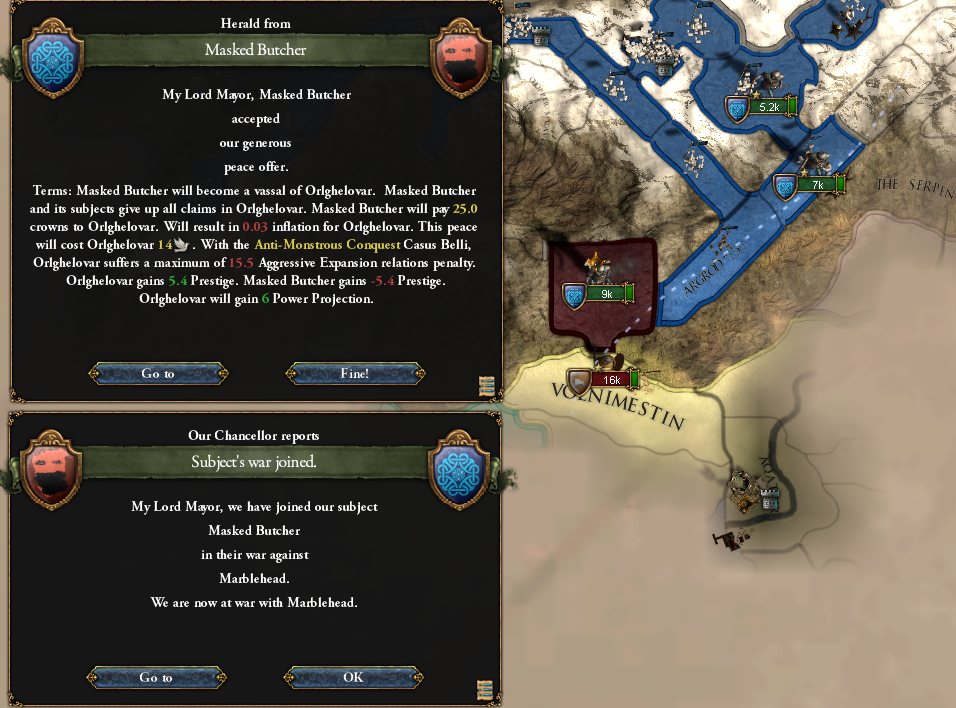 Versus Orc, then versus Goblin The orcs of the Masked Butcher, a vicious warband that had plagued the caverns of the Reach for decades after being driven away from the gates of Arg-Ôrdstun, had settled in Shazstundihr where they continued to squat amongst the dust that had once been the old hold. In recent years, scouts reported that their numbers had been dropping so an expedition was organised to retake the hold. The orcs were easily defeated, but Blackbeard made the controversial decision to force Chief Zugor the Butcher to bend the knee to him, rather than purging them completely. This was simply because the nation did not have the resources to pump into restoring the hold at that moment, with all other resources focused on restoring Arg-Ôrdstun or continuing the colonial expansion. It was a great surprise when the occupying dwarvern forces encountered a horde of goblins at the exterior gates of the hold. The orcs had been in a conflict with the Marblehead tribe of goblins, who lived on the surface, and now those same goblins were attacking dwarven forces attempting to man the hold's fortifications. I did this because I was running perilously low on admin power so didn't want to have to directly core another hold. See if you can guess my mistake before it is revealed, though it's probably only obvious if you've played Anbennar before. 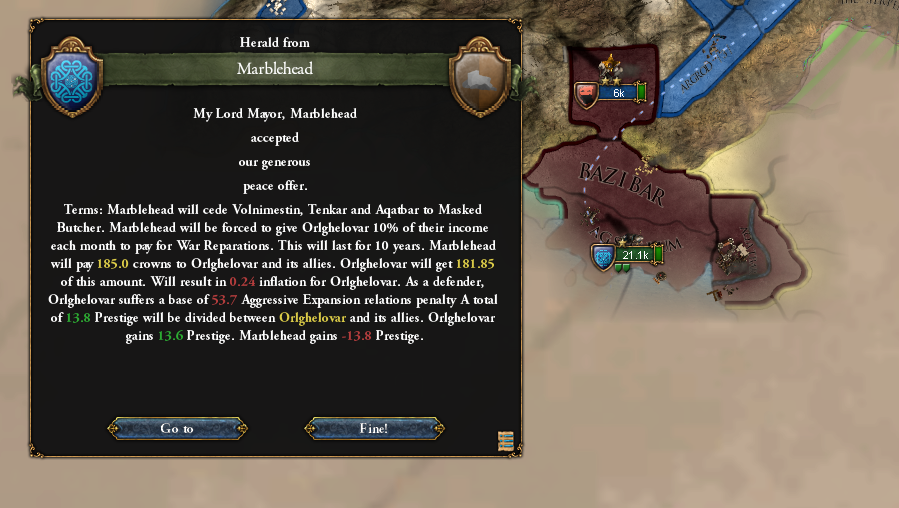 Dwarven warriors arrive at the coast Adventurers were hired to bolster the numbers of the already-depleted dwarven forces, and an expedition was led out onto the surface. The goblins fell back, having expected a rabble of orcs as their opponent instead of dwarven discipline and mithril. Skirmishes continued under the open sky, a strange place for many dwarves who had spent most of the past forty years underground, and eventually the goblin armies were caught against the coastline and crushed. Monetary reparations were extracted, but even as dwarven forces returned to the safety of the mountains, countless orcs now nominally allied with Orlghelovar began to pour out of Shazstundihr. With the goblins who had been in charge now subdued by dwarven arms, Zugor took advantage to seize power and began pillaging the countryside. It was an uneasy sight to watch, as dwarves stood aside while humans and elves fled from the onslaught. Oops. I expected to get these lands eventually after integrating the orcs, but it was not to be. 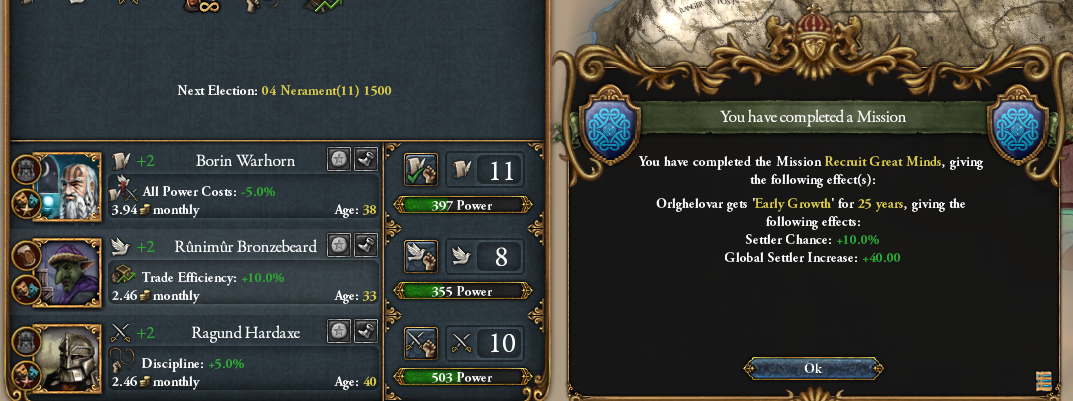 Assembling a skilled council With the influx of wealth, so to came an influx of skilled dwarves. The Mage Guild was finding more dwarves with magical talent among the population and encouraging them to make use of their talent, while more mages arrived from Silverforge, eager to get out from under the thumb of the Magisterium that oversaw all magic within the Empire. The constant conflict with the inhabitants of the caverns also saw the rise of skilled officers experienced in underground warfare, creating a growing professional officer corps within the Orlghevaric Army. Some of these were brought back to the hold and paid a significant salary to teach the next generation of leaders. More goblins also found their way into positions of some influence within the hold, as those goblin tribes that survived the arrival of dwarven settlers started opening themselves up to trade. Court Mage is a new advisor type available in Anbennar. Getting -5% to everything that costs admin, dip, or mil mana is a very nice bonus, especially as that adds on to what the Mages estate gives you when they have high loyalty. 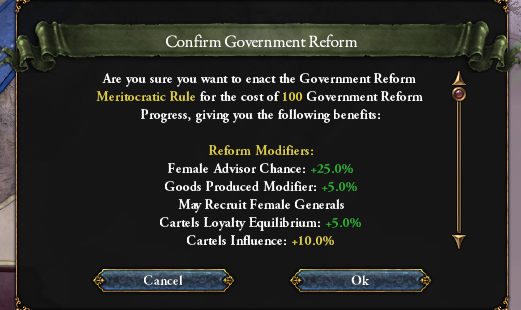 Rule by Meritocracy All in all, a culture of merit was cultivated throughout all levels of the hold, from the most skilled craftsdwarves rising to prominence to competent soldiers being separated from the lines of battle and sent to train at the academy. 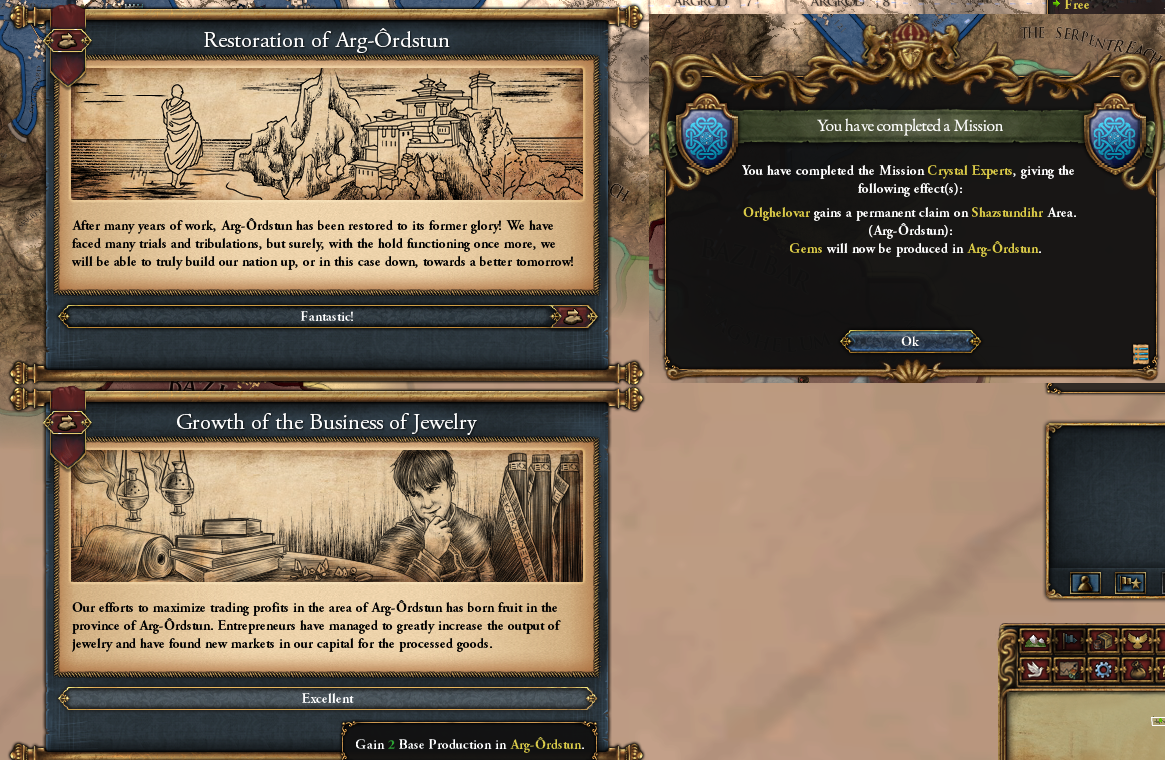 From glittering caverns to brilliant jewellery The damage done to Arg-Ôrdstun had been repaired, and relations with the inhabitants were starting to smooth out. In the end, wealth was the key to winning over their hearts. The caverns beyond the walls of the hold had long been lost, but within them were endless seams of gems and even mithril that had been untouched for thousands of years. Once those resources began to flow back into Arg-Ôrdstun, the economy boomed and began to rival the output of Orlghelovar itself. 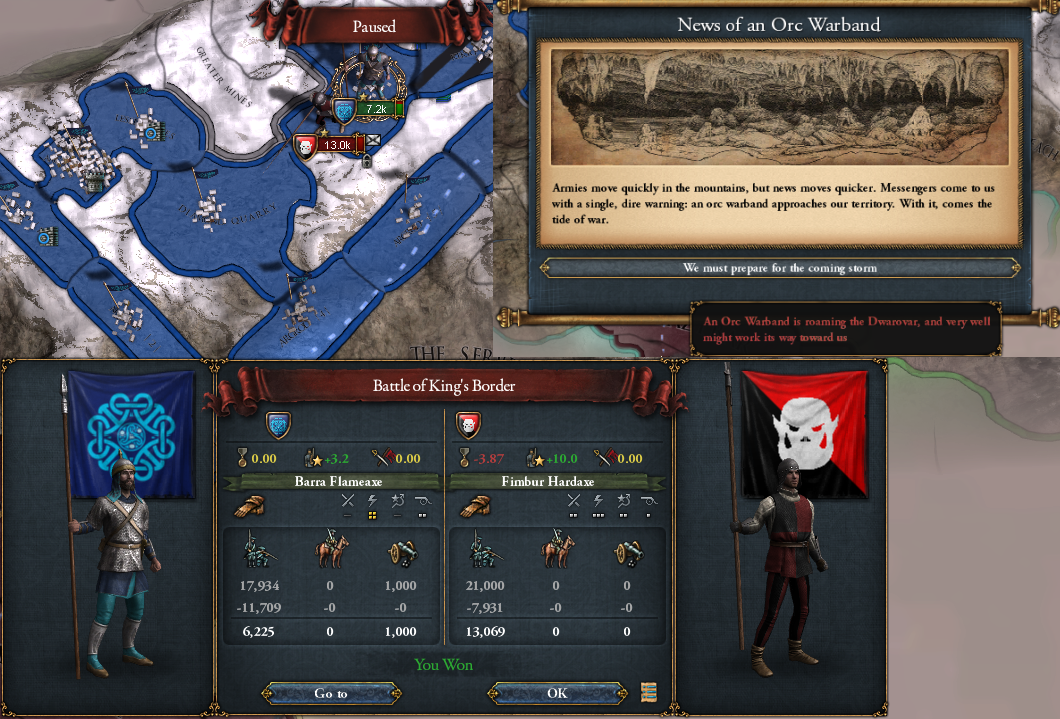 Invasion from the depths The relentless push along the Argrod and through the caverns caused upheaval among the natives. Tribes fled from the dwarven advance, and in some cases banded together to strike back. The Hardaxe warband emerged from Verkal Skomdihr and swept through the caverns, slaughtering goblin natives and dwarven settlers alike as they plundered their way towards Arg-Ôrdstun. Orlghevaric forces commanded by Barra Flameaxe stood their ground in the caverns, but the fight was brutal. The orcs swept across dwarven lines with a ferocity note seen since the peak of the Greentide, and the army very nearly broke under the onslaught. Flameaxe came up with a plan. She ordered the centre to weaken, and let the orcs break through, which led them into a killing ground where the dwarven artillery could zero in on them with precision. This led to a rout further into dwarven territory, where they were trapped and destroyed. The conflict still cost more than ten thousand dwarven lives, which were not easily replaced. 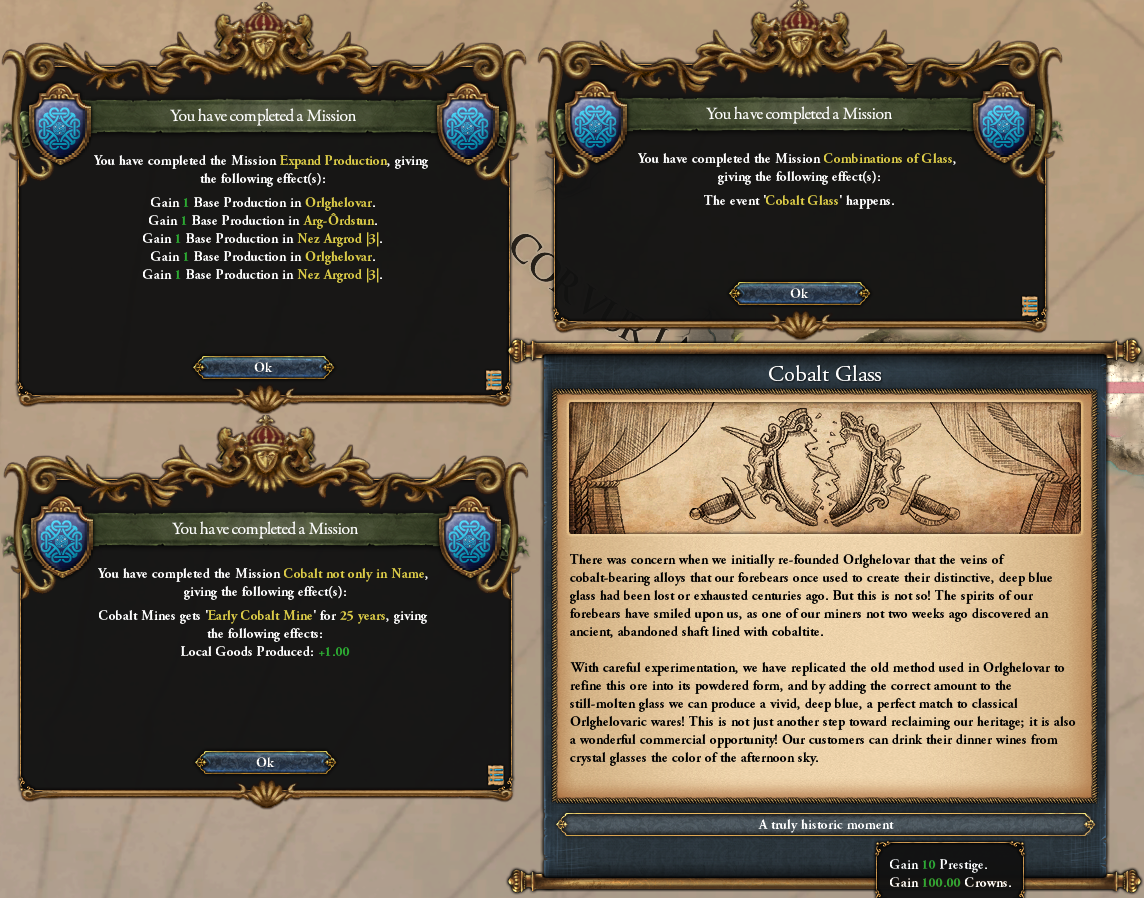 Production resumes on cobalt glass In the more secure parts of the nation, mining operations had resumed for precious cobalt, the key ingredient in Orlghelovar's premiere style of glass. With only the remains of ancient glass to work off of, countless workshops popped up attempting to recreate the distinctive blue tint. The government funded these efforts, with the administration supporting many of these workshops having seen the potential profits that could be made by selling the glass. Eventually, one such workshop with Orlghelovar itself was able to duplicate the tinted glass to a high enough standard to satisfy experts. Because of the economic importance of this discovery, the government purchased the information at a premium and started to disseminate it to other glassmakers that they could trust to not share the secret with outsiders. Cobalt glass was back, and production began to ramp up as quickly as cobalt could be mined. 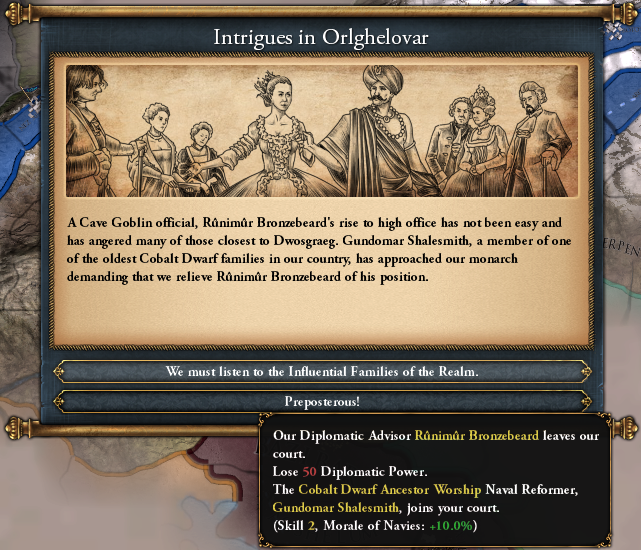 Where purging was not allowed, politics was used Many of the wealthiest clans of the hold were not happy with Blackbeard's position on goblins and orcs, and the diplomatic embarrassment at Shazstundihr had only made their positions more strident. It was hard to be a goblin in dwarven society, and it was easy for political manoeuvrings to leave goblins in an unwinnable position where they would have no choice but to leave the administration. Blackbeard could have opposed them, but with so many plates spinning with the economy and the continued expansion it was getting harder to stand up to them. He did not have the reserves to counter their politicking at that time  Reclaimers in the north News was beginning to filter in of the other efforts to reclaim the Dwarovar, particularly in the northern tunnels. As expected, the Asra Bank Expedition had rebuilt Khugdihr and was working on building ties with the newly emerging nations in Escann. On the other fork of the mountains, the Ramsteel Hold of Orlazam-az-Dihr was warring with the ogres in the Serpent's Vale to reclaim the breadbasket of the Dwarovar. Elsewhere, major goblin and orcish warbands still occupied tunnels and holds. The Ruby Company had been pushing them back, having decided to focus on fighting more than settling down and rebuilding a hold. 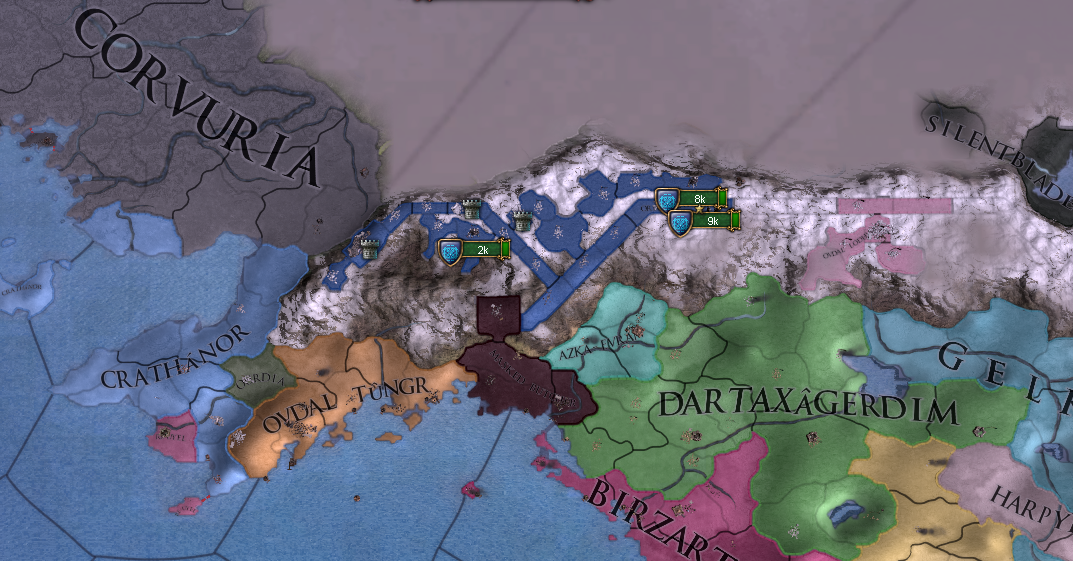 Orlghelovar's immediate neighbours The resurgence of activity in the mountains had not gone unnoticed by the surface world around the Reach. Envoys from the nations in the regions of Bulwar and Dostanor were starting to arrive to open up diplomatic relations, as well as ask pointed questions about certain orcs. Some of the more notable nations were Corvuria, a heavily feudal nation that had advanced across the marshy wasteland of Daravan's Folly and now had borders that extended almost to the doors of Orlghelovar itself, Crathánor, a trading republic controlling a lot of the flow of trade from Bulwar into Cannor, and Dartaxâgerdim, a nation ruled by humans in the otherwise elf-dominated region of Bulwar. Also of significance was Ovdal Tűngr, a surviving dwarf hold that rested in a cavern that opened up into the sea and as result was the sole dwarven centre of shipbuilding. Blackbeard was most interested in opening up diplomacy with these dwarves to gain their expertise in trading on the open waters. 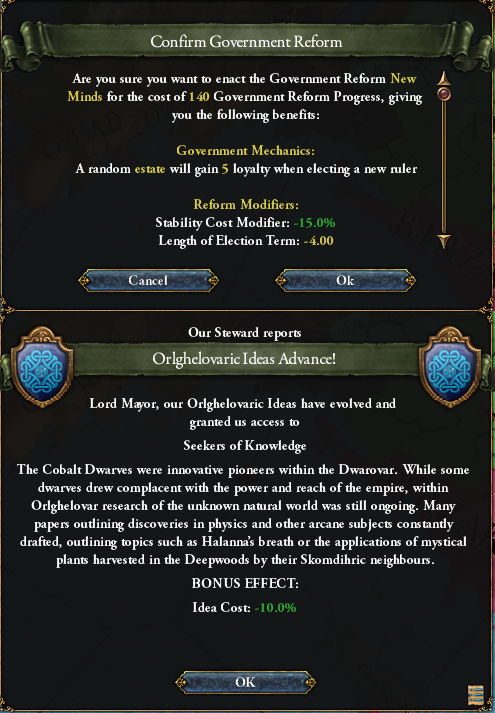 Baking innovation into government To further the focus on innovation, Blackbeard approved a reduction in the duration of terms in office from the original 20 years to 16 years. The intent was a compromise between avoiding cycling out leaders too often and causing the hold to lose direction, and making sure that the future of the nation could be debated more frequently so that direction could be changed if needed. 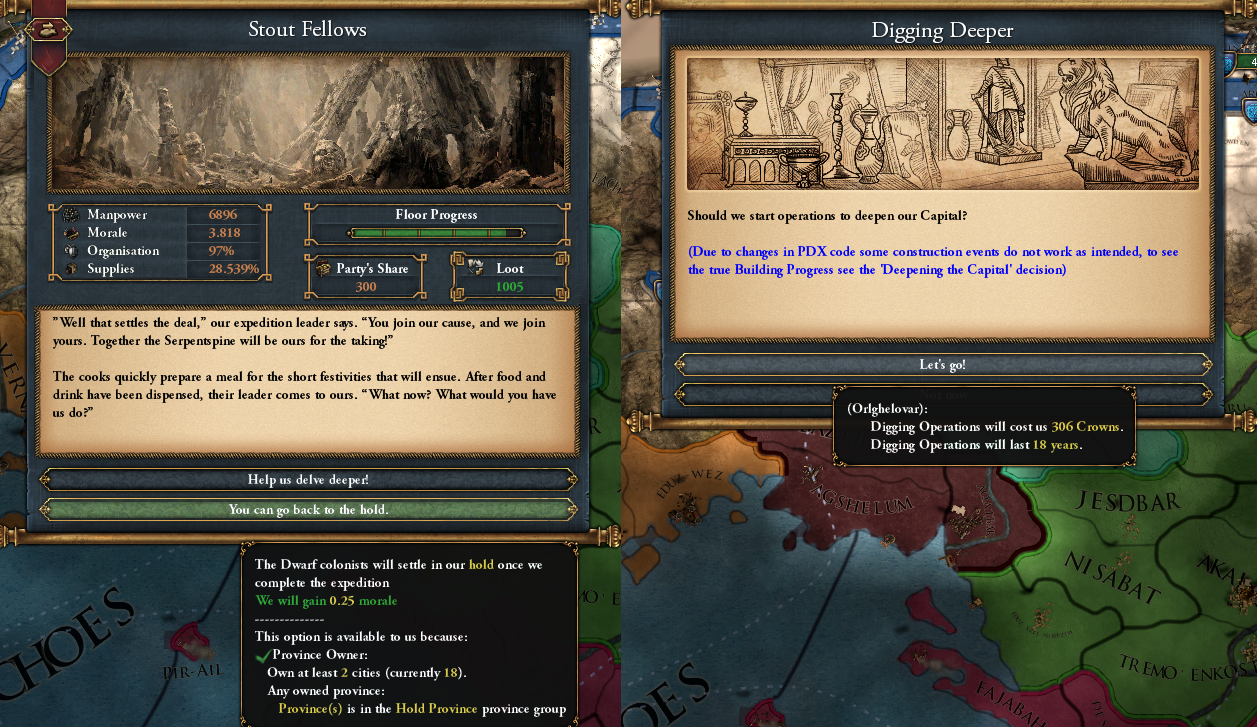 A miraculous encounter As the military infrastructure of Orlghelovar continued to grow it was becoming more straightforward to mount expeditions. No longer did progress have to be halted while the entire military disappeared down holes for months or years at a time. There were no significant discoveries during most of these expeditions, however there was a very surprising encounter deep under the tunnels of Deadbeard Lane. A camp of cobalt dwarves, actual cobalt dwarves descended from the original inhabitants of Orlghelovar, had somehow survived in the dark depths of the mountains for millennia as a roaming tribe. Though initially suspicious, they eventually warmed up to the expedition as they were supplied with modern food and comforts, which they had been lacking for their lives and the lives of countless generations of ancestors. These dwarves would arrive in Orlghelovar and immediately put their skills to use delving into the caverns underneath the hold to assist in the latest efforts to extend the hold downwards. 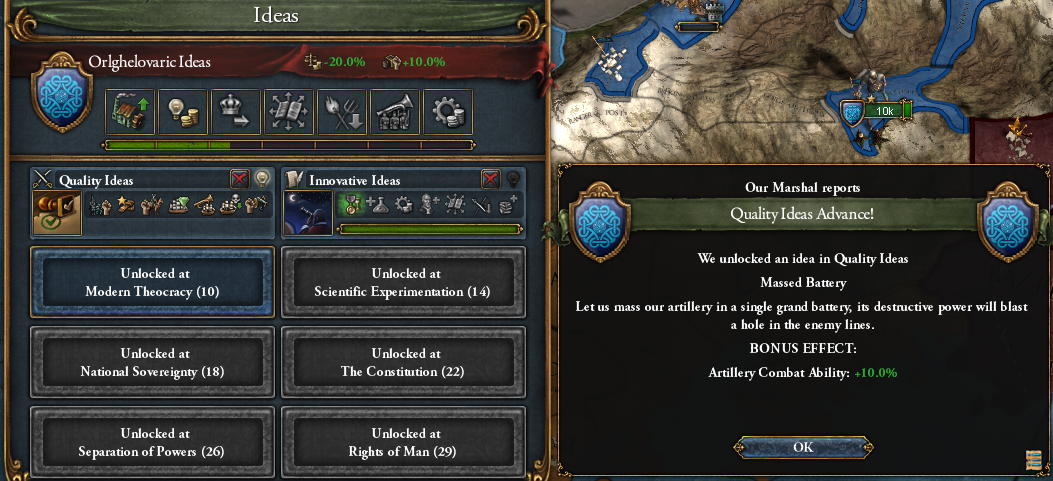 Orlghelovar's finest The lessons of the last warband invasion further cemented the idea that the dwarven military needed to be the finest force in the world to stand a chance against the barbarity that still lurked in the darkness. Flameaxe retired from frontline duty and joined the military academy in Orlghelovar to teach how she had kept her forces in good order despite heavy losses and devastated the orcs through the use of cannons. Maxing out quality gives us 5% discipline in addition to the other bonuses, although as discussed some of them aren't relevant to us right now. You can also see that I have not even started on innovative yet, on account of having to spend my admin mana on coring the colonies I complete. 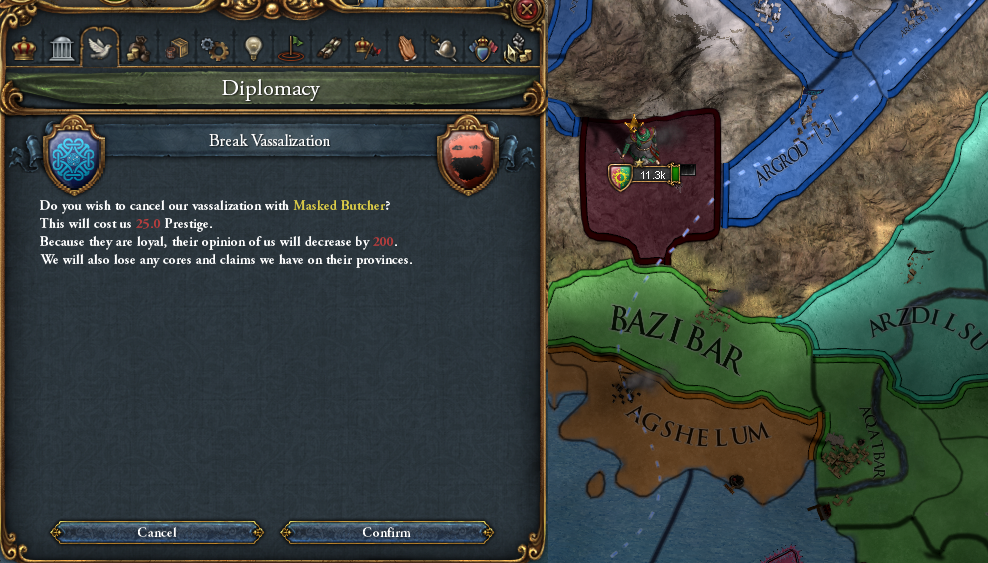 Butchering of the Butchers Relations between the Masked Butchers and their Orlghelovaric overlord were always frosty, but they did pay their taxes and didn't seem interested in rebellion. So, a party of administrators was dispatched to Shazstundihr to begin planning dwarven repopulation and rebuilding. As soon as they had passed through the gates, the doors were sealed behind them and they were slaughtered along with the dwarven garrison. Zugor declared that he would never let dwarves dwell in the hold ever again, and gathered his armies funded by the plunder they had taken from the surface in the years that Orlghelovar had been protecting them. That was his mistake, however. Seeing the orcish forces departing to make a stand at the hold, troops from both Ovdal Tűngr and Dartaxâgerdim moved into the lands outside the hold, driving out any orcs who had settled there and laying siege to the hold from the outside. Caught off-guard by the sudden surfacer counterattack, Zugor attempted to change course but it was too late. The surface defences were breached, and human and dwarven forces entered and slaughtered the majority of the warband. With the hold itself still little more than dust, and the orcish settlement within razed, they took back the plunder from the surface and returned to administer the lands they had rescued. Overall it was a diplomatic disaster for Blackbeard, who had advocated for more lenient policies on orcs and goblins, and led to an increase in calls for the expulsion of orcs and goblins within the nation. So here is the payoff to the mistake I made. Monstrous nations have a -100 to relations with non-monstrous (and vice-versa). You need +190 relations with a vassal in order to annex it. Between the monstrous penalty and other assorted penalties e.g. religion there was no hope of annexing them diplomatically for a very long time, and I need the hold asap for the mission tree. Of course, breaking vassalage then leaves them vulnerable and loses all the land I conquered for them and hoped to get for myself eventually (but luckily not the hold itself…). 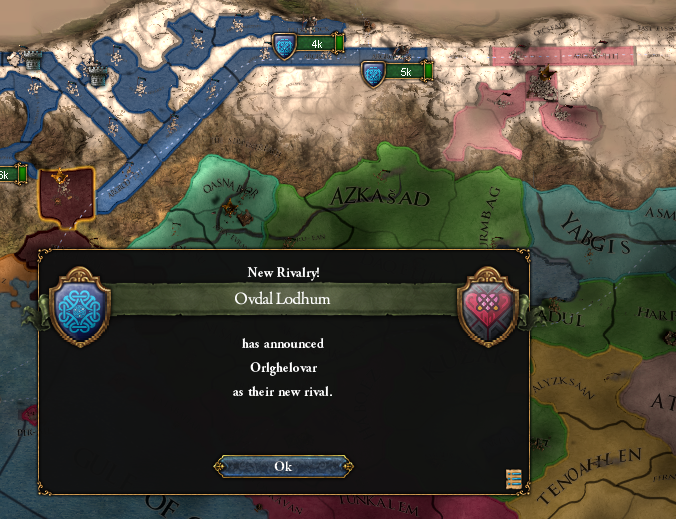 Hostilities resume with Ovdal Lodhum As Orlghelovaric colonists advanced along the Argrod, they found that which had been left behind by the Blackbeard Cartel as it had been going in the opposite direction. Sometimes this was supplies that had been left behind in a camp that had been abandoned. Other times, this was bad feelings. The leading settlements started encountering more and more roaming parties of garnet dwarves from Ovdal Lodhum, also seeking to expand into the tunnels. Dwarves have long memories, and these dwarves remembered Blackbeard storming the gates of their hold. Skirmishes continued, and before long an official notice of rebuke came from King Balgar. 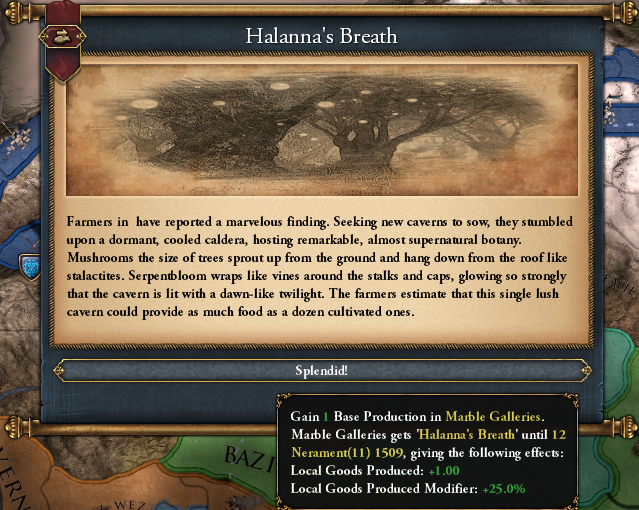 One of may varied environments of the Dwarovar Exploration and expansion through the caverns was not always a dull and dangerous activity. The Serpentspine mountains were cut off from life-bearing sunlight and soil, but life emerged from other sources. Halanna's Breath was a mysterious magical energy flowing into the caverns and bringing life where it shouldn't flourish. This led to environments where this energy pooled and life blossomed to an extent that was rarely seen even on the surface. 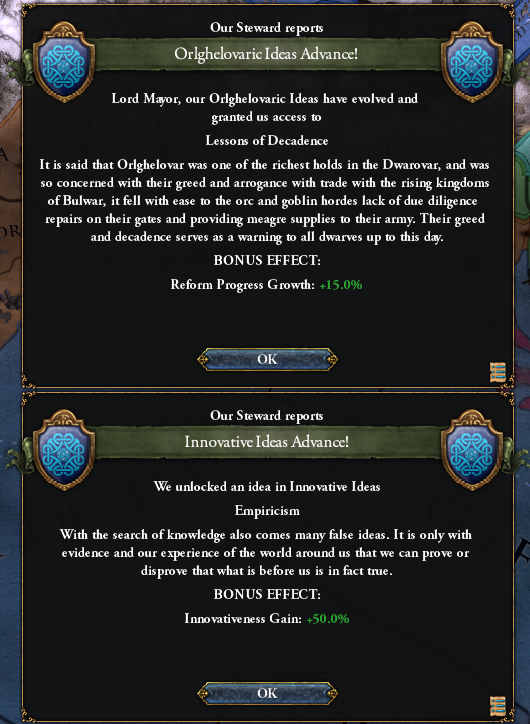 An empirical government As such mysteries emerged and continuing work on the hold unearthed ancient studies, interest in scientific study continued to grow within the hold. Ideas of empiricism become more popular, and Blackbeard was eager to make sure that these were taken into the government. The rulers of ancient Orlghelovar had let their wealth blind them to the empirical facts of the collapse of their fortifications and military, which led to their destruction. Through data and science, such mistakes would not be repeated. 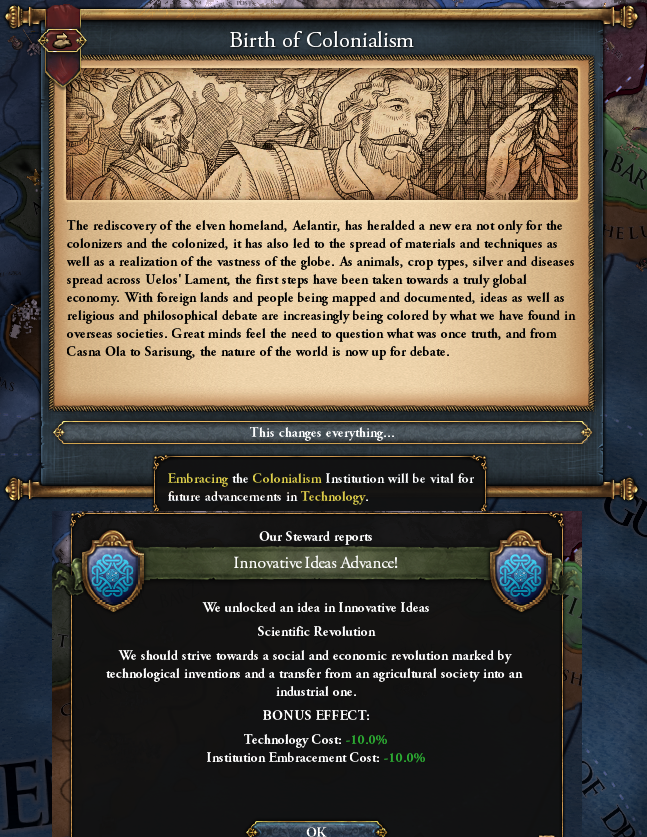 A world of science Just as things were changing in Orlghelovar, the rest of the world was being transformed as well. Elven and human fleets from Cannor had sailed west and rediscovered the ancient elven homeland of Aelantir, and were already returning with new ideas, artefacts of the Precursors, and strange goods born of the magical devastation across the ocean. With a focus on science, Orlghelovar was perfectly positioned to take the forefront in using these discoveries to elevate their understanding even higher. 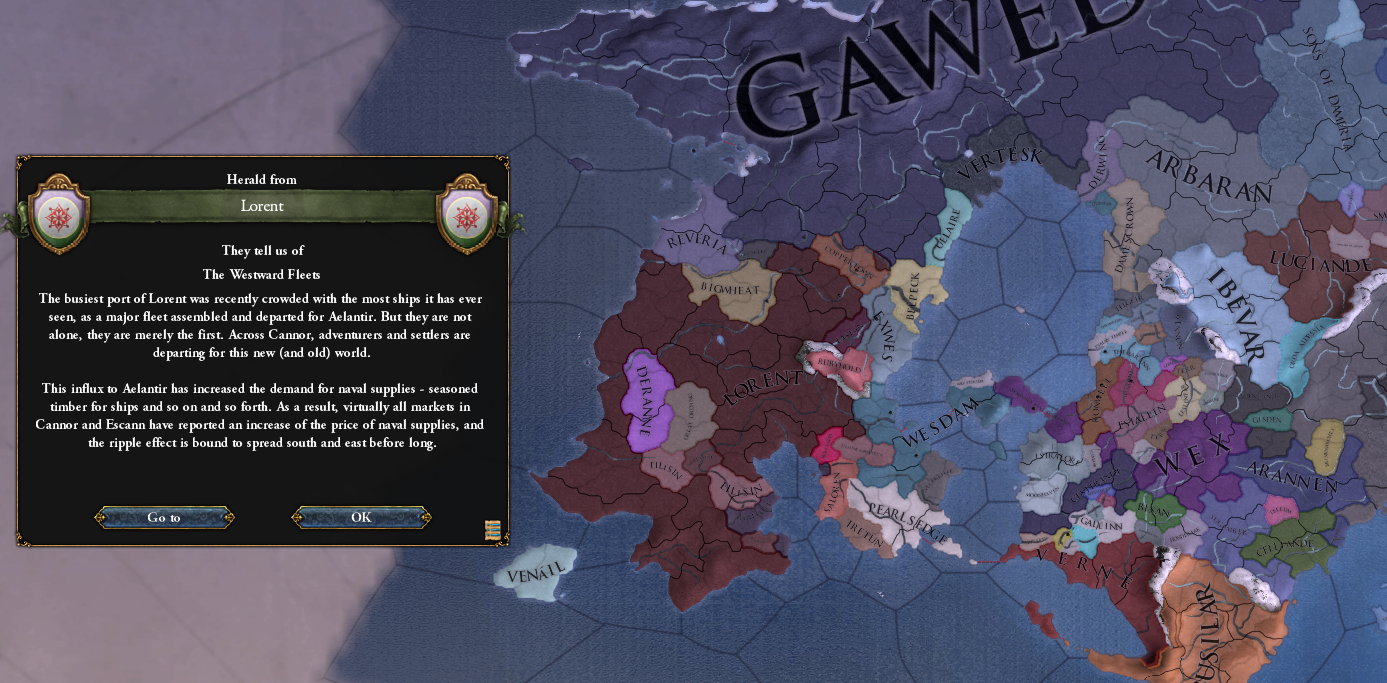 The great migration begins In Cannor, the news of the discovery caused a storm. Elves seeking to return to their homeland took up the call in their tens of thousands, but also humans, half-elves and even dwarves began to set sail across the ocean to seek their fortune or find new lives in Aelantir. Soon, the Bay of Wines was packed with ships setting sail for the west. At this point, many nations in Cannor will get the option to switch to an adventurer or settler nation in Aelantir. Also using this an excuse to see what's happening in Cannor. The Empire is looking relatively normal, but RIP gnomes, courtesy of a powerful-looking Gawed. 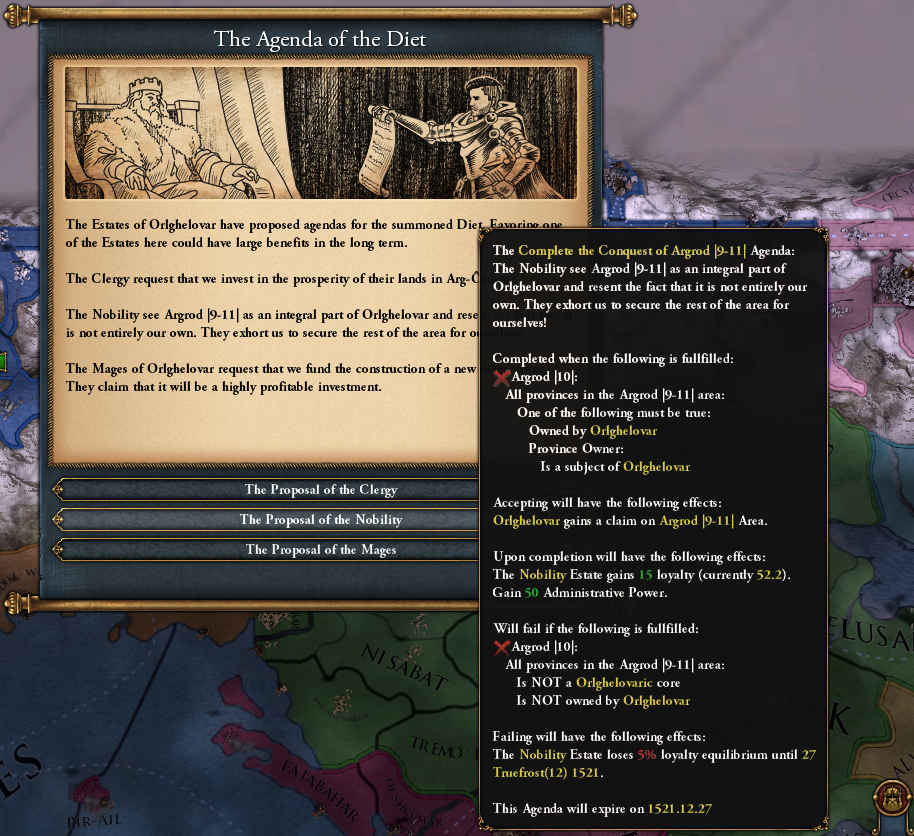 Strategic need to secure the Argrod As the nation grew, strategic interests became just as important as animosity and friendship in driving the relationships between nations. Though there might be grudges borne between Blackbeard and Balgar, what really prevented reconciliation was the fact the Ovdal Lodhum still lay claim to a portion of the Argrod preventing Orlghelovar's further expansion through the reach. The clan assembly demanded that Blackbeard take military action to open up the old rail line, and he agreed that it was necessary. 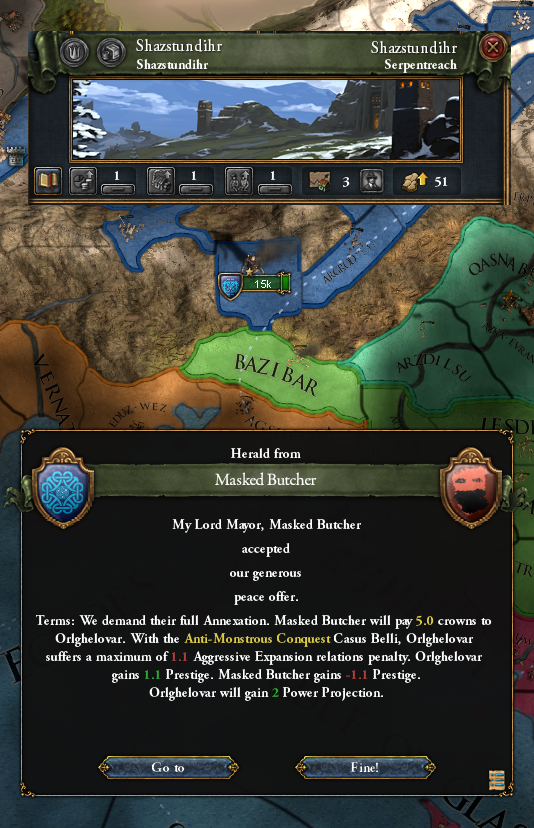 Nothing but dust When dwarven troops finally broke into Shazstundihr from the tunnels, they found nothing but silence. There were no orcs, nor loot, nor any structures besides ramshackle fortifications. Vast quantities of resources would need to be poured in to restore the hold to any semblance of functionality. The question still remained, what had scoured it clean in the first place, before any orcs or invaders had touched it? 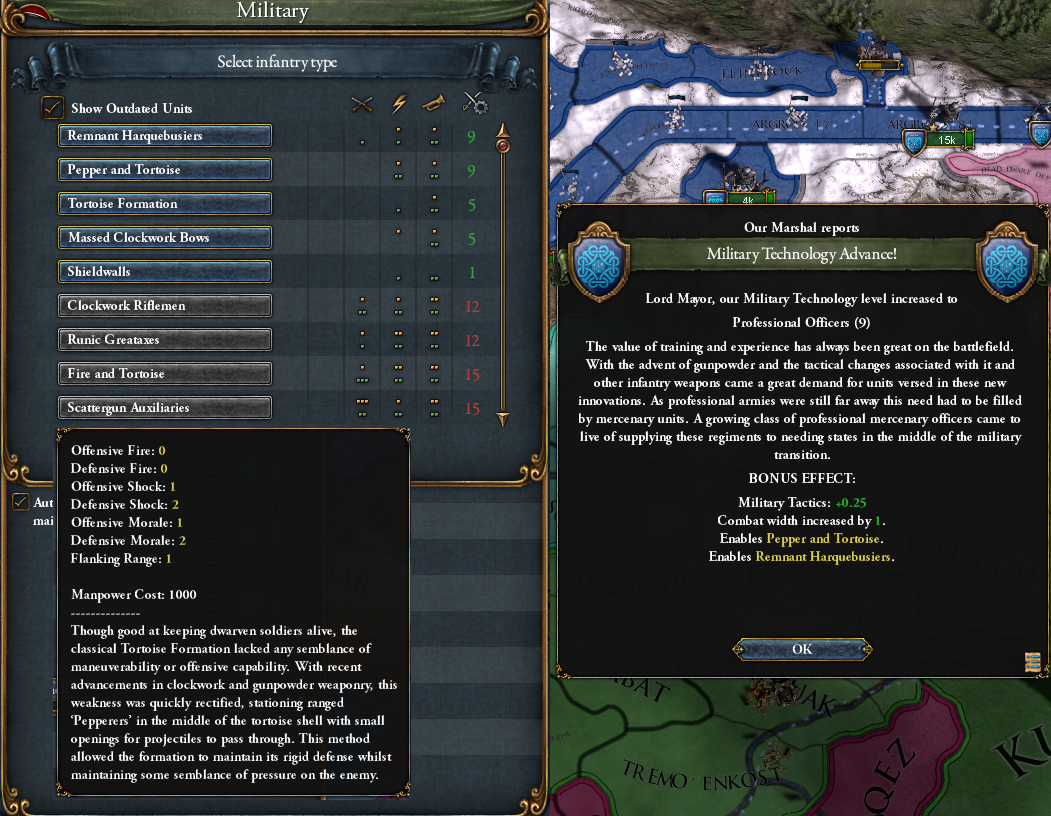 A professional army The development of the Orlghelovaric military academy continued apace, with more and more dwarves becoming professional officers and steadily whipping the Orlghelovaric Army into a proper disciplined fighting force. By now, the adventurers who had stayed with the army had been completely integrated into the military and were just about indistinguishable from a trained soldier. Development in clockwork and gunpowder weapons allowed new innovative tactics that used dwarven steel and mithril to hold against the enemy while dwarven technology saw them constantly battered by crossbows and guns. Newly armed troops were already marching towards conflict with Ovdal Lodhum, who were still relying on outdated ideas. Another crucial military tech, with tactics, combat width allowing us to fit more troops into combat (although we don't have a full-width army just yet), and new unit types. As our big threat is shock-focused orcs and surfacer cavalry, Pepper and Tortoise is our better choice for its increased defence. 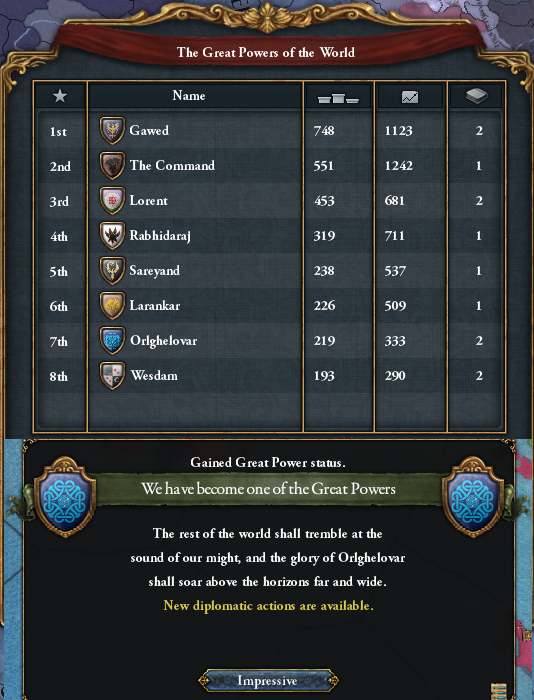 Recognition from the world In the distant halls of Silverforge, the word was that Orlghelovar's great successes in revitalizing the ancient knowledge and taking swathes of the Reach had positioned them as the foremost reclaimer of the dwarven legacy. While the nation's influence had not yet reached out of the mountains, its presence was starting to be felt. Your great power ranking is determined by your development, and in addition to pumping development up in dwarf holds we have also effectively been getting doubled development in each colony thanks to the age bonus. However, as larger nations in the east start getting institutions we are at risk of falling out of the ranking again. Also, re-iterating that Gawed looks very scary. 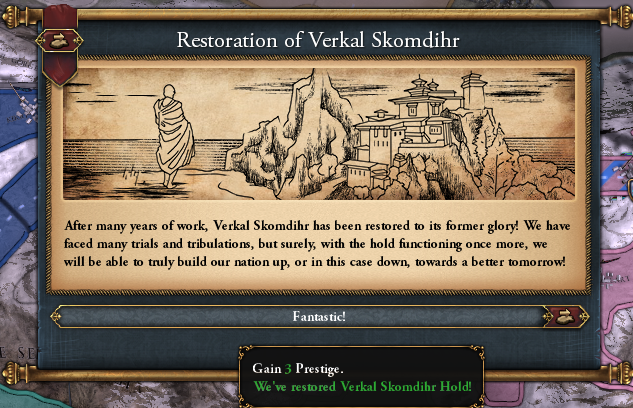 Gateway to the Deepwoods Dwarven colonists had retaken and repaired Verkal Skomdihr, which had mostly been cleared out of squatters by the warband that had passed through several years earlier. Blackbeard was still mostly concerned about the potential of strange invaders from the Deepwoods, so the next order was to build a fortress over the surface entrance and burn back as much of the accumulated foliage as possible. 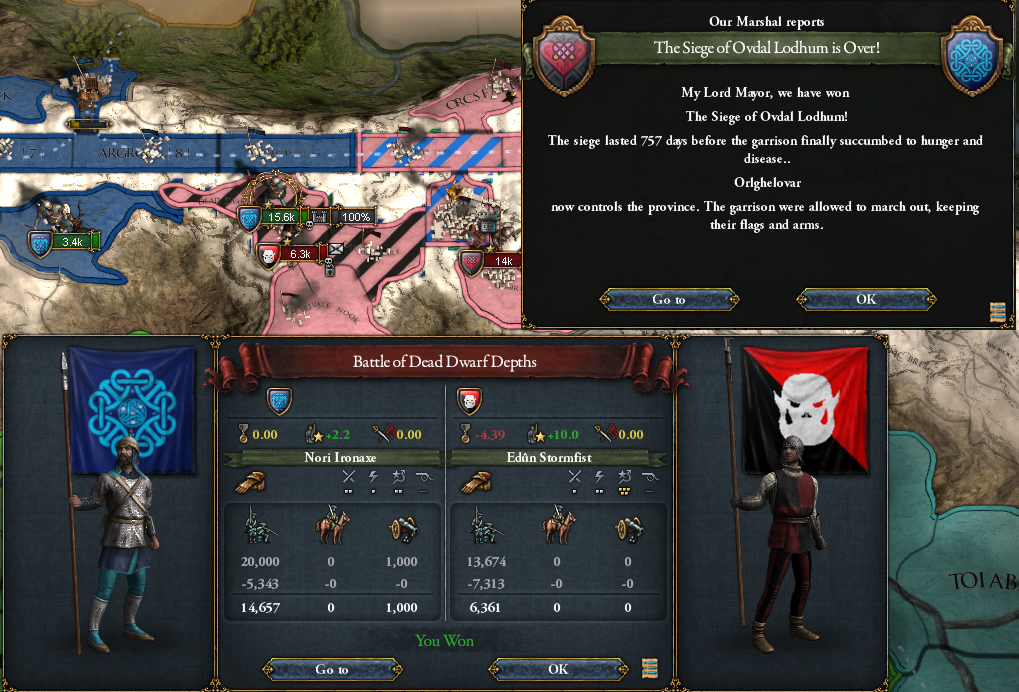 Garnet humiliation The war with Ovdal Lodhum saw less violence between dwarves than the previous conflict, ironically. The largest battle of the conflict was the Orlghevaric Army doing the garnet's job for them by defeating a large orc warband that was rampaging through the caverns near the hold. Here, the new military tactics proved their worth as casualties were significantly lower than in the fight against the last warband. Ovdal Lodhum itself was besieged for two years before King Balgar was forced to come to terms and cede the Argrod, as well as the caverns that had been rescued from the orcs, to Orlghelovar. His animosity towards Blackbeard was clear from the moment that they met for the negotiations. Balgar continued to insist that freeing the Reach was his mission, handed down from Gerin. However, no matter what he said, it was clear to all attending that this conflict had cemented Orlghelovar as the foremost, and only, power of note within this arm of the mountains. 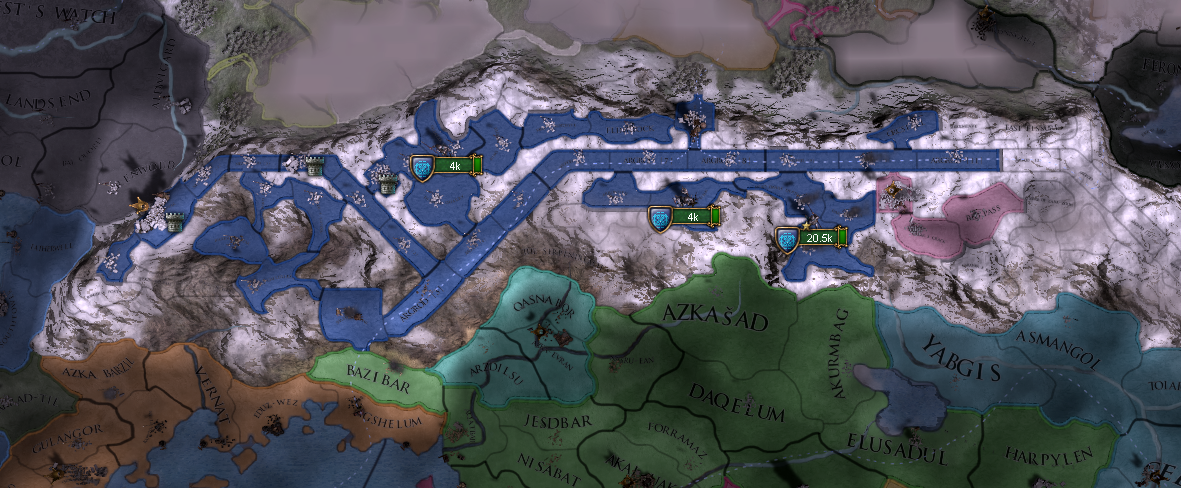 Hegemony over the Reach There was still more of the Argrod to reclaim, the passage connecting the Reach to the rest of the Dwarovar to uncover, and countless caverns to delve in, but it was clear now that the Serpentreach was Orlghelovar's to do with as it so desired. The nation had been noticed by the outside world, so perhaps the time was right to begin extending its influence out onto the surface where fortune and knowledge aplenty awaited those willing to try something new. To be continued… Vote We are very close to our next idea group. Please vote for two options, e.g. "A, D". The winner will be picked, and the next two will have guaranteed places in the next idea vote. A: Economic – Our economy is booming, but it could reach even greater heights. B: Administrative – The republic's administrators are struggling to keep up with the nation's rapid growth. Let us expand the bureaucracy, to meet the needs of the expanding bureaucracy. C: Influence – Reclaiming the remainder of the Dwarovar or expanding onto the surface will be difficult, but we have many potential allies to sway to our side, by fair means or foul. D: Trade – The gates are open, and we have contact with the outside world once again. Let cobalt glass be traded far and wide. E: Defensive – The walls have been built; the holds are safe. They could yet be safer. F: Offensive – Hiding behind walls did nothing for the diamond and garnet dwarves. Our forces must be proactive and strike out to achieve victory. Voting will last for 48 hours Sybot fucked around with this message at 16:29 on Mar 12, 2023 |
|
|
|
By my count, the final results are as follows: A: Economic - 3 B: Administrative - 8 C: Influence - 10 D: Trade - 13 E: Defensive - 4 F: Offensive - 8 Trade will be our next idea choice, and Admin, Offensive and Influence will all be options at the next vote. Depending on the situation, it might even be just those three. Now, since Trade has been selected, before I discuss exactly how this vote will influence the game going forward, it is important to give a view of what the trade situation is like in our nation. But first, a very brief primer on how trade works. Interlude: Trading Directions Trade in EU4 Trade in EU4 (including mods, this stuff is hardbaked in afaik) is modelled as the flow of goods from producers to consumers. In vanilla, this means from Asia and the Americas into Europe. It is a little more complicated in Anbennar. Every province is part of a Trade Node. It contributes a certain amount of value to that node, based on the type and amount of goods being produced. A Trade Node can also gain additional value from Upstream Nodes, which is to say nodes who are coded to have a flow from their node into another. It also loses value from Downstream Nodes, the nodes that the node is question is coded to flow into. Finally, once all that is summed, countries with either their Trading City (the capital by default, but can be moved), or with a merchant assigned to collect from trade, earn some of that proportional to their trade power within the node. There are three more important types of nodes. Start Nodes, nodes which have no trade flowing into them, only out. End Nodes, nodes which have no trade flowing out, only in. Quasi-End Nodes, which I will discuss later. As you might imagine, End Nodes end up incredibly wealthy, while Start Nodes can never be wealthier than the sum of their provinces. Now, how does that affect us? Trading in Anbennar Below is a very simplified map of trading in Anbennar (or at least Cannor, Bulwar and the Dwarovar). Start Nodes circled in red, End in green, all others in yellow, with blue connections.  Our node, the Serpentreach, only has one other node flowing into it, the Deepwoods, which is a Start Node in and of itself (well, maybe not but that is a story for a completely different LP). This means that we are very poorly positioned to take advantage of trade at the moment, as we can at most have the value of those two nodes flowing into our coffers. The western of the two (and only) End Nodes that can be seen there are the Dameshead, which ultimately receives almost all of the world's wealth. It is also the heart of the Empire of Anbennar, so seizing control of it without being a pre-existing trade power is essentially winning the game already. The eastern End Node is Amldihr, which receives some trade from the east, but mostly from within the Dwarovar itself, all the way from one end of the mountains to the other. A unified Aul-Dwarov can make it wealthier than Dameshead, but otherwise it is far weaker. Our trade can flow in either direction. This leaves us with two options. The Two Plans Light blue represents nodes 'secured' by us. Light green represents End or Quasi-End nodes 'secured' by us.  We can either start pushing for Amldihr, which will take us down the path of monopolising the trade within the Dwarovar and rebuilding the ancient empire in its entirety, building a single unified dwarven state to ensure a repeat of the diaspora never happens. However, that will involve inevitably warring and subjugating our fellow dwarves to fight for the crown and generally ignoring the situation on the surface, which could come back to bite us. Or, we can push out, secure the coast, and instead try to dominate the trade coming in through Bulwar by creating a Quasi-End Node in Eborthil. A Quasi-End Node is one that has only one Downstream Node. If you can also gain control of that Downstream Node, then you effectively monopolise the Quasi-End Node and all the wealth there flows directly into your coffers instead of being siphoned off downstream. Once the Reach is fully secured we will leave the reclamation of the rest of the Dwarovar to our brethren, and instead get involved in the politics of humans and elves. This is going to be a big decision that will have massive ramifications, so I thought to leave it to a vote. Mild spoiler, relevant to this decision. Our next phase of missions, once they are unlocked, involve pushing out onto the surface rather than deeper into the mountains. Where do we trade? Mountains, or Surface Voting again lasts 48 hours.
|
|
|
|
AtomikKrab posted:going for an outlier I was planning on doing the missions either way the vote went, so don't worry about that. It'll just end up being a bit weird if the vote goes for Mountains as we'll poke our heads out for a while then turn around and go back. We gained several more expedition points from the last war, they are on the list of things to spend manpower on when we have some downtime.
|
|
|
|
AtomikKrab posted:There is plenty of HFS in these mountains. I don't plan on missing out of any of that. Even if Surface wins we'll still be delving deeper within our own mountains, and if the other dwarves fail in their tasks we can move in to liberate them. The one thing I'm not sure on is the likelihood of the AI dwarves to trigger something like that, but hopefully as a player I can dig deeper and greedilyer than them. Current vote stands at: Surface - 17 Mountains - 9
|
|
|
|
Soylent Pudding posted:Also this LP is motivating me to try and pull myself away from Midnight Suns to play some dwarves of my own. If I manage it what are some decent dwarf runs to try for a not particularly good EU4 player new to Anbennar ? The Blueshield Company are a good start. They have easy access to a lot of different holds to reform, and start right by the previously mentioned Amldihr trade node. Outside of the Dwarovar there are Silverforge, a hold in the middle of the HRE equivalent if you're into that, or the Iron Hammers in the Escann thunderdome, who are all about building a dwarven nation on the surface. Final results of the poll are a clear win for Surface. I've been very busy this week, and will continue to be so, so next update is probably not until Sunday or Monday.
|
|
|
|
Chapter Five: Out of the Mountains 1507-1525  Continuing growth of the capital Orlghelovar's economy continued to boom as the mineral wealth of the Reach flowed into it and was used to fuel the growing forges housed within. Huge quantities of government resources were being poured into its ongoing development, both to see it grow and also to make sure that the infrastructure could keep up with the growth. New tunnels were carved out, halls were rebuilt to make more room, and older housing was purchased and replaced with boulevards that allowed more wagon to travel smoothly. Expanding infrastructure is an ability that isn't all that useful in vanilla unless you're playing super-tall, because the flat governing cost increase is not worth it for a bonus that only affects a single province. However, for dwarves you are placing all your development in a handful of hyper-tall provinces, so it suddenly becomes very good.  Outreach beyond the mountain walls Following the decision to focus on trading with the surface nation, diplomatic overtures began to be made with nations out on the surface. The incident with the Butcher had caused much consternation, so Blackbeard sent his envoys to ensure that the situation was smoothed over and that the nations of the surface would be open for trade, once Shazstundihr was restored and goods could flow into Bulwar once again. The initial focus of the efforts were the trading republic of Crathánor and the elven-ruled nation of Birzartanšes, both with access to significant amounts of trading contacts that would be useful to reintroduce dwarven goods to the region.  Supporting dwarven brethren This also included generous funding for new trading ships from the shipwrights of Ovdal Tűngr. Blackbeard put significant amounts of the nation's wealth into building closer economic ties with the copper dwarves.  Deadly depths Another expedition was funded, now that there were no obvious threats remaining within the Reach. The aptly-named Dead Dwarf Depths had seen countless garnet dwarves lost to the darkness, but now the cobalt dwarves would plumb the depths with their eyes and minds open and seek out what lay hidden. Almost the maximum in difficulty and length. This expedition ends up lasting 11 years. Something to keep in mind if you want to throw half your military into it.  The military flourishes The Orlghelovaric Army had grown into a proper institution of the nation over the course of the conquest of the Reach. The military academy produced a steady supply of officers, and recruitment offices opened up in all of the holds of the nation to induct dwarves into the ways of modern warfare. A once-per-game vanilla event, this is always nice to get earlier rather than later to give you a leg up. I feel like the flavour text should take into account whether you have any ports though…  Careful study yields greater results Compared to past expeditions, which were led by reckless adventurers, the state-sponsored delve into the depths was lead by cooler heads and populated by disciplined troops. They soon found the reason the garnet explorer had died. Filled with passion, they had stormed into a chasm filled with choking clouds of poison being emitted by wandering husks. Their own bodies had even been infected by the fungus producing the poison, and now joined the numbers. Research into the dispersal of gas within the caverns gave the cobalt dwarves an understanding of how to safely pass through such a treacherous region.  A steady influx of refugees Ovdal Lodhum did not take kindly to goblins and orcs that found themselves within its borders. They were driven out wherever they were found, and while some fled deeper into the caverns, others that had heard of the lenient policies of Orlghelovar instead travelled to the holds occupied by the cobalt dwarves. Large number of goblins were arriving in Verkal Skomdihr, and clashing with the settlers working on expanding the hold. While they couldn't drive them off, the local militia took advantage of the refugees, extracting tolls and taxes from them at every turn. A rising tide of discontent spread along the tunnels, as some dwarves spoke of a second Greentide overwhelming them without a single axe being swung. Refugee events occur when a neighbour is expelling a race from their borders. It is a decent source of money if you are so inclined, and the top option gives points towards accepting that race if that is what you are aiming for, at the cost of local autonomy in the province.  The Reach, sealed. Scouts reached the Reach end of the Arg Tunad leading towards Er-Natvir, only to find that it was filled with orcs flying the banner of the Silvertusk warband. As per standing instructions from Blackbeard, the entrance to the tunnel was sealed off and fortifications constructed to prevent the risk of an orcish invasion via the tunnel. With that, and the securing of the surface-facing holds, all entrances to the Reach were secured and the nation could focus on its plans to establish trade with the surface.  Marble restoration Work on Shazstundihr was completed with significant help from the surviving members of the Masked Butcher warband. The hold was still a fraction of its former self, but it was in a good enough state to be repopulated and for the marble quarries to reopen. There was still more development required and the establishment of proper markets and roads before it was a suitable jumping off point for trade with Bulwar, though. The mystery of its scouring remained undiscovered, for the moment.  Old age approaches By the time Blackbeard celebrated his 115th birthday in 1511, he was starting to feel the effects of his age. He was approaching the end of dwarven middle age, and by the standards of the young dwarves flooding into the hold from across the land he was already an old man. This was further cemented when he found himself complaining about the ideas presented by the Assembly, almost to the point of descending into a rant about how dwarves had it too soft compared to when he had been leading a ragtag group through the tunnels. In hindsight to that incident, he began to wonder if he should soon step down and let a younger dwarf take the reins. Dwarves, elves, and other long-lived races can often get events related to their old-age giving some fairly negative effects, including losing skill points.  Underworld dealings The refugee situation, combined with many dwarves remaining prejudices about goblins, led to the development of an underclass of criminals working in the shadows of society. From there, organised crime was almost inevitable. For many dwarves, the final straw came when it was revealed that a goblin gang leader had been extorting many merchants within Orlghelovar itself. The idea even the capital was not safe from this only increased the pressure on Blackbeard to do something about the crisis.  A strange magical artefact The Dead Dwarf Depths continued to be a produce more knowledge. The husks appeared to have been blocking the way to a great deal of ancient knowledge. Not just dwarven knowledge, but precursor as well. The appearance of an ancient Nothic, a mage cursed to be nothing but shadow, implied that the depths had once been a place of study. Perhaps during one of the many conflicts with the precursors, the ancient dwarves had used this place as a repository of captured artefacts. With modern magical knowledge, the mage guild was able to study the cursed artefact and finally let their distant ancestor pass on.  Connections from the open seas to the deepest holds The ongoing development of both Verkal Skomdihr and Shazstundihr were fuelled in part by the importing of new goods and techniques from Cannor, which in turn had been brought from Aelantir. Remaining on top of developments from the elven homeland was of utmost priority to the government, as there was much to be learned from the ruins of the precursor's empire. 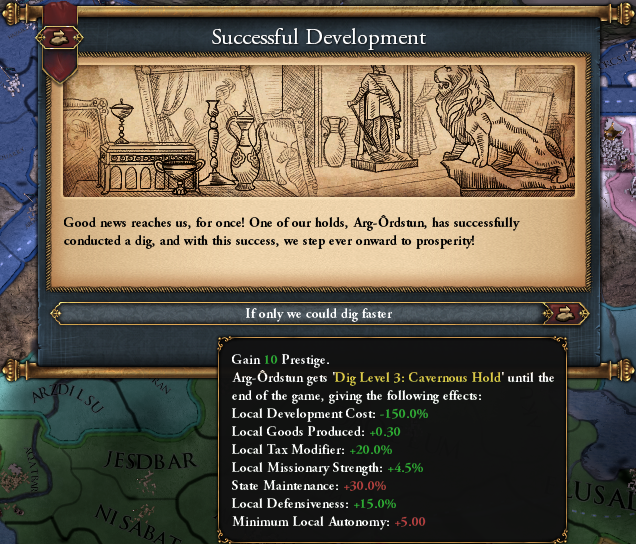 Expansion in Arg-Ôrdstun While the government was focused on the capital and the new holds, the diamond dwarves were diligently working on expanding their hold to accommodate the growing trade flowing through their now-open gates. There remained some loyalists to the old monarchy who were upset by the overlordship of Orlghelovar, but a great many other dwarves within its walls were more pleased by the economic boom that the reclamation had brought to them. We can't manually dig in holds that aren't our capital (yet), but those holds that meet the development requirements will eventually upgrade themselves.  Vast glass foundries in the cavernous depths Further expansion in Orlghelovar was completed in 1515, and brought with it the re-opening of some of the largest glassworks in the world, once thought lost completely. With modern techniques and technology, production resumed at full pace, and thousands of skilled glassmakers got to work perfecting the cobalt blue glass for which the hold was so famous. Already the structures of the upper hold were sparkling with artisanal glass sculptures, windows and murals, and goods were accumulating ready to be shipped out to the wider world.  Hands joined between mountain and sea Blackbeard's overtures to the copper dwarves paid off with the signing of an official pact between the two dwarven nations. Besides the closer economic ties, there was also the lingering threat of Dartaxâgerdim. The roads between Shazstundihr and Ovdal Tűngr were ruled by the human king Aban, whose grandfather had rebelled against the Sun Cult that proclaimed elves to be the Chosen of Surael, the regional god. In his lands, Dwarven caravans were subject to both raids from local goblin tribes and exorbitant transit fees from their supposed protectors. With this alliance, the dwarves hoped to restore the proper flow of trade coming out of the Dwarovar.  Threats to the north There were more reasons to seek allies on the surface. While trade negotiations with the Bulwari nations were progressing smoothly, the same could not be said for the northern frontier. Many merchants who ventured into Corvuria simply disappeared, and when they travelled with properly equipped guards the local nobility simply refused them entry to their lands. Eventually, King Davan IV issued an order barring any dwarven travellers from passing through the nation's territory, something that the Assembly of Clans took as a grave insult as they could not understand the source of the hostility.  The first shipments of cobalt glass depart from Shazstundihr With the completion of the trade infrastructure in Shazstundihr, shipments of glass and other goods were starting to be ferried down the Argrod. With support from the copper dwarves, the traders were soon able to make their way into Bahar, the northernmost region of Bulwar, and to begin plying their wares. The question remained exactly how much appetite there was for what they were selling.  Ancient and modern glass, side-by-side To the delight of all, the first merchants reported a great success in the city of Aqatbar where there was a pre-existing market for ancient Orlghelovaric glass. They had to be cautious to avoid flooding the market and making the glass worthless, but it appeared that there were even larger markets to be found in Bulwar Proper. The only problem was that lay on the far side of King Aban's territory, so for the moment the merchants had to be very careful with their stocks.  The Criminal Exile Act of 1517 As the political uproar over goblin migrations and crime reached fever pitch, the Assembly approached Blackbeard with an ultimatum, either do something to appease the public or face being thrown out of office. It was an upsetting fact that despite years of attempting to integrate the more civilised goblins into society, they simply were not recognized as such as dwarves focused on the worst cases. After some argument, a compromise act was passed. Any goblin found guilty of criminal acts or 'uncivilised behaviour' would be subject to expulsion from dwarven territory. This is an unfortunate requirement of the final mission of phase one, and some missions in phase two.  Blackbeard declares Orlghelovar officially open for business With trade resumed, the new glassworks operating at full capacity, and many of the holds of the Reach restored and contributing to the new dwarven economy, the time was finally right to declare Orlghelovar was once again open to the world. Missives were sent far and wide, and with them samples of the perfect, stunningly blue, glass that the hold was famous for. As money poured into the coffers of the hold, the 'Glasslords' who were at the heart of the economy found themselves with a near majority in the Assembly of Clans, ensuring that politics would continue to favour their interests. The final mission of the first phase gives us a new government reform boosting our production of glass even further and unlocks the second phase of missions.  Orlghelovar looks outwards Almost immediately, discussion turned to how best to grow the business of trade with the outside world. Dartaxâgerdim continued to be a thorn in the side of traders of heading for Bulwar, and there were many glassworks in cities along the coast of Bahar that would inevitably seek to compete with the Orlghevaric cartels. Pressure began to mount for an expedition to ensure that the routes south were secured. Meanwhile, the Corvurian embargo was a thorn in the side to overland trade with the Empire, not to mention the goblin tribes that still lurked in the wilds and raided both human and dwarven settlements alike. From the military's perspective, having hostile forces right on the outskirts of the capital was also something that needed to be resolved. Besides that, there were also ongoing development efforts within the mountains, particularly in terms of mining around Orlghelovar and Arg-Ôrdstun, as well as potentially studying the Deepwoods.  Followers of Corin declare their intent In Aelantir, a discovery had been made. A mural was found that appeared to depict the death of Castellos, the chief god of the Regent Court. This sent shockwaves throughout Cannor, and a period of mourning was declared. As that period began to wane, debates began to spring up as to who would now lead the Court. Castellos' son, Adean, ought to have been the prime candidate, but in the newly forming nations of Escann a different opinion had arisen. Corin, the slayer of the Dookanson, the breaker of the Greentide, and the Goddess of War. The Regent Court had failed to stop the orcish invasion, and yet she had done so even when she was still a human. Clearly, there was no better candidate. Martin Luther? Never heard of him. Now a warrior goddess, that's what we're talking about! This won't impact us just now, but the political landscape of Cannor and Escann is about to be upended.  New inhabitants Trade brought with it new faces, as humans and elves who were interested in establishing their own businesses made their way into the reclaimed dwarven holds. No longer was the Dwarovar a dark and dangerous place, but a shining home for anyone looking to further the cause of science and wealth. It also helped that most dwarves considered humans and elves to be far more civilised compared to the goblins who still lurked in the backstreets of the hold.  The first modern Glasshammer Fair To celebrate the opening of trade, the ancient Orlghelovaric tradition of the Glasshammer Fair was recreated. Amldihr, where it was originally hosted, remained out of reach, but the nation had gathered new friends from the outside world who were more than happy to visit Orlghelovar and help cement its position as one of the centres of the reclaimed Dwarovar.  Back from the Dead After more than a decade sorting through the ancient repositories in the Dead Dwarf Depths, the expedition returned with a wealth of knowledge and artefacts ready to be returned to the hold for further study. That was on top of the literal wealth that they had acquired, which was split partly with the government and the mage's guild whose service had been invaluable in dealing with the magical issues faced deep within the caverns.  The expanded army stands before the Tunnel of Love The veteran warriors of the expedition were immediately used to build a core of elite soldiers into the Orlghelovaric Army, which was then outfitted with hundreds of cannons forged with the latest techniques in the depths of the hold. Finally, Nali Elderbeard was put in charge of the force, a skilled and ruthless cannoneer trained by Flameaxe herself and forged in battle against a recent warband incursion. They set up camp just outside the entrance to the Tunnel of Love, the labyrinth guarding the entrance to Ovdal Lodhum. A final request was made to recognise Orlghelovar's hegemony of the Reach, or otherwise see the hold conquered by force.  The subjugation of the Hold of Love Balgar and Blackbeard met once again. For as much as Balgar saw Blackbeard as a bitter rival, times had changed, and the garnet dwarves were fading further and further into irrelevancy. With the rail tunnel under the control of Orlghelovar along with all known routes to the surface, their only options were to barricade their hold and never open it again or to join in the new dawn for the Reach even if it meant deferring to the republic. Many of Balgar's advisors saw this fact, and were will aware that there was enough firepower outside their hold that Blackbeard could have blasted down the gates, levelled the labyrinth, and finished what he had started fifty years earlier. Their advice was to accept the request, with caveats that would ensure that the hold remained under the Orcrend dynasty to honour Gerin's legacy. Blackbeard was happy to accept those terms, and with the signing of the accord the last independent holdout within the Reach joined with Orlghelovar.  The union of Diamond and Sapphire Before Blackbeard left Ovdal Lodhum, Balgar approached him. In the king's hand was the Sapphire Gem, which had actually been discovered by Gerin and brought into Ovdal Lodhum a century earlier. After Gerin's death, the queen mother had held onto the gem in memory of her husband, and now she too had recently joined him in the afterlife. A symbol of the loss of both his parents, Balgar decided to hand it over to Blackbeard and rather than focus on the past instead build his hold into one that could stand as an equal partner with the rest of the Reach. A display of love, replacing the hate that had bubbled within for so long. Blackbeard accepted the gift, and eventually added the Sapphire to the plinth in the Assembly Chambers in Orlghelovar, where it sat next to the Diamond. Reforging the Dwarovkron was a long way away, a task probably beyond his lifetime, and with the growing focus on the surface he wondered if it would ever happen.  Sunlight will reach this low One of the ancient wonders of Orlghelovar was the system of glass mechanisms that brought sunlight into the hold. For so long since the refounding that had been out of reach, but with the recent mass production of pure and clear cobalt glass, combined with ongoing technological developments and secrets dug up from the deep, those mechanisms were finally restored. The hold interior was soon filled with light, from the surface entrance down to the deepest foundry caverns, and all inhabitants found their spirits lifted by the shimmering daylight. Getting extra policies for free (you get one free per category by default) doesn't really help us until later in the game when we have at least 4 finished idea groups, but it is equivalent to +1 in each mana category once it is relevant. In addition, we get 25% cheaper advisors for finishing innovative. 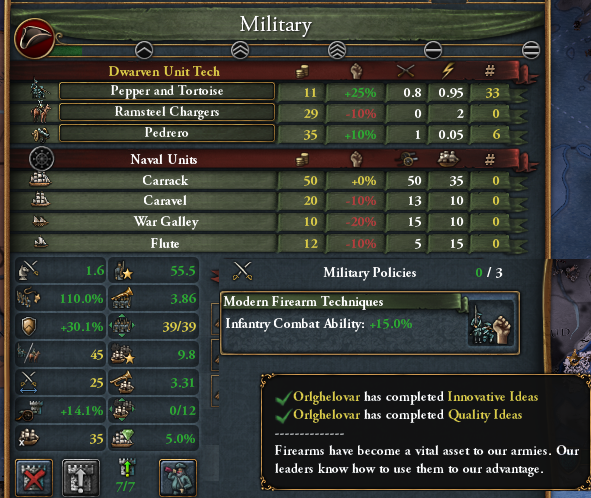 Firearms become the core of the dwarven military The benefits of the military academy continued to emerge as experience in combat against warbands led to the greater integration of guns into combat tactics. Whereas previously only scattered gunners would be found within a tortoise formation, entire units were now assembled to deliver devastating volleys against the enemy from behind the safety of a shield wall. With our first policy I thought it would be good to show off our current military stats. Quality and innovative have a really good combination policy for dwarven militaries. Generally innovative was a good pick to go with the idea of having more elite, rather than larger, army. Our army professionalism is a bit low, but that is a result of having to spend more time guarding colonies or going on expeditions instead of drilling. 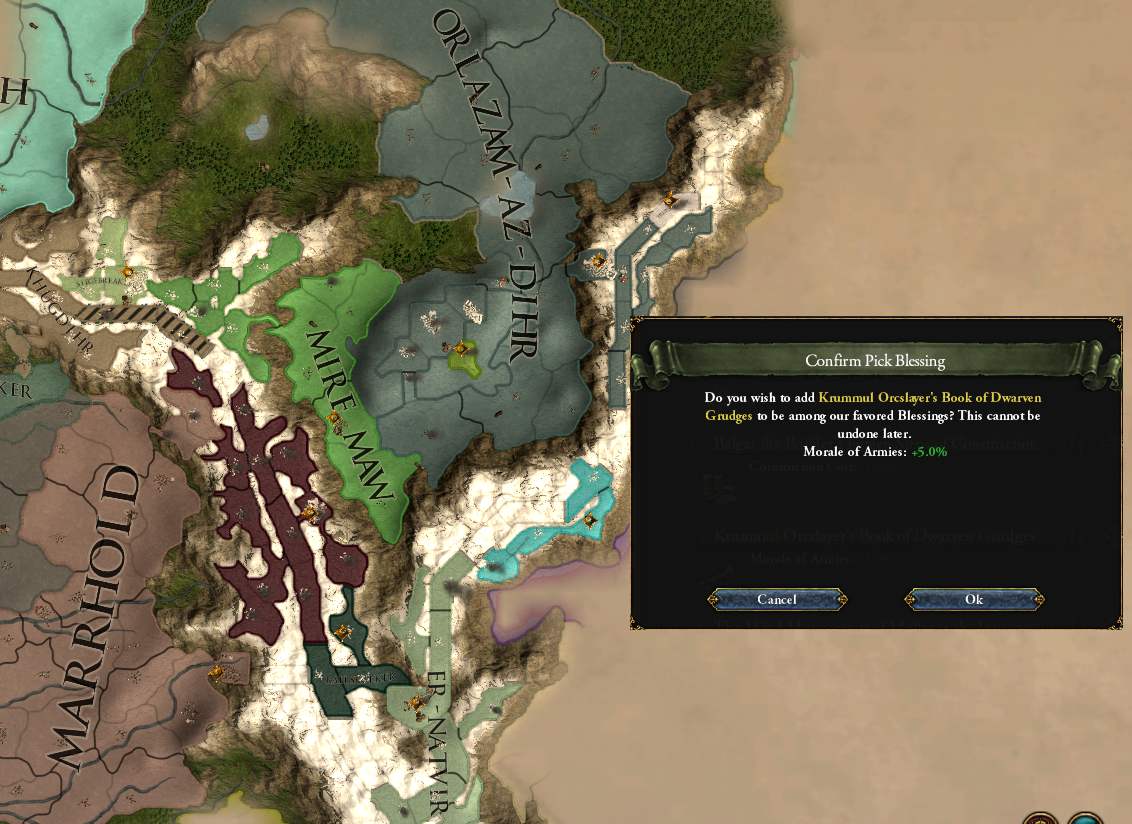 Reclamation of Amldihr From the north came news of the liberation of Amldihr by the forces of Orlazam-Az-Dihr. Squads of war rams were said to be guarding the avenues of the ancient capital as resettlement efforts began and long-lost treasures were reclaimed. Among these were a copy of the Book of Grudges, a reminder of why dwarves fought and as such a boost to the morale of the dwarf soldier on the frontlines. Meanwhile, the Ruby Company had retaken the trainyards of Er-Natvir and set to the task of rebuilding the rail lines. If the Arg Tunad could be secured, then engineers could be brought in to assist with a similar restoration within the Reach.  Marching out of the mountains In 1523, the Orlghelovaric Army was ready to depart from Shazstundihr. Relations with Dartaxâgerdim had continued to deteriorate, to the point that the only option was to secure the trade routes through force. The goal was Aqatbar, to secure a foothold on the coast and give Orlghelovar a surface base of operations for trading.  Battle at Nisabat Human armies assembled at Nisabat, allowing dwarven forces to advance to the coast and take Aqatbar before making their stand. Their allies were months away, on the far side of Bulwar, so they aimed to keep the dwarven cannons away from the walls of their capital. Olghelovaric and Tűngric forces met them directly, and their cannon volleys devastated the human lines while taking relatively minor losses themselves. Shortly after, the walls of Akal-Uak were levelled and dwarven forces entered the city while the Dartaxian forces retreated into the Harpy Hills.  Dwarves at sea While Orlghelovar had no navy of its own, it had inserted observers into the Tűngric Navy, who witnessed the copper dwarves chasing down the remains of the human fleet in the Gulf of Glass and destroying it in battle. It was not particularly pleasant for many of the observers to be stuck on a perpetually swaying and bobbing ship in battle, being a far cry from the rock-solid and stable mountains.  Sareyander forces join the fray Dwarven forces pursued the humans into the Harpy Hills, and worked on reducing the fortresses nestled among the lesser mountains of the region. As the sieges dragged on, scouts reported the appearance of forces flying black and gold banners. King Daraztarion of Sareyand had dispatched a significant expeditionary force to defend Dartaxâgerdim, which he considered to be in his sphere of influence as the primary contender for the throne of the Phoenix Empire. Sareyander territory stretched from the eponymous city of Bulwar to the borders of Rahen, so the expeditionary force was itself only a fraction of what Daraztarion could bring to bear. Our first encounter with a Great Conqueror. Sareyand has received a swathe of bonuses that has led them to become a major power in the region. If we need to fight them directly, I will go into more detail on exactly what they have received. They are also our first example of a split between the military and administration. The government is run by elves, which means they have a slightly better economy and better diplomacy, at the cost of being worse at tech. The military is made up of humans, which basically makes it middle of the road without notable bonuses. If they had an elven military we might have more of a problem as that gives significant combat buffs at the cost of terrible manpower, which would have been countered by the GC bonuses.  Divided and conquered Commander Shalebeard of the Tűngric army devised a plan to deal with the Sareyander that presented a large risk but with significant payoff. It was clear that King Aban was not keen on his supposed allies, and refused to cooperate closely with them. With that in mind, it ought to be easy to split them apart and defeat them in detail. Dwarven forces retreated into the mountains for a moment, leading to Aban to attempt to liberate his capital while Sareyander forces split to search for the dwarves. Then, when they were a few weeks of marching apart from one another, the Orlghelovaric Army swept in to lift the siege of Akal-Uak, destroying most of what remained of the human army, while Shalebeard struck out of the mountains with his forces to crush a Sareyander detachment leaving the main expeditionary force divided on which battle to relieve. As each individual battle was over quickly, it was straightforward for one dwarven army to reinforce the other should they be engaged by the main force. Instead of falling into that trap, they withdrew into the hills again and regrouped with the surviving Dartaxians.  Pursued and defeated In a more even fight, dwarven quality held the advantage. Though it was still a brutal fight, the outcome was a decisive victory for the copper and cobalt alliance. The expeditionary force pulled back from Dartaxâgerdim to recuperate, leaving the rest of the nation open to occupation.  Victory on the surface Facing the possibility of being exiled from his own nation to one ruled by elves, King Aban agreed to a ceasefire that saw the city of Aqatbar and the surrounding coastline ceded to Orlghelovar. Finally, trade was free to flow from the mountains to the sea, and the dwarves of the nation were able to dip their toes into the water themselves. However, this was only the first step. The northern trade routes were still blocked by Covurian hostility, and the first taste of Bulwari politics had made clear that there were elves with grand ambitions who would resist encroaching dwarven influence. One war on the surface had been won, but it was not going to be the last. To be continued…
|
|
|
|
There are some mission trees which give you the option between purging and accepting (or well, at least one that I've played), but a lot of them and especially dwarves are just like this one if not worse. The orcs and goblins are lucky we didn't pick Ovdal Lodhum or the mithril hold. I'm not adverse to attempting a little modding to get us back on a relatively progressive track as we work through the next few missions that relate to goblins.
|
|
|
|
That was easier than I expected. What do people think? Edit: I think these are the only relevant missions, now updated: 
Sybot fucked around with this message at 18:37 on Mar 19, 2023 |
|
|
|
For what it is worth, I do agree that it's not entirely lore accurate to go maximum tolerance as dwarves in general, but it's something that been building up since the start and we are playing one of the most innovative holds so I have no problem being a bit more progressive than we ought to be. Chapter Six: A Republic for All 1525-1544  Delicately engraved glass The need for tools proved to be a valuable incentive for greater economic integration between Orlghelovar and Arg-Ôrdstun. In the caverns behind the diamond hold were countless seams of precious gems, which only needed the support of the government to see mined to their full potential.  Setting a policy Ongoing digging in Orlghelovar was paused as engineers analysed a layer of apatite that needed special consideration to safely break through. After considering whether it would be easier to dig around it, they sent the question up to the administrators in the hold. The response was straightforward. Keep digging, no matter what lay in the way. If it was too difficult with conventional tools, then that was where they could innovate and advance their knowledge of the mountains.  An expedition of curiosity A detachment of dwarven soldiers returning from the war on the surface spotted strange figures standing on the mountainside. With permission, the followed them and found an entrance into the Reach from high in the Harpy Hills, and were able to link up with local militia near Ovdal Lodhum. Curious about the figures, they assembled an expedition to descend deeper into the passage and find out just who they had seen. Those ten thousand dwarves don't actually exist, they actually comprised ten damaged units with less than one thousand total survivors. I'm showing off a little exploit whereby the expedition system doesn't account for the strength of regiments, which means that you can magic up soldiers by feeding understrength regiments to an expedition, assuming it succeeds. A short one like this is perfect.  Atrocity and backlash The remainder of the returning army passed through the Bazibar region, where the wilds were still filled with goblin tribes. Some of the less disciplined units took the chance to plunder the locals and burn their villages. Local human settlements joined in, and the situation rapidly escalated into a full-on pogrom. Thousand of goblin civilians died, and thousands more were driven out of dwarven lands altogether, disappearing into the high mountains to the east. When the perpetrators were brought before military tribunal, they citied the Criminal Exile Act. The goblins had been squatting and raiding, clearly criminal and uncivilised behaviour that ought to not be tolerated now that dwarven justice ruled the land. Blackbeard was horrified to hear that his compromise had been used to justify such brutality. It was clear that giving any ground had been the wrong decision, and that he should have stood up for the goblin allies that he had made during the times of the Cartel. He put out an executive order to halt any expulsions under the Criminal Exile Act, and called upon many of the favours he had accumulated in his time in office to keep the Assembly of Clans placated for the moment. Having re-written the remaining missions to no longer require us to engage in such backwards behaviour, I can now revoke the expulsion order and set a focus to try and improve the conditions for goblins within our territory.  Post-war tax relief The war on the surface had been a drain on limited dwarfpower. Between ongoing reclamation efforts, the endless expansion of industry, and skirmishes with warbands deeper within the tunnels a lot of clans found themselves with their sons and daughters dead or working on some distant project. Blackbeard announced tax relief for any clan that had lost someone in a war on the surface, aiming to placate those who might question why dwarves were leaving the safety of the mountains. Just another vanilla event, but I took note of it because a hit to tax efficiency barely hurts a dwarf hold as the majority of our income is from production and trade.  An age of secrets uncovered and conflict unchained Fervent Corinite followers were rapidly spreading from Escann into the Empire, and several nations had now converted outright. Meanwhile, a secretive society known as the Ravelians were emerging in cities, discussing the secrets found within the ruins of the Precursor Empire and debating the nature of the gods. Conflict seemed inevitable, but where exactly the front line would land was not clear. As Orlghelovar continued to expand on the surface it would almost certainly have to get involved.  Rooting out the rot As part of the revocation of the Exile Act, Blackbeard clamped down on the more independent units in the army. A proper professional army did not need to commit atrocities for fun or for profit, it only had to do what was right for the republic. Many clans had made these units the personal playgrounds for their scions, and so rumbles of discontent spread through the nation as a whole, though Blackbeard's firm grip on the core of the military prevented it from escalating.  Attempting integration Goblins continued to make their way into Orlghelovaric territory, regardless of what the laws said one way or the other. While they often found themselves disappearing into the darker corners of the holds, it was still a better life than when they were actively being hunted down. Integration would take a long time, but Blackbeard was willing to make the extra push in areas where he had direct control. In the capital, some more prominent goblins were encouraged to set up businesses that could employ and house refugees and prevent them from falling into the hands of organised crime. Adding more minorities increase the autonomy of provinces, but the capital is luckily exempt from this.  To push across the gap The clans were still not happy with the policy, but Blackbeard had accumulated enough goodwill and personal power from the explosive growth of the nation that there was little they could do except engage in harassment on the fringes of society. Another way was in terms of foreign policy. The idea of orcs occupying the only link to the main Serpentspine was intolerable, and so the Assembly of Clans demanded that the Army be sent in to clear out the orcs and force them to acknowledge dwarven rule.  Mushroom friends The source of the mysterious figures that had been haunting the tunnels was discovered inside a cave coated with delicious mushrooms. Fungal lifeforms that had somehow gained humanoid forms occupied the depths, and formed a primitive and peaceful society. In the interests of scientific knowledge, the members of the expedition attempted to trade and communicate with them. While the language barrier was never quite cracked they were able to pass along their own peaceful intent and received a bundle of prepared mushrooms (deciding not to think too hard about it) and some treasures that the inhabitants had found when they had settled in the cave. The fungoids expressed no interest in joining the nation and were deep enough that they would not present an issue to mining in the caves above, so the expedition took their leave.  Tunnel secured The expedition to the Arg Tunad was a straightforward success, with the tunnel itself coming under control and the Silvertusk warband surrendering. The warband's chief, Conakk, styled himself as a knightly grandmaster and wore armour more akin to an Escanni knight captain than a orcish warrior. He had also converted to Corinite, and claimed that she had shown her superiority over the Dookanson and thus was the true god worthy of following. Silvertusk is on the way towards de-monsterizing itself, which means that the diplomatic malus that screwed us over before is not as large and we have a chance of properly integrating them.  Humans come to seek their fortunes More and more immigrants were continuing to flood into the outlying holds of the nation, especially as the daylight-enhancing mechanisms were installed into more and more holds making them tolerable for surface dwellers. Humans were especially common, as they sought economic gain in a booming economy in a place that was seen as being more tolerant than the highly religious elven nations that dominated Bulwar. Dartaxâgerdim was in the process being carved up by its neighbours after King Daraztarion of Sareyand decided to favour the elves of Birzartanšes over the embattled humans.  Rise of the Science Clans Now that they had found their fortunes, many clans were pivoting towards innovation and technology to stay one step ahead of their competitors. Supporting such endeavours was encouraged by the government, and over time lead to clans whose primary output was skilled scientists and engineers rather than merchants. The haphazard workshops and laboratories across the hold were quickly being centralized under organised scientific endeavours.  Rumours of Gor Bűrad Progress was slowing down, as fewer and fewer dwarves were eager to risk their lives on the very fringes of the nation's control. However, there was still more to discover. A garnet scholar encountered one of the forward parties further along the Argrod and discussed the long-lost hold of Gor Bűrad, at the far end of the Reach. The promise of being able to study and sell volcanic glass saw a new wave of enthusiasm in dwarves who had not yet found their place in society. A lot of the colonist bonuses that we had have expired by now, so this is much needed to help push us over the edge and finish the colonisation of the Reach.  Friendship in Perpetuity Blackbeard was finding more and more of his time was being spent on the surface, including resolving the integration of the territories around Aqatbar and travelling back and forth between Orlghelovar and Ovdal Tűngr. Those paid off greatly though, as the growing economic and political ties between the two dwarven nations lead to the signing of a treaty of 'Friendship in Perpetuity', whereby citizens of either hold were welcome in one another's territory, trade could flow freely, and assistance in war was guaranteed. Blackbeard also took the opportunity to make some unofficial ties with officials in the coastal hold, dwarves who were interested in the wealth that could come to them from even closer ties to the local hegemon.  Work completes on the Warding Gate In Verkal Skomdihr, the mage guild and government scientists had been working in tandem to try and decipher the runes that adorned the outer gate of the hold. In ancient times it had prevented the encroachment of the Deepwoods, and even after the hold's fall it had still been enough to prevent the whole city from being consumed. After decades of study, magesmiths were able to finish repairs to the gate and begin the process of pushing back the greenery. However, the scientists were interested in what exactly lay within the Deepwoods. There was surely a wealth of knowledge and fey-touched materials that could prove fascinating.  The founding of the Assembly of Holds Managing the increasingly far-flung nation was proving an ever-harder task for the administration in Orlghelovar. The Assembly of Clans was hardly representative, being primarily made up of dwarves who lived in the capital, and there was the risk of the more distant holds agitating for independence. The solution to this was to reform the Assembly of Clans into a new Assembly of Holds, where representation from each hold was guaranteed and their interests could be heard within the government. All of the holds within Orlghelovar's control were brought into the new Assembly, as well as human and elven representatives from the city of Aqatbar, observers from Ovdal Lodhum and Ovdal Tűngr, and even knight orcs adorned in Corin-red armour representing the Silvertusks. It was a grand experiment in making the Republic more than just for its dwarven inhabitants, but for all races that dwelled within. Upon its founding, the Assembly passed a bill to fund defences for Aqatbar and the outlying holds as proof that it was a successful institution. Parliament mechanics give special bonuses to holds with seats, but it is a shame we will be expanding on the surface so we will have to assign seats to provinces that aren't holds sooner or later.  Entering the Deepwoods The representatives from Silvertusk had a request that caught the interest of several parties, including those from Verkal Skomdihr. They had previously been residing within the Deepwoods, and had only been forced into the Dwarovar by conflict with another, more barbaric and backwards, orcish warband. They offered to lead dwarven forces into the fey forest in return for regaining the territory that had been lost. The Assembly did not want to pass up the opportunity to study more about the mysterious realm, and agreed. Armies were prepared, with orcish guides, to march both from the Arg Tunad and from Verkal Skomdihr.  The Verdant Link If not for their guides, the dwarven forces would have been lost in the endless twisting and logic-defying passageways of the woods. Multiple times orcs emerged as if from nowhere, bearing banners that had last been seen hundreds of miles away on the other front line of the invasion. More than once the southern expedition was driven back to Verkal Skomdihr, hounded by orcs who knew the woods better than they did. Despite the defeats, each drive into the woods brought back a bounty of mysterious plants and lumber, which paid for the invasion by themselves in knowledge and economic value. The Deepwoods are a confusing place. These provinces are spread throughout it, so don't imagine that just because your enemy is on the other side of the woods they can't find their way to you. Conversely, it also works in the other direction so you can send your troops through to attack someone who seems too far to reach.  Meeting the Wood Elves The liberation of Silvertusk territory proceeded more smoothly, as the guides that they had brought with them were soon supplemented by local tribes who rallied to their banners. Soon, the tribal lands were back under control and Conakk's knights were bringing the word of Corin to the orcs who had been left behind. A more curious encounter was had in one of the Gladeways. With the number of orcs dwindling due to the conflict, elves began to emerge carefully observing the dwarven movements. As the war drew to a close, an army of elves under the command of Ceanna Bricena moved to take control of the passageway and cautiously negotiate with the Orlghelovaric forces. After it was made clear that the dwarves did not intend to settle or conquer, merely explore and study, a tentative agreement was made to open diplomatic relations with the outside world. I went to take a look at the lore for this, and oh boy there is a lot of it, way too much to get into here. Suffice it to say the Deepwoods and their history have a lot going on that another LP can tell if they would like.  Pushing to the western coast Later in 1536, the Orlghelovaric Army marched out of the doors of the capital, with their sights set on the ruined fortress of Bal Ouord and the surrounding region of Ourdia. Securing trade out to the Gulf of Ouord and from there to the Empire was essential to ensuring trade dominance, and the insult of barring dwarven travellers from Corvurian lands could not be allowed to stand. Covuria called upon allies from within the Empire, including the elfrealm of Ibevar famed for its elite troops.  The battle of Ovdal Tűngr The first battle of the war actually took place within dwarven territory. Corvurian forces bypassed Dwarven forces sieging down the fortifications at Aldwigard and ignored the mountains altogether. They marched down the coast and attempted to storm Ovdal Tűngr and knock it out of the war first. However, they dug their own graves as the Orlghelovaric Army turned around and struck them from the rear when they were caught against the near-impregnable outer walls.  The Cavern of Crystallised Daylight Even as war raged just outside the hold's walls, digging continued within the capital. Miners dug into a large but unassuming cavern, but as they worked to illuminate it the true beauty became apparent. Almost immediately they requested the daylight mechanisms be extended down into the cavern, so the light of the sun could be reflected and refracted by the crystals coating every surface. Soon, the cavern became one of the most popular tourist destinations within the republic. Free splendor for the rest of the game is great, this is equivalent to half of an age objective all by itself.  The power of magic Skirmishing continued along the coast, before a coalition force of elves and humans arrived to retake Aldwigard. It was a force unlike anything that the Orlghelovaric army had faced before, with heavily armoured Corvurian knights leading the charge, elven archers peppering lines with pinpoint accuracy, and mages both human and elven obliterating tortoise formations with fireballs, earth-shattering quakes and enchanted weaponry. Even dwarven mithril would break under such a pummelling, and the army was forced to withdraw back into the mountains to recuperate. King Dominic of Celliande, a powerful half-elven mage, took command of the war and coordinated the disparate forces to great effect, making a direct confrontation on the open marshlands a risky proposition. Mages are killer in the early game. As you can see, they get a ton of shock and siege pips, even breaking the normal game conventions for maximum allowed. This mage wasn't even the worst they could be, it can go higher than that.  Defence versus defence However, fighting in the open was not the only way to win a war. While the coalition made a second attempt to take Ovdal Tűngr, dwarven forces pushed directly for the Covurian capital. With the offensive strength of dwarven cannons, and the defensive strength of dwarven walls, it was clear who would win the race.  Deepwoods expedition Negotiations between the Orlghelovaric delegation led by Commander Firmhandle and the elven clan led by Ceanna Bricena were very fruitful, and trade opened up facilitated by elven understanding of the fey logic of the woods. Hungry for both lumber and exotic goods, the merchants of Verkal Skomdihr were happy for trade to flow through the Warding Gate and into the rest of the Dwarovar. The wood elves are doing well for themselves. Apart from that one green orc tribe that has almost the same colour as Er-Natvir, most of the rest of the woods are under their control. There's also an irony here compared to how things would have gone if we had reformed Verkal Skomdihr instead.  Turnaround at the gates of Arca Corvur Elven forces attempted to relieve the siege of the Corvurian capital. They intended to pin the dwarven forces against the walls in much the same way that the dwarves had done at Ovdal Tűngr, making use of supporting knights to hem them in while archers picked them off at will. However, they had not counted on the dwarves being rearmed after the previous defeat. Now armed with clockwork rifles capable of intense and rapid volleys, rows and rows of charging knights were cut down while cannons were turned on the archers to suppress them. General Ironbar ordered the riflemen into melee, where their mithril bayonets sliced through elven armour like it wasn't there. The famed elven warriors of Ibevar were routed, with the survivors scattering into the Covurian countryside where they disappeared without a trace. It was clear that innovation was leading to a new age of warfare.  A hold of artisans Orlghelovar continued to grow deeper into the mountain, and with that growth came an increasing specialization as the economy focused on the craft of the glassmakers, the development of precise scientific instruments, and the carving of beautiful crystals and gems from deeper within the caves. The cavern walls around the great glass forges were lined with countless artisan workshops producing unique artefacts, and large manufactories run by the glasslords to mass-produce cobalt glass for surface consumers. As a hold develops you get the option to specialize it, giving it some strong local modifiers and decent global modifiers that can really stack up if you focus your specializations.  The Crimson Deluge After the fall of Arca Corvur, the war came to an end with the surrender of northern Ourdia. Local Corvurian nobility retreated to their castles for the time being as dwarven administrators moved in and caravans started leaving Orlghelovar for the Gulf of Ouord. After just a few months of peace, deep red clouds settled over the region. Blood, or something with the consistency of blood, began to rain from the sky for days at a time, coating the land with a sickly red stain. Floods of blood swept away fields and villages in low-lying regions, and tides of refugees painted crimson fled to higher ground bringing with them despair and fanaticism. The Crimson Deluge had begun. It eventually became clear that the Deluge was not just affecting those lands, but everywhere from the Dameshead to the edge of the Serpentspine. Corinite preachers declared that this was a sign of Corin warring for control of the Regent Court against Adean and his allies and that her followers should join in her example and seize the worldly institutions of the Court. For their part, the dwarves stayed in their mountain holds and let the fanatics do as they wished so long as they didn't disrupt trade. Anbennar's version of the reformation is really  The true nature of Covuria. In the midst of the chaos, adventurers swept into the occupied territory with one goal in mind. In towns and villages across Ourdia they clashed with the Corvurian nobility. For all that time, Corvuria had been harbouring vampires within its midst and even elevated them to the position of nobility within the nation. Now that they were no longer being protected the time was right to drive them out entirely. In streets already running red with blood, a little more would not change anything. There are a whole set of adventurer related mechanics, which I won't get into right now.  Arrival at Gor Bűrad In the safety of the mountains, the easternmost reaches of the republics expansion finally located the entrance to Gor Bűrad. Reclamation would come soon, and beyond that utilization of the volcano that the hold had been built into.  Securing the Gulf of Ouord Dwarven forces marched out under the driving crimson rain to push further along the coast and ensure the dominance of Orlghelovar in the Gulf of Ouord. Of most interest were a number of shipyards that would allow Orlghelovar to produce its own ships and work alongside their allies in taming the waters.  The Bulwari-Imperial Glass Policy With trade to both the north and south now open, the Assembly opened debate on establishing an official trade policy. The vote saw a clear majority for extending trade of cobalt glass and all other exports of the Reach to Bulwar and to the Empire, as well as doing as much as possible to capture the trade flowing westwards and profit off of that. One day dwarven ships would be picking up from cargo from Aqatbar and delivering it to Anbenncóst, with no intermediaries to siphon off wealth that belonged to the republic. Among the new goods approved for export were glass musical instruments, which had seen increasing uptake within the military in place of more traditional metal trumpets and leather drums. Though fragile, they produced a unique sound that ensured that a cobalt dwarf was never unsure of their place on the battlefield.  Reconstruction of Bal Ouord Under the withering effects of the Deluge, dwarves around the Gulf struggled to find shelter with towns being filled to the brim with refugees and camps being too vulnerable to being washed away by sudden surges of blood. To deal with this the government sponsored reconstruction efforts on the ruined fortress of Bal Ouord to provide a safe haven for the regional garrison and eventually project power across all of Ourdia. There a number of these 'fortress' great projects around Cannor. Most of them don't really offer much except prestige and local defensiveness, but Bal Ouord gives us manpower recovery and army tradition so it is really nice to have.  Legitimizing goblin participation in society Despite the rescinding of the Exile Act there was still a consistent problem of goblins finding their way into organised crime within the nation. However, it was a simple fact that the cartels that ran the economy were only a couple of steps removed from the same situation. Blackbeard was able to leverage his connections with the cartels, and well as some government funds, to pay off the cartels enough to allow a goblin-led cartel to rise from being a player solely on the black market to participating openly in society. As their trade became public, it was suddenly almost as common to see a goblin walking openly on the streets of the hold as it was a human or elf. With the acceptance and a few other events, Goblins have been bumped up from oppressed to coexisting, the same level as humans and elves. I didn't expect it to go quite so smoothly actually.  To sail to the Empire The republic had cemented its ideals, forged an unbreakable friendship, and secured the flow of trade out of its borders in multiple directions. It had won victories against human and elf as much as orc and goblin, proving that dwarven ingenuity was nearly unmatched in the world. The next step would be to demonstrate that to the world on their own doorstep. It was time to resume relations with the Empire of Anbennar. To be continued…
|
|
|
|
Chapter Seven: Unbridled Wealth 1544-1562  Filling the Gulf of Ouord with construction To deliver the Glasshammer Fair to the Empire, a vast fleet would be required, more than the contracts with Ovdal Tűngr could provide. Shipyards started construction along the shores of the Gulf, and they were soon followed by docks to house the merchant fleets.  Trade offices open in the cities of the Empire Work continued abroad even while the trade fleet was being prepared. A new policy allowed prominent merchants in foreign cities to act as proxies for the Orlghelovaric cartels and even earn citizenship this way. One of the more prominent was a silver dwarf by the name of Ironsteel, who offered the republic a way into the tightly-bound merchant circles of Anbenncóst. Even though transferring trade power does nothing for us, collecting from a node that isn't our trading city would tank our trade power here so it's the best option.  The Dig-Deeply Initiative With settlers arriving in Gor Bűrad, a fifth hold was added to Orlghelovar's direct control. It was becoming increasingly apparent that relying on local leaders to push on with the deepening of the hold was too slow to keep up with the economic growth that the nation needed. Blackbeard signed off on a proposal put forward by the Assembly to establish an office to centrally coordinate digging efforts across the Reach. However, the sheer size of the bureaucratic effort meant that the initiative would require a massive influx of funding to establish itself. Once we pass this decision, we can manually upgrade our other holds. I'm sure I have no other reason at all to hoard money...  The fall of Irrliam The final phase of the wars for the Phoenix Throne were approaching in Bulwar. Daraztarion of Sareyand and his allies in Birzartanšes launched a pincer strike against the Kingdom of Irrliam, led by the young and inexperienced Queen Imariel. Out of allies, and out of time, it was surely only a matter of time before Daraztarion defeated her and claimed hegemony over the whole region.  Dwarven intervention Not for particularly charitable reasons, but pure economic greed, the Assembly authorised an expedition into Birzartanšes to claim the remaining glass-producing regions of the coast and ensure dwarven dominance of the glass trade in the region. Under the shadow of cannons, the capital of Birzartanšes fell quickly while all of their forces were fighting in Irrliam.  The Deluge Ends After a decade of blood rains falling across the breadth of a continent, the Crimson Deluge finally came to an end. There were no further signs from the heavens, no indication at all as to whether Corin or Adean had triumphed in their battle. All that was left behind was hundreds of thousands dead from flood, famine and violence, and swathes of destruction across the Empire and Escann. Where the gods had failed, mortals would have to take up arms and finish the fight themselves. For those who aren't familiar with this map mode, green represents prosperous provinces, which is a nice little economic modifier, and red represents devastated provinces, with the brighter red being worse devastation.  Using their own fortifications against them The overall strategy of the war was to funnel Sareyander forces and their allies into kill zones created by the safest routes being guarded by the fortresses the dwarves had seized in the opening weeks of the war. With a manoeuvre advantage, the highly disciplined Orlghelovaric Army was able to strike wherever the enemy were weak and pull back to safety before the enemy could bring their superior numbers to bear.  A monopoly on glass It took two years of back-and-forth fighting over a small region of Bulwar, but eventually the ruler of Birzartanšes conceded dwarven ownership of the towns of Deshkumar, and more importantly their glassblowing industries. They had a much bigger prize in central Bulwar to focus on.  Learning from Ovdal Tűngr As the trading fleet was assemble, the next issue was finding sailors for those ships. The Deluge had done immeasurable damage to the fishing industries of the Gulf of Ouord, most of the merchants had fled to safer climates, and dwarves were not sailors by nature. The solution was to bring in specialists from Ovdal Tűngr. There were certain styles and techniques that dwarven ships could adopt to help retain the impression that their feet were on solid ground. Whether that was designing a ship to retain some of the familiarity of a hold, or rigging sleeping quarters to stay upright without swaying, they had thousands of years of experience on the water to induct the cobalt dwarves into. Most of these objectives are pretty pointless for us with the focus on religion and overseas, but luckily for us straddling the edge of Cannor and Bulwar means we score the two continents objectives.  Money breeds power The outflow of trade was such that the cartels had to be integrated more closely into the government to keep the economy from falling into chaos. Key members of the merchant clans were assembled to advise the Assembly on economical matters, and a large number of key glass, metal, and gem export contracts were granted in perpetuity to some of the more prominent clans. The cartel heads were rich in a way that had not been seen in dwarven civilization in thousands of years, living in opulence matched only by the kings and emperors of the surface.  Volcanic clearances The settlers in Gor Bűrad had spent months in skirmishes with the orc warband that had settled in the hold. As the uppermost levels of the hold were cleared and resettled, the orcs were driven into the near-uninhabitable lower layers where magma channels had overflown their banks and filled avenues with solid rock, or toxic gases consumed anything living that walked the wrong way. Under these conditions, they attempted to break out and slaughter the settlers, but were met with a detachment of the Orlghelovaric Army that had been stationed in the hold in case of the eventuality. As with the capital, any survivors were drafted in to work on restoring the hold.  150 years young Blackbeard had spent over a century leading an adventuring company, and then a nation of ever-growing complexity. In his old age he was finding he had no choice but to leave more and more of the task of ruling to others. Many dwarves were seeing him as a figurehead for the Assembly, rather than someone with real authority. He was still sharp though. During a debate on the growing religious crisis in the Empire, he spoke up and gave a rousing speech about how dwarves needed to demonstrate that reason was the way forward, and that mortals should not be fighting the god's wars for them. His words tipped the debate in favour of non-intervention should war break out between the Corinites and Adeanics.  Booming trade in crystal glass In Deshkumar, the local merchants had adapted quickly to dwarven rule. They focused on producing a unique style of crystal glass that gave a different impression to Orlghelovar's speciality cobalt glass, and thus was not competing directly against the mass-produced, cartel monopolized glass. The marketplaces of Aqatbar were filled with goods from all along the Gulf of Glass, where they would board ships flying the Cobalt Links or the Copper Gate.  The arrival of printed Corinite papers Merchants returning from the Empire were coming back with interesting items. They carried whole crates full of identical pamphlets. Most of them were religious, Corinites attempting to proclaim their goddess' superiority, but there were also newspapers, scientific papers, administrative documents, and just about anything that could be imagined. Almost immediately, pressure started to build from every dwarf who had sprained their hand drawing or carving out runes to find away to adapt it to the runic text used within the hold.  The gnomes yet live Among the papers was a scientific paper written by the Free Gnomes of Nimscodd. This came at great surprise to the scientific community within Orlghelovar, who had thought that the gnomes were all now living under the oppressive heel of Gawed, which did its best to suppress any potentially disruptive innovation within its borders. It emerged that a small bastion of gnomes still held out in the cold and rocky Storm Isles, off the northwest coast of Cannor. An envoy was sent to open up relations and see if something could be done to save the brilliant minds who had been forcibly isolated.  Official endorsement of free trade While many nations around Cannor banned the spread of the printed word for fear of increasing radicalism among the population, no such edict even reached the floor of the Assembly of Holds. Trade was to flow freely, whether that trade was goods or words, so that the nation would always be at the forefront of knowledge. 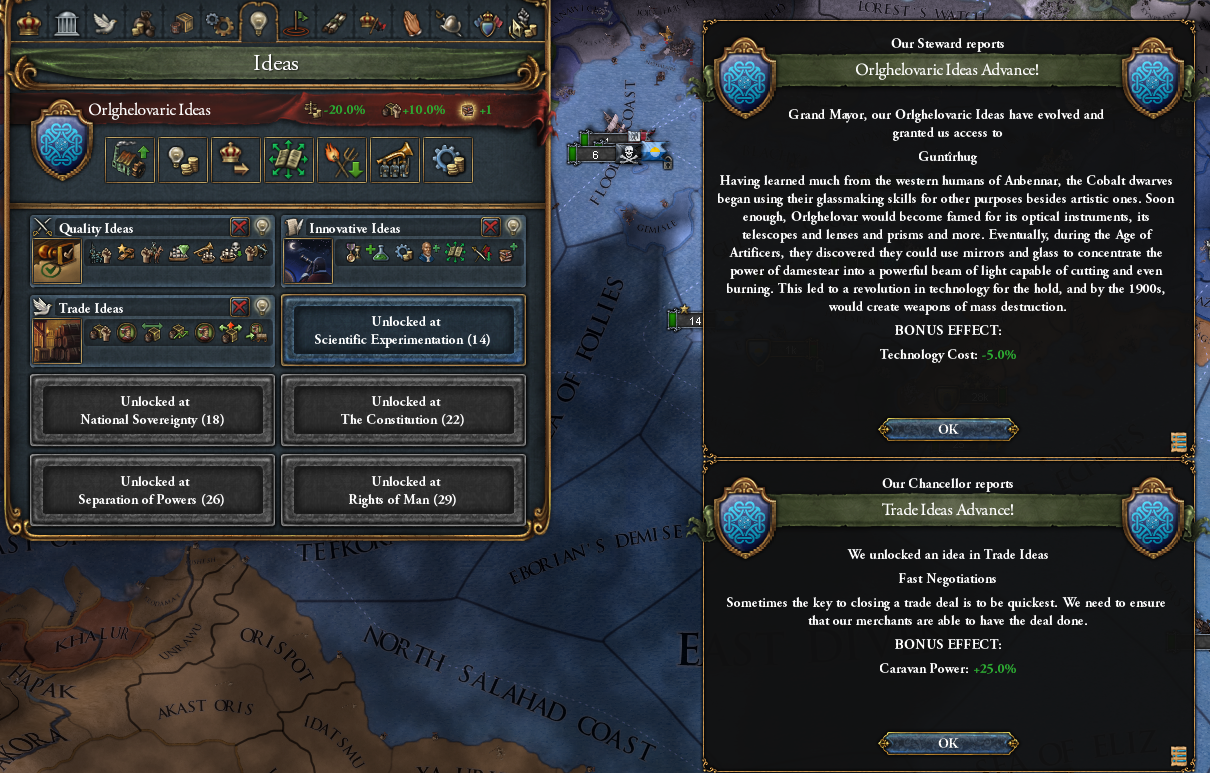 Reinvestment of wealth into knowledge In addition to free-flowing trade, the science clans of Orlghelovar were incredibly eager to turn the wealth they had built up into a technological advantage. All over the hold, production facilities were becoming more efficient fitting more into less space, and that space was being taken over by laboratories that made use of the produce to study deeper into the potential uses of glass. Finishing trade gives us on more merchant, while finishing our national ideas also gives us +1 total policy per type. That doesn't really help now, but will let us really stack buffs as we approach the endgame. Also…try to ignore the spoilers in the text.  Edicts of quality Countless banks opened up, eager to invest in the vast wealth flowing into the hold. An entire service economy was building up around this investment, with commodities exchanges springing up to allow the cartels to optimise their profits. Alongside this, the government issued a number of Edicts of Quality focused on making sure that no manufacturer attempted to undercut their competitors or tarnish Orlghelovar's name by producing low quality products.  Last of the vampires The minor civil war in Ourdia came to a close in 1551, as vampire hunters finally drove out the last of the creatures that had plagued the land. Those who were not burnt to ash by the sun or staked in their coffins fled north into Corvuria, where they would continue to plague the peasantry but with state sponsorship.  The Glasshammer Fair begins The following year, a fleet of ships set sail from dwarven ports laden heavily with countless varieties of glass goods and technological innovations and made their way into the Dameshead. They docked in Anbenncóst, alongside the permanently moored city-ships of the elves, and made their way into the city to present to the world exactly what they had accomplished in the daylight-lit depths of the mountains.  Building gnomish contacts at the Fair As the Glasshammer Fair continued, almost every race could be seen participating, enthralled by the products on display. What was most interesting though, was the gnomes who had made the dangerous journey from the Storm Isles to participate and learn more about the innovations that the Orlghelovaric envoy had described to them. Having seen them first hand, they were happy to discuss opening a gnomish institute of technology within Orlghelovar itself. Holy text dump. It's not often an event box goes off the screen like that.  Twisting trade into espionage Orlghelovaric merchants could now be found all across Bulwar, Cannor, and even some of the easternmost colonies in Aelantir, plying their wares. This gave the nation an unprecedented opportunity to make use of these merchants for more underhanded purposes. Whether that was to gain an economic advantage, undermining local trade rivals and bribing officials, or even a future military advantage, there were many options. One such option lay within Orlghelovar's own closest ally. Blackbeard had been working on closer ties with certain clans within Ovdal Tűngr, enriching them at the expense of their rivals and ensuring they got higher placement on the hold's Assembly of Clans. With just a bit more of a push, they could gain a majority and force the Lord Mayor to cede more power to Orlghelovar.  Reclaimed, but relost News from further north in mountains brought dire tidings. The dwarves that had reclaimed Er-Natvir had been pushed out by a coalition of orcs and goblins. It wasn't a total disaster, as the surviving dwarves were able to retreat to holdouts in the rail lines, but it did represent a potential crisis brewing on the nation's mountain-facing border. An expedition to punish the perpetrators, reclaim the hold if possible, and support the refugees was dispatched.  Inventors, short and shorter The arrival of the first gnomish immigrants to Orlghelovar was heralded with a great celebration, although the gnomes were much more interested in getting to work in the hold's laboratories than engaging the customary week of drinking. Goblins even joined in the party, and members of both short-statured races could be seen in dark corners of the taverns scheming up strange and dangerous inventions.  Standoff in Cannor The situation in the Empire reached boiling point with the Proclamation of Telgeir. Many across the world, including within Orlghelovar, saw the announcement that Corin was the patron deity of the Empire to be a spark that would lead to an inevitable war. All that remained was how long it would take that fuse to burn.  Old age for a dwarf Entering his 160s, Blackbeard was really starting to feel the effects of his age. He was not disappointed in his life. He knew that he would go down in history as the dwarf who led to a new golden age for at the Reach at the very least, but there was still so much that he wanted to do before the end. The true scientific potential of the hold had only just started to be unlocked, and there were even greater heights of wealth it could be taken to. Still, he was content that he would be able to face his ancestors with pride. Blackbeard is finally at risk of dying of old age like a member of a shorter-lived race.  Partially successful expedition The punitive expedition was long and drawn out. The orcs were based in the Deepwoods, and made use of their superior knowledge of the Verdant Link to repeatedly outmanoeuvre dwarven forces. In the end though, they could not save their forts from occupation and were forced to pay harsh monetary reparations, as well as give Orlghelovar access to the Dwarovrod proper, and return swathes of occupied dwarven and elven lands. Er-Natvir itself remained in goblin hands, but with the orcs diminished its liberation seemed more feasible. 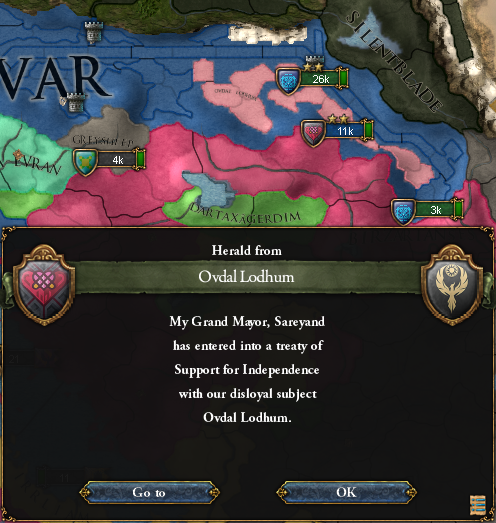 An enemy in the midst There had been a notable drop off in trade coming from Ovdal Lodhum over the past few years, and only token military support in recent wars. It wasn't considered a notable problem, so it was filed away among the countless other issues that needed addressed within the nation. However, that changed when word arrived of a speech given by Daraztarion in his new capital in the city of Bulwar. Amongst other proclamations of rulership of all of region was included a promise to liberate the mountains from the greed of the dwarves. Seghdihr was already under his control, and Orlghelovar ought to follow to repay their oppression of the garnet dwarves. When diplomats attempted to enter Ovdal Lodhum, they found the way barred but for a notice from Balgar that he would no longer allow a goblin-loving, orc-allying, dwarf with no self-respect, to have any sway in his nation. Immediately Blackbeard ordered fortifications to be construction outside the hold to prevent garnet forces from ravaging the Argrod in the event of a war with Sareyand, and thus a stand-off began. I was asking for this by letting Ovdal Lodhum's liberty desire perpetually hover close to 50%. Giving Silvertusk a bit more land and thus bumping up the combined vassal strength metric must have pushed them over the edge. It kind of fits though. Ovdal Lodhum really, really hates greenskins.  Dwarven glass print Adapting the printing press for runes was more difficult than expected. Not because of the complexity of runes themselves, but because of the tendency for dwarves to duplicate any important documents in solid stone and not temporary paper. The breakthrough came with a way of inscribing cobalt glass with enough precision that even a machine could do it without shattering it. Ink could then simultaneously be injected into a paper copy and glass copy of the document, satisfying the needs of the dwarven bureaucracy.  Beauty from fire With the basic restoration of Gor Bűrad complete, the settlers began the process of excavating the parts of the hold that had been consumed by magma flows. As they did so, they discovered vast quantities of obsidian and glass-like minerals that were left over by the incredible heat and pressure. From there, it was not very long before local merchants began to export the substance to parties interested in new and unique ways of decorating their homes, or seeking new potential industrial applications.  The League War begins In 1577, the powderkeg finally exploded, and all of Cannor was consumed by the fires of war. However, there was as much politics as there was religion defining the lines of battle. Most notably, the Kingdom of Lorent despite still adhering to Adean's leadership of the Regent Court had joined the side of Corin in order to oppose their bitter rivals in Gawed. The balance of the war seemed against the Corinite Emperor, but they would lay down hundreds of thousands of bodies before even considering betraying their goddess.  The Knights of the Silver Tusk Conakk's reforms came to a close the following year, as the former warband had finished integrating its former territories and organised the orcish inhabitants into a honourable knightly order. Those who still hungered for battle and plunder eagerly offered their services to the Corinite League and departed for Cannor, while civilian towns flourished as hubs of trade between the dwarven holds and the elven clans.  News from the Tree of Stone More good news for dwarfkind as a whole came with the announcement that the hold of Ovdal-az-Ân, in the distant Tree of Stone, had reclaimed the Earthseed. This was said to be the place where the goddess Halanna had first created the dwarven race, and while modern dwarves did not worship ancient gods they considered it to be their mythical ancestral homeland. The messengers also brought with them treatises on architecture from other surviving holds in that region of the Dwarovar.  The war turns against the Corinites As war ravaged Cannor, the situation appeared to be rapidly turning against the Corinites. Lorent was steadily being pushed back as it faced the greatest bulk of Gawed's forces, while the imperial capital in Telgeir was occupied and the Emperor forced to flee to allied nations in the south of the Empire. He still refused to surrender however, comparing himself to Corin herself standing against the seemingly insurmountable Greentide, and continued to rally his allies to strike back.  Declining supplies of Damestear One useful acquisition during the expansion onto the surface was a series of Damestear mines in Ourdia. While dwarven society in general did not rely on the magical meteoric material, the mage's guild still made significant use of it and the newest gnomish immigrants expressed interest in studying its properties and potential usage in science. News that the deposit was running dry was not taken well, especially as other sources were disrupted by the ongoing war. Both groups petitioned the Assembly to ensure that another source was located. Damestear is an incredibly valuable trade good, but it is typically only found in very limited quantities and will typically disappear quickly before randomly appearing in another province.  The result of economic integration Despite starting the century only a few damaged holds to its names, the economy of Olrghelovar had far outstripped that of its open and trading counterpart in Ovdal Tűngr. With that in mind, even without Blackbeard managing to manipulate a full majority of clans on their Assembly the copper dwarves found themselves tied ever closer to their cobalt counterparts. By the time that the Lord Mayor of Ovdal Tűngr signed the agreement that gave Orlghelovaric authority over diplomatic, macroeconomic and military matters, it was already more or less a formality.  Rise of the Phoenix Emperor In 1561, Daraztarion formalized what had been plain to see to all the inhabitants of Bulwar for decades at that point. In the 11th and 12th Centuries, the Phoenix Empire had swept across the land, ranging from far Haless all the war into the heart of Cannor. Now, he intended to resurrect that legacy and challenge the world to see the light of the one true god Surael, as handed down by his chosen elven Emperor.  Incalculable wealth With Ovdal Tűngr now serving the economic interests of the nation, the flowing wealth reached heights unmatched anywhere in the world. With the Empire of Anbennar still war-torn and the Phoenix Empire throttling trade from the east, there was no better place to be a merchant than within Orlghelovar. 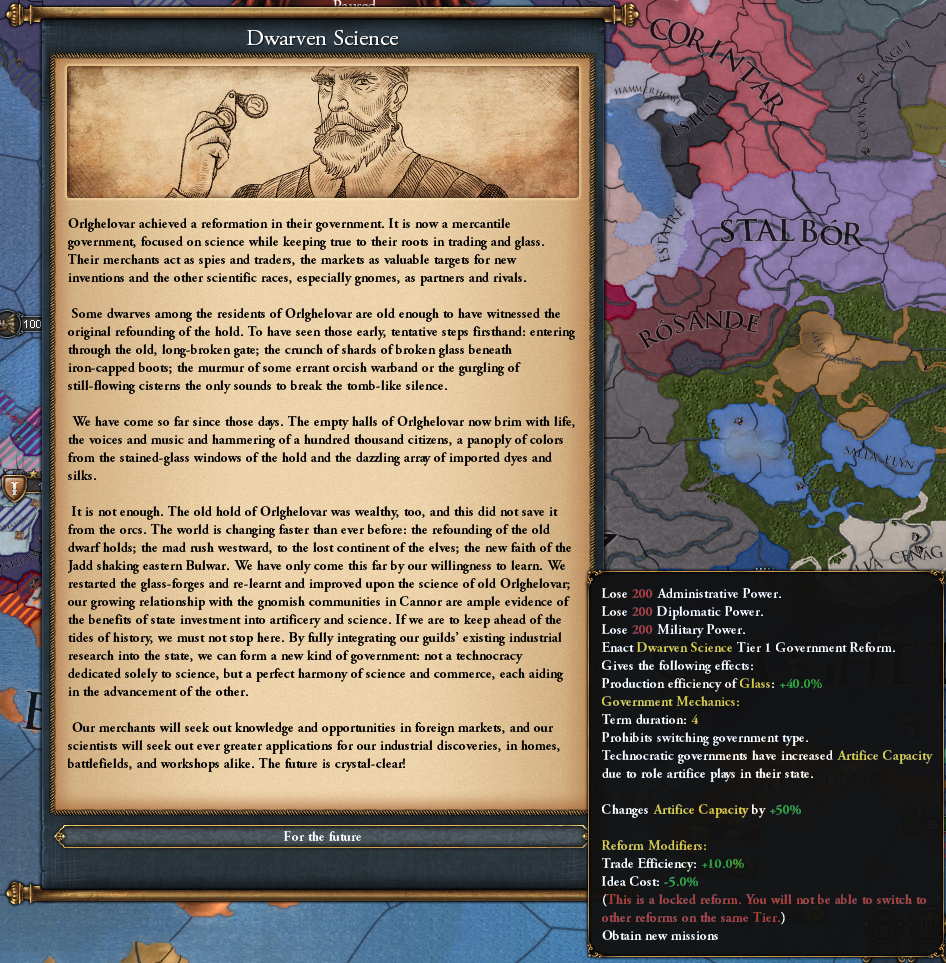 An age of commerce and science Amongst all this wealth, a curious transition was occurring. The merchant clans, the Glasslords who once held dominance in politics, were becoming increasingly cut off. They focused on their own personal wealth, living like royalty and scheming amongst one another for a bigger cut of pie. In their place, the science clans began to step up. The gnomes had brought with them brilliant new ideas. By making use of the properties of damestear, they could create machines capable of replicating magical effects without needing a mage to power them. This science of 'Artificery', in a hold devoted to innovation, promised to lead the entire world into a new age, and to bring even more wealth as these inventions were exported beyond its walls. Despite what the government reform says, we do not yet have access to utilizing artificery. +50% of 0 capacity is still 0. I will go into this more in the next update. However, we do get to start doing research so inventions will start rolling in, we will just have to wait for the capacity to make use of them.  An age of indulgence and arrogance There was still a slight concern. In the lust for gold and prestige, the uppermost classes had created a stratified system that could bring down everything that Blackbeard and the other survining members of the Cartel had been working towards. From the highest cartel boss, to the high-earning-not-rich-yet merchants, to the overworked industrial workers and the underclass who saw none of the benefits of the wealth, there lay a contradiction that could destroy everything, Blackbeard could see it, in the homeless dwarves begging at the foot of gigantic glass statues commissioned by the guilds. He was old, there was little chance that the Assembly would pay attention, but if things continued the way they were going they might not be able to ignore the situation any longer. To be continued… Votes There are three votes this time. First up, is the standard idea group vote, with Administrative, Influence and Offensive joining us from the previous vote. Once again, the top option will be selected and the next two (or more if a tie) will have a guaranteed appearance in the next vote. A: Administrative – Our nation is growing beyond the reach of the mountains. If we are to rule over these lands, our administrators must be empowered. B: Tolerance – We have proven ourselves a tolerant and progressive nation, let us extend this to all the peoples and faiths of the world (Humanist has been renamed, for obvious reasons). C: Influence – The best way to administer the lands beyond our mountains is to entrust them to loyal, local rulers until we are prepared to integrate them. D: Maritime – Our merchant fleets will bring in wealth from every corner of the world. E: Offensive – We must press our technological advantage and strike out against the enemy wherever they may hide. F: Naval - Our war fleets will be unmatched upon the seas. The second vote is a bit vaguer, but I'd like to see what people's opinion is. Which do you value more, Time or Money? These will result in different permanent modifiers on the nation following upcoming events. The third vote will determine what artifices we will focus on in our research. This won't be permanent; we can change our focus in a future voting session. 1: Brilliant Invention – Combining magic and artifice to produce strange and unusual inventions outside of the norm. 2: Techno-Thaumaturgy – Replicating traditional magic using artifice, to make it accessible to the common dwarf 3: Mechanism – Combining artifice with traditional engineering, to enhance the mundane rather recreate the magical. To sum up, a vote should look something like B, Time, 3. Voting will last 48 hours.
|
|
|
|
Dirk the Average posted:Bit of a side question, but what DLC, if any, is required to run Anbennar? From the workshop page, I don't know if this is exhaustive though. There are so many unique mechanics and so many mission trees that I wouldn't be surprised if every DLC touched some part of the mod. quote:Emperor: recommended for the best Ravelian experience
|
|
|
|
Aesculus posted:We only have until 1821 to conquer the entire world (unless Anbennar changes the end date), money we can earn whenever but administrative power we cannot Going for a world conquest is a little outside of the intended playstyle for dwarves, but if Administrative wins it does indeed mean we will be conquering more land directly thanks to the extra available admin power. The votes stand as follows with one day left. Time looks like the obvious winner for the second vote, but there is still room for a shift in the others. In the event of a tie I will choose as LPer's prerogative. A: Adm - 4 B: Tol - 4 C: Inf - 3 D: Mari - 1 E: Off - 0 F: Naval - 1 Time - 12 Money - 2 1: Invention - 3 2: Techo-Thaum - 4 3: Mechanism - 6
|
|
|
|
The final results see a tie between Tolerance and Administrative. I will be taking Tolerance, as this was its first appearance in a vote and it managed to make it to joint first. Administrative and Influence will be definitely appearing in the next vote. On the other votes, it seems people prefer their Time by a significant margin, and by a narrow lead we will be focusing our artifice research on Mechanism initially.
|
|
|
|
Chapter Eight: The Hoardcurse 1562-1573  Ties cut off with the garnet hold Blackbeard could taste the impending crisis in the air, in the stone, in the very fabric of the hold. With that in mind, he could no longer justify the risk of potentially being stabbed in the back by Ovdal Lodhum with support from the Phoenix Empire. He went behind the Assembly's back to personally send a message to Balgar acknowledging his hold's independence. No response came from behind the sealed walls of the hold, but it defused the diplomatic situation.  To organise inventors There was an ongoing debate among the science clans as to how best organise their efforts. For the most part, the clans themselves were divided between maintaining independent research guilds or building closer ties with the International Gommo, the gnomish-dominated guild that shared discoveries across international lines. The Assembly, for its part, expressed interest in bringing the science clans under government scrutiny and expressed concern at potentially have Orlghelovaric discoveries freely shared across the world. They did not have quite the pull to force the science clans to submit, but it was enough to keep them out of the hands of the Gommo and instead organised as independent dwarven guilds. For most nations, artificery isn't available until the last third or so of the game. Gnomes, Kobolds, and a collection of other tags (Orlghelovar being one of those) get access to them earlier. As you can see, that is a big deal considering that it takes time to research inventions. Even with if we stick with Independent Unions we should still research ~27 inventions by the end of game. On that note, the reason I chose it was it gives us more flexibility compared to the low loyalty, high influence Gommo and income-impacting state artificers. The reasons to switch out might be if we want to cycle through inventions faster and have other buffs to the estate loyalty for changing to the Gommo, or if we have researched some inventions that buff our artificer regiments (and if that happens, I will get to explaining them) and we want a larger capacity of them via State Artificers.  Directing research Practical as they are, the dwarven artificers were most interested in enhancing the existing engineering techniques and tools rather than going deep into the strange and mysterious as the gnomes were wont to do. Members of the artificer guild could be found poking around every level of industry, from mines to forges to offices. When researching, you can choose the type of invention you are interested in and pay a small mana price and ongoing cost in tax income and prestige. Those aren't a big deal, especially for dwarves, so it's no problem to be constantly researching for the rest of the game. As voted for, we start with Mechanism.  A society not yet prepared Those guild members were met with some suspicion, and many of their initial suggestions were shot down by the cartels and the industrial guilds. The use of magical enhancement was viewed as being part of role of the magesmiths, and not something to be mixed into delicate industrial processes. It would take time and careful prototyping to demonstrate that the artificers were more than just mad scientists trying to push themselves into established industries. Your ability to actually use artifice is limited by your capacity, which depends on a variety of factors as shown. Right now, we have a capacity of zero thanks to not having embraced manufactories. That institution is roughly 90 years away, but there are things we can do in the meantime to try and scrape up a little bit of capacity such as conquering provinces with damestear or precursor artifacts (no coal available yet), while maximizing the influence of our artificers and minimizing that of our mages.  Golden Age? The indolence of the upper classes was beginning to spread. Dwarves were finding their wealth out in the caverns as mines across the Reach opened back up, or plying their trade out on the open waters and returning wealthier than they possibly imagined. Everywhere in the hold could be seen gold, silver, mithril, and ever-present cobalt glass adorning every home and workplace. The cartels declared it the start of a new Golden Age, and soon even working dwarves were rushing to get their hands on the precious metals.  False prosperity The incredible wealth flowing into the hold was concentrated in the upper and middle classes, while the common dwarf operating a forge or wielding a pick worked themselves to the bone to try and get their hands on just a handful of coins. The inevitable inflation caused by this was thus pricing the lower classes out of their very lives, and even starting to affect the middles classes. More and more dwarves were turning to loans just to survive, and no matter how much money was poured on the problem it only seemed to be getting worse.  A winner amongst losers Meanwhile, in Cannor, the League War appeared to be approaching its conclusion. The Corinites had been driven almost entirely out of the Empire proper and were forced to operate under the leadership of their Lorentish hosts. The winelords took full advantage of having an army of fanatics under their control, and retook their territory and dismantled several minor powers in their region. Even if they ultimately lost, they would get some gains out of the situation.  Acceleration towards madness The situation within the nation was getting worse and worse with each day that passed. Loans were handed out freely with extortionate interest rates. Dwarves hoarded money and precious metals even as essential goods were traded away. The cartels engaged in open battle to prove themselves the wealthiest, while working dwarves beat and robbed one another for a simple ingot of silver.  The name of the beast. The Hoardcurse. The Assembly was paralysed with indecision, in fact many of its own members had succumbed and hidden themselves away with their own personal wealth. Faced with the potential collapse of the government, the economy, and perhaps society itself, Blackbeard declared a state of emergency and gathered what sane dwarves that he could, along with any human, elf or goblin willing to help to fight against the affliction that had swept the nation. A name was spreading through the streets. The Hoardcurse, greed as a disease, the love of wealth more than life itself. Like any disease, it needed to be fought before it killed the host. Welcome to the first dwarf-specific disaster in Anbennar. Like most disasters in the mod it is a doozy, although it is deceptively straightforward to resolve. To fix the Hoardcurse we must pass five reforms, which primarily involve piling resources into decisions and events while trying to survive the negative modifiers shown. Each reform will counteract some aspect of those negative modifiers.  Centralized banking With the remaining members of the Assembly, Blackbeard was able to pass a proposal to unlock the funds that had been earmarked for the Dig-Deeply Initiative and instead direct them to buying out the countless banks that had sprung up across the nation. Once those were under control, the worst of the hoardcursed could be rooted out, interest rates could be brought back under control, and the economy could be stabilized. The situation remained precarious for months, as the sudden shock of nationalization almost brought the economy completely crashing down. The banks are the number one priority, as the interest rate debuff will kill you if it is still a problem by the time you get deeper into the Hoardcurse. You will inevitably have to take loans to make it through and with such a high interest rate it could lead to a death spiral.  A lean government Government expenditures were being cut to the bone so that all available money could be focused on saving the nation. All non-essential personnel were given extended leaves of absence, or otherwise drafted into the efforts to fix the situation.  Corin defeated Six years of war Cannor came to an end in 1573 with a clear victory for the Adeanic League. A handful of territorial exchanges took place, and Lorent was able to keep its gains, but the most important outcome was that a member of the Empire could only be elected Emperor if their denounced Corin as a usurper goddess. With the rule of Telgeir refusing to do so, Wesdam was elected to the position instead and the centre of power within the Empire shifted to their core lands around the Damesear.  Turning to the uncursed With so many dwarves afflicted by the Hoardcurse, the government turned to its other residents to keep the government ticking over. Verk Grandguard, a member of one of the goblin cartels, had taken innovative strides in rooting out the corruption within his own organisation and offered his services to do the same to the republic's institutions. Blackbeard gratefully accepted his help. One of the upsides of the crisis was the demonstration that all the other races, even those who were seen as barbarians, could help in a situation where dwarves were found lacking. With Tolerance selected, I will be aiming to have all races in our nation move to 'Integrated', the highest level of acceptance.  Military drawdown The Assembly continued to pass laws to preserve the government coffers for the crisis. The army was withdrawn into the mountains and placed into accommodation that had been seized as part of the efforts against the hoardcursed, which went a long way to reducing the amount of money spent on housing them.  Accounts settled The nationalization effort concluded after a year of intense work from Blackbeard and the rest of the government. Several nationalized banks were re-privatised after their glass slates had been wiped clean of unhealthy debt and oppressive loans, while a number of the remaining banks were dismantled and reconstructed into a central bank for the nation that would remain under direct government oversight. The Cobalt Bank would tightly control the money flow and ensure the private banks stayed in line. Every reform ends with a decision that costs even more money, and some mana, that finishes off that reform path and lets you pick another reform to start on.  Rigorous crackdowns A taskforce was established under Verk Grandguard to begin the process of rooting out the corruption that had set in from the top to the bottom of the government. Some of the more eager members of the Assembly suggested that arrests or even summary executions would be faster at clearing out corrupt officials, but such brutality was not the way of Orlghelovar. The taskforce would use data analysis to find the places where money was leaking out of the system, careful investigation to gather evidence against the worst offenders, and then have the hoardcursed officials quietly retire with severance so they didn't fall into the hands of the cartels. Corruption is a good choice for the second reform, as corruption growth will eat away at you as it raises the autonomy floor for your provinces and increases the amount of mana you have to spend on things.  Suffering and anger Even while the government worked to unravel the hold the Hoardcurse on society, the lower rungs of society suffered. An epidemic of influenza ravaged Aqatbar and the other surface cities, while riots of steadily growing intensity sprang up across the nation. The risk of an outright rebellion was growing, and threatened to shatter an already vulnerable society.  A clean administration The process of clearing out corrupt officials took a full two years, but Blackbeard considered that a worthwhile price to pay to avoid an outright purge of the government and bureaucracy. The Assembly of Holds was back to full strength, the cursed representatives having been removed from their positions, and having seen the effectiveness of the reforms so far, they were happy to sign off Blackbeard to do whatever else was required to remove the Hoardcurse from the rest of society.  Time over money Among the lower classes the Hoardcurse took a different form. The lust for wealth and the need to keep up with inflation had trapped countless dwarves in ever worsening contracts with the cartel, where they spent their whole day working for a mere pittance of coin. These were conditions that would have been unimaginable even in the early, more precarious, days of the hold. While a comprehensive reform would be hard to push through, focusing on one issue was reasonable. As a dwarf with very little time left, and having spent his whole life working for the nation, Blackbeard decided that he wanted all dwarves to have Time for themselves. Working hour restrictions were approved by the Assembly, along with stipulations that pay could not be cut that lead to an effective increase in hourly wages. Worker conditions is another good early choice for reform as it will clear the revolt risk and stability cost maluses. If your nation is more unstable or your army is depleted when the disaster starts it might even need to be your first pick to keep your army from being overwhelmed.  The Orlghelovar Riots Even though legislation was being pushed through, that did nothing to alleviate the immediate suffering of the workers. A collection of angered working class dwarves marched on the Assembly halls in Orlghelovar demanding immediate action not just on conditions, but also the crushing prices of food and clothes inflicted by the still-cursed cartels. As much as Blackbeard sympathised with their conditions, there simply weren't enough dwarves to fix everything at once, and tearing apart the government would only undo everything he had been doing to fix the issue so far. The army that had been quartered in Shazstundihr was ordered in to hold the line and push back the rioters.  Reforms see success After the initial anger of the rioters had been quelled, the legislation was completed and came into effect. Many of those dwarves who had taken to the streets promptly returned to work. Even the fact that government had done something for them personally, rather than fiddling with banks and bureaucrats, seemed to be enough to mollify them. However, that could all be undone if the cartels were allowed to maintain their stranglehold on the food supplies.  Returning to an unfamiliar nation An expedition that had spent the better part of a decade plumbing the depths of the Dwarovar near Ovdal Lodhum returned in 1567. They came emerged from a cavern entrance near the hold to see it sealed up, and local dwarves barricaded in their homes with hoards of precious metals glinting through their windows. The whole region was a centre of the metal cartels, who were throttling trade now that their near-slave labour had been taken away by government decree. The adventurers were met by government officials who paid them their cut and quickly took the rest of the treasure back to the capital, where it was much-needed to assist in the ongoing reforms.  Pawns that do not know their place The diplomatic situation on Orlghelovar's borders had been peaceful, much to the relief of the government. With the situation at its worst under the mountains, all the rest of the world knew was that trade with the dwarves had hit a downturn and not the true extent of vulnerability. There were some skirmishes and harsh words traded with the elves of Birzartanšes, who did not seem to understand the situation they were in. They were no longer an official ally of the Phoenix Empire, but had instead been offered a guarantee of protection. It was obvious that would only last as long as it would take for Daraztarion to finished digesting his latest conquests against the Jaddari in the east and make ready for a western push. I did this to get some Power Projection, but thought the insult was actually appropriate for their situation.  Abolishing indentured servitude Included in the package of reforms for workers was the official abolishment of indentured servitude. No longer could an employer require an employee to repay debts as part of their contract. While many dwarves were saved from near-slavery by this, it also had the interesting effect of liberating the minority of orcs that had been retained as manual labour throughout parts of the nation. Compared to goblins, the orcs were still seen as vicious brutes by many of the population, but this might be the first step to changing that. Here is the permanent effect that we get. Another reduction in unrest, at the price of some goods produced modifier. That's pretty bad from an income perspective, but the 'Better Pay' option isn't much better in that regard, trading lower production efficiency (which a dwarven nation will rely on) for higher taxation income (which it won't).  Mithril blockade The reforms were not looked kindly on by the cartels, who shut down some of the most prominent mithril mines in protest. It was decided that they would be the next target of reform.  Against the cartels Between them, the largest cartels held a stranglehold over some of the most crucial industries within Orlghelovar. Luckily, the Glasslords had managed to purge the hoardcursed from within their own ranks so they were not a concern. However, the metal that supplied dwarven industry and the food and textiles that its population required were at risk due to the hoarders still dominating the associated cartels. In retaliation for the shut down of the mithril mines, the metal cartels were the first target. For this reform all three of the options have to eventually be taken, each for the same cost. Overall, the monopoly reform is low priority as it is very expensive and only impacts trade efficiency which even in our case doesn't make up a huge percentage of our income.  Magic, now import-only The Artificers Guild had been mostly unaffected by the Hoardcurse, because they were more interested in another substance. Their hunger for Damestear led to the nation's only mine being depleted within short order of the guild's founding. Protest letters reached the doors of the Assembly, demanding that new sources be secured or that imports began, but the government had bigger concerns to focus on.  The Hoardcursed fight back Troops were dispatched to forcibly nationalize the mithril mines, and the cartels fought back, using their vast reserves of wealth to lure thousands of cursed dwarves into their service. They gathered themselves in the caverns bordering Ovdal Lodhum and began making use of the metal they had on hand to forge an array of cannons capable of destroying any government counterattack.  Heroes against the Hoardcurse As luck would have it, the adventurers who had returned from the most recent expedition had settled down in that region. They had found themselves in a strange position, being surrounded by countless dwarves who thought of nothing but hoarding their wealth, but they hadn't succumbed to it themselves. When the cartel rose up, the adventurers took up arms and were able to defeat twice their number in cursed dwarves as well as break the attempt to fortify the caverns. When the Orlghelovaric Army arrived, it was a simple mop-up of the remaining rebels. The cartel was disbanded, its leaders arrested, and the mines nationalized or redistributed to unafflicted cartels.  Handing power back to the people With the situation steadily coming under control, the question started to arise regarding the extraordinary powers that Blackbeard had used to take charge in the early days of the crisis. Many in the Assembly raised the concern that he might use the opportunity to declare himself a dictator. As old as he was getting, he had no such intention. In fact, to keep such rumours from spreading and nip the risk of a monarchist faction in the bud he pushed through a number of reforms devolving power even further to the individual holds and their inhabitants, as well as granting additional privileges to surface cities.  Cracking open the seedbanks The Reach was almost self-sufficient for food by itself. With Halanna's Breath spreading throughout the caverns and providing large pockets of fertility in the darkness, there was no reason that a hold could not support itself. To earn a greedy profit, the cartels made sure to hoard food just as much as they hoarded gold. To prevent the risk of further starvation, those vaults had to be cracked open and the contents shared with the masses. Food prices would temporarily crash, but once the glut was over things ought to return to normalcy.  Tolerance for all The crisis had proven that the multitude of peoples that made up the nation could work together closely. Where dwarves faltered, other races stepped up. Across holds and surface cities, religious and cultural beliefs were being honoured by the local bylaws. Even the noble clans who had so viciously resisted integration in earlier decades were finding happy and compliant citizens far easier to manage.  Last of the cursed cartels The last major cartel to be dismantled was the textile cartel. During the height of the Hoardcurse, they had brought out a new line of fashion that was made of woven gold and mithril thread, exacerbating the crisis as countless dwarves rushed to participate in the next big trend and literally wear their wealth. These clothes were seized as part of the effort to break the cartel and return the fashion industry to a saner place.  Patronage of the Innovators Even during these efforts, the government still found time and funds to support the artificers and science clans. They had been almost untouched by the Hoardcurse, so it was almost a point of pride that the innovation never stopped in Orlghelovar, even if the rest of the economy had ground to a halt. Having a flat 10% mana cost reduction for the rest of the game is a really nice boost.  End of the monopolies After all the effort that had been put into dismantling the cartels, the final bureaucratic act, the final signature placed onto paper and glass, was more a formality than anything else. A comprehensive legal reform was now in place to ensure that the cartels never again held the overwhelming influence that they one had on the dwarven economy and society. Monopolies were banned, wealth above a certain value was to be taxed, and workers had mandatory free time and vacation days. All of this was to be overseen by stringent government inspectors, many of whom were race besides dwarves, who could not be so easily afflicted with the disease of the mind that the Hoardcurse truly was.  The final push There was still one major impediment to the resolution of the Hoardcurse, that being the countless minor nobles and other wealthy dwarves who were not part of any of the cartels. While their impact was curtailed by the fact that they were not part of larger organisations, if they were able to tear themselves away from their piles of gold long enough to work collectively, they could be a major threat. Moving directly against them would force them to immediately band together, so Blackbeard had to take another approach. Carefully, he started pushing through legislation that defined and acknowledged the state of being 'hoardcursed', and put in restrictions for those who were still defined as such as well as treatment and amnesty plans for those who dug themselves out of that hole. In the end, it was a disease. Both prevention and cure would prevent it from striking again. Curtailing the barons should be the final reform you take, as the chances of success will depend on how many other reforms you have completed prior to this. You can select one, two or three of the listed options, and I selected all three despite the steep cost for the sake of completeness.  The price of saving the nation As things seemed to be winding down, the government was able to take a moment to breathe and confirm the state of the nation's finances. Thousands of crowns worth of debt had accumulated over the course of the Hoardcurse, most of it owed to the Cobalt Bank and the Glasslords. The interest payments on the debt amounted to almost 20% of the GDP, but now that the economy was stabilising it could start to grow again, and repaying the loaners ought to just be a matter of time.  Phoenix at the gates While Orlghelovar had been looking inwards, the rest of the world continued to turn. Alarming news came from scouts observing the Silentblade orcs occupying the tunnels outside Hul-Jorkad. Phoenix banners were now flying from the hold itself. The elves had marched right up the valley, taken Lake Jorkad and the hold soon after. This caused great alarm in the Assembly, and after years of economic matters, military buildup was once again the concern on everyone's mind.  The first gift of artifice As the nation appeared to emerging into the light after years of darkness, so to were the inventors emerging from their laboratories. Emboldend by the sheer weight of bureaucracy that had been put in place to help combat the Hoardcurse, the new innovation that they had developed was self-cleaning parchment and slates. Mistakes could be easily corrected, documents could be recycled, and the administration as a whole could flow just a bit more smoothly. The issue was that, with the supply of Damestear severely throttled, there simply was not the capacity for mass production. So, for the moment the new parchment was a novelty used by the office of the Grand Mayor and other high-ranking officials. Inventions are represented as privileges we can hand out to the Artificer estate, which means there is an additional limit on the number we can have at once. Admin Efficiency is a nice boost, especially in these early years when we don't have access to absolutism, but it costs a whopping 20 capacity so it is unlikely we will be running it any time soon. 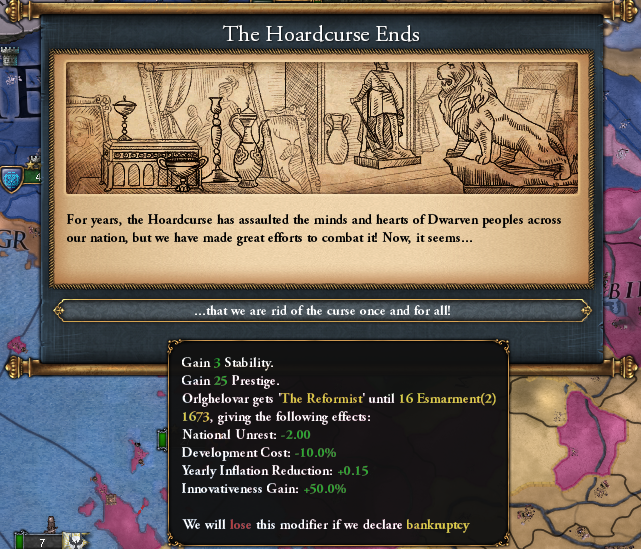 The dwarven nation is saved As the Assembly continued to debate spinning the rescued economy up to a war footing, Blackbeard took a much-needed break from the proceedings. It was incredible to think that he was not just the father of the nation, but a great reformer who had broken a curse that threatened to destroy dwarven society. Perhaps now it was finally time to rest, and let the next generation deal with the troubles to come. He stepped out into the hold, could hear the distant forges at work, see dwarves enjoying their time off, and watch endless carts delivering material up from deeper in the hold where excavation had been started on the next layer below them. The sunlight shone through the glittering array of glassworks in the roof above, and Blackbeard took the moment to take it all in before heading back into the Assembly Halls to finish his work. Perhaps just a little longer in the big seat, but retirement was looking more and more appetizing. To be continued… It took a whole update, but the disaster is over. From a meta perspective, it clearly exists to put a brake on the runaway train of the dwarven economy. Even if you do your best to prepare for it, it will completely halt your growth and you will end up with a lot of loans that you will need to spend the next couple of decades paying off. The theming is good, but it does feel kind of boring in that it the solution is just spending money over and over again. If there were more impactful decisions like the Time vs Money decision that had long term effects, or the Hoardcursed fought back more often so there was a threat besides bankruptcy it might be more interesting to play through.
|
|
|
|
Chapter Nine: Union 1573-1593  The diamond specialists of Arg-Ôrdstun As the second-most important hold in the nation, and the centre of the critical trades of diamond cutting tools and gems used for industrial and research purposes, Arg-Ôrdstun was developing into another trade hub on par with Orlghelovar itself. The military structures set up during the days of Queen Ardeginn were being repurposed into more warehouses and workshops, while dwarves from across the mountains arrived to seek their fortunes. The government was eager to take its cut and accelerate the economy past the stagnation of the Hoardcurse.  Military expansion Under the threat of the Phoenix Empire, the Assembly approved the massive expansion of the second Orlghelovaric Army, which was to be stationed in the eastern tunnels. The fact that its area of operation also included Ovdhal Lodhum was not a coincidence. The Assembly had decreed that the risk of a Phoenix-sympathizing army within the mountains themselves was too great. While Daraztarion had withdrawn his support for the moment, it could resume at any time.  Integrated by force, not by love So long isolated from the outside world, the garnet dwarves had stagnated. Their walls were no match for modern cannons, and they fell within the year. This time Balgar didn't even bother to sign the surrender, but instead retreated deeper into the caverns and conducted a guerrilla campaign against the occupying forces, especially focusing on any goblins or orcs who returned to the caverns that he had originally forced them out of. With other priorities to focus, the Army set up a defensive line at the walls of Ovdal Lodhum itself, and in the Zarn Caverns on other side, designating what lay between as a no-go zone for the time being.  The wealth of the caverns The Zarn Caverns themselves had not really been exploited to their fullest potential by the garnet dwarves. With modern mining techniques, and bringing in miners and engineers with experiences from every corner of the Reach, the hope was that the true potential of these caverns could be brought to light.  Securing the coastal trade The bulk of the army was redployed to the western frontier, where they began a campaign to take control of the remainder of Bahar and with it give the dwarven nations uncontested control of trade in the region. The Republic of Crathánor had once been a useful trading partner, but had grown increasingly hostile to dwarven traders especially after Ovdal Tűngr was subordinated under Orlghelovar. Gaining full control of the flow of trade was considered essential to the security of the nation.  Contrast of land and sea The war was no major issue on the land, but the seas were another matter. The humans called upon their allies in the island city of Nathalaire, who sailed in with a squadron of modern galleons and swept aside the Orlghelovaric trade fleet and even the Tűngric war fleet. They instituted a blockade that threatened to strangle the economy of the dwarven nations even as their allies fell under occupation.  The Masquerade is broken In Covuria itself, the nation was in the middle of a devastating civil war. It appeared that their most recent ruler had begun a program to purge the nobility of the vampires that had thoroughly infested it. In retaliation the vampires had risen up, enthralled huge numbers of citizens, and marched on the castles of the still-living nobility and royalty. The capital itself was close to falling, while most of the countryside was coated in blood in a manner not seen since the Crimson Deluge.  Dig faster, dig deeper Despite the need to pay down the national debt, money continued to be poured into the digging operations within Olrghelovar. When unusual layers of rock caused digging to slow down, it was the perfect opportunity to test new equipment and techniques.  Cabinet unity The Assembly was working like a well-oiled machine. The deepest rot of the cartels and nobility had been purged along with the Hoardcurse, and that only left dwarves, and other races, who were eager to serve the nation. For the first time a goblin representative was elected to the Assembly, and they found themselves welcomed as an equal by a majority of the members, while the Silvertusk observer was also elevated to representative giving orcs their own voice.  The occupied coast With the vampire crisis in Corvuria escalating, Nathalaire was forced to end its blockade in order to institute a quarantine of its own territory. The city itself sat just off the coast of Covuria, and they did not want to risk the bloodsuckers getting loose within the walls of their densely populated home. Crathánor surrendered shortly afterwards, with the coast and key trading ports falling under dwarven control and leaving the humans with only direct control of the interior.  A defensive coalition forms The rulers of Covuria, fearing a dwarven invasion on top of their own vampire problem, called upon several other nations in southern Cannor to rally against dwarven aggression. This put a hold on any further expansion plans by the Assembly, as military strength and money both needed to be conserved.  The Grand Port of Aqatbar It was clear now that the future of wealth lay out on the open sea. More and more merchants were migrating out of the mountains and settling down in the dwarven-owned lands on the surface. Government policy had started to shift as well, to focus on the port of Aqatbar as the key checkpoint for goods coming from the east. Collecting tariffs and tolls directly by integrating the associated offices and merchant marine of their copper dwarf allies, as well as taxing the countless merchants who were now plying their trade there, gave a massive injection of cash to the treasury that went straight into reducing the debt even further. This is what I was talking about with regards to the value of nodes during that vote. Because Bahar has so much more trade flowing into it, it is vastly wealthier than just the Reach. If we can get to Eborthíl it will be worth even more. Incidentally, because we got the 'Historical Friends' modifier for Ovdal Tűngr a while back, they have a -50% modifier to their liberty desire which lets us run trade diversion without any risk of them becoming disloyal.  The Blood Moon rises over Arca Corvur The vampire uprising came to a conclusion in 1577, with King Cecill I taking the throne and declaring that he and his kind would no longer be confined to the shadows. He was met shortly afterwards by a declaration from the Magisterium, calling him and his kind a blight in the eyes of the gods and calling for a holy war to see the foul creatures eliminated. Very few were interested in taking the offer for the moment, as the politics of the Empire and Escann were a greater concern for them than vampires in another country. For the part of Orlghelovar, Blackbeard suggested an expedition to depose the vampire king, but the Assembly rejected the proposal pointing out that further dwarven encroachment on human lands, even those held by a monster, would probably cause the coalition to attack. A brief word about Witch Kings. A Witch King is a ruler who is considered by the rest of the world to be 'evil' in a very literal sense. This gives the nation in question several military buffs, a bunch of diplomatic debuffs, and every neighbouring 'good' nation a free CB against them. They are typically either liches, vampires, or mages who have otherwise gone too far in their magical studies. From a lore perspective this coming age will see the rise of many such Witch Kings, particularly in Escann. In game, they are less frequent, mostly being either the player or nations (like Corvuria) that can get them through events/disasters.  Easier material, dig faster Digging operation in Shazstundihr found different issues than those in Orlghelovar. A vast calcite layer lay underneath the hold. It was trivial to dig through, and would make expanding the hold and easy task, but some expressed concern about the runework that was woven through it. The magesmiths could not understand it, but at best they could tell it would have no negative effects even if you took a pickaxe to the material. Eager for more room in a growing hold, the digging continued. I'm sure this doesn't mean anything.  Hands reach across the Dwarovar Diplomatic overtures to expand the nation's network of alliances bore fruit, with a treaty of friendship and defence being signed with Orlazam-az-dihr, the largest of the holds in the northern Serpentspine Mountains. Between them, Khugdihr, and the adventurers who had recently liberated Er-Natvir from the goblins, it was now almost safe enough for a civilian dwarf to travel from Orlghelovar all the way to the old capital at Amldihr. Once the rail lines were restored, a new age of interconnectivity would be able to blossom.  Fortifying the Reach Without further expansion blocked, by the coalition on one side and the republic's own allies on the other side, the military's focus shifted to defending the Reach. With vastly more money entering the nation's coffers, it was no strain on the debt repayment budget to put funds into improving key fortifications. The entries of the Reach, as well as Aqatbar, were upgraded with the highest priority to ensure that no Cannorian or Elven armies could breach the interior.  The Marble Metropolis Any concerns about the rune-marked calcite in Shazstundihr were quickly put aside as the sheer speed with which miners were able to dig through it lead to a boom in the once-desolate hold. With the liberation of the orcish indentured workers during the Hoardcurse, many had migrated to the hold and made it their home, leading to Shazstundihr being one of the few places in the nation with an outright majority of orcs. Endless terraces of homes and vast halls of industries were populated as fast as they were being carved out of the calcite. Presently, Shazstundihr costs next to nothing to develop. This is fine, keep digging!  Some kind of machine for vending The latest artificer invention was a machine that could exchange coin for goods without any input from a merchant. While some businesses were very interested, the largest industries in the nation were glass, which was too fragile to put into the simplistic mechanisms of the machine, and gems, which were too valuable to leave in an unattended machine. Uptake was slow and vendorless stalls remained a occasional curiosity rather than a prominent feature of marketplaces. More trade efficiency is nice, but given the cost I'm not sure it is worth it even once we do get some capacity.  Firearms become the standard in the dwarven military Dwarven tactics were seeing a transition as the nation grew larger in both wealth and population. Before, the primary enemy were waves of undisciplined orcs or goblins who massively outnumbered the dwarves. In those times, focusing on defensive formations ensured the preservation of every precious dwarven life. Now though, Orlghelovar was facing peer opponents on the surface or besieging the entry points of the Reach. The addition of much more mobile auxiliaries wielding powerful but unreliable scatterguns gave them the versatility they needed in the much more varied environments of the outside world. Fire damage is really starting to take off, so I am switching our military unit choices from defensive to offensive.  Patent wars As artificery became a more common profession, all the problems of a profession came with it. In patent conflicts between independent researchers and those sponsored by the Gommo, the government declined to get involved. To support the Gommo would be to clamp down on innovation and leave it to foreign influences. To directly support an individual inventor, however would lead to accusations of favouritism and potentially withdrawal of gnomish support. For this incident, at least, they let the artificers sort it out amongst themselves  Distant Haless News was slow coming from the distant continent of Haless, but news did arrive. The latest was the that the Hobgoblin Command, a military with a state, had been acknowledged as a nation and not just a barbarian invasion. Despite that, they were still locked in a regular struggle with the monastic order of the One Xia. The Supreme Master of the Xia had made herself the bastion of Haless against further incursions by the Hobgoblins. Meanwhile, the Phoenix Empire had begun seizing ports along the Rahen coast to funnel valuable trade from the east. Most relevant to the dwarves of Orlghelovar was the state of the Dwarovar. Ovdal-az-Ân was secure the Tree of Stone, but everything east of that was held by the goblins of the Jade March on behalf of their masters in the Command. 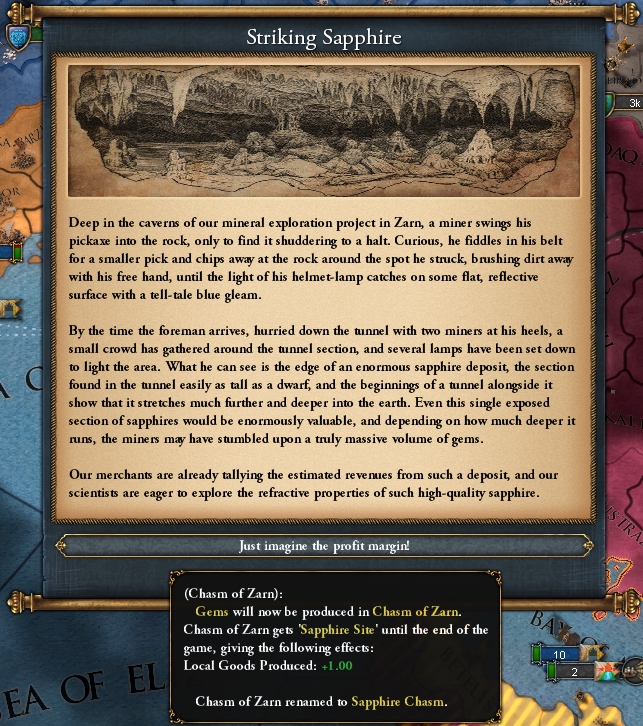 The Sapphire Chasm The discovery of vast quantities of gems in the Zarn region saw a massive influx of both labour and capital to the area. Among them were industrial scientists looking for ways to enhance the nation's trademark output even further. The use of sapphires alongside with the cobalt glass seemed like a natural combination, and soon multiple cartels were competing to find the best ways to make use of the gemstones. This also increased pressure on the government to do something about the garnet rebels still in the area.  The ascension of Whitebeard The election of 1584 opened with a shocking declaration. Blackbeard announced that he would not be running for office again. His tenure of over one hundred years had seen so much change, going from cartel, to hold, to nation, and while he had kept up with it he was also getting very old. The time had come to step down and enjoy his retirement. This caught the various factions within the government by surprise. For the past century, the tradition had been to run young up-and-comers against Blackbeard even though they had no chance of success. This way the loss of face from a defeat would not reflect on the more venerable members of the Assembly, and the candidates would gain some experience in politicking even if it was only to try and win second place. When the dust settled in a contentious election, the votes saw a narrow victory for one Grűar Whitebeard. A young dwarf, raised in the cobalt mining towns outside Orlghelovar, he joined the Hoardcurse taskforce and proved himself a skilled investigator at rooting out corruption. Eventually, he joined the staff of the Orlghelovaric representative in the Assembly and was being groomed for the seat, but now circumstances saw him thrust to the very top. Some said that it was purely the irony of his name that won him the election, but in his inaugural speech, stood atop the podium where the Diamond and the Sapphire lay on display, he promised that he would not give up on the ideals that Orlghelovar had been founded on.  Extending rights to all To avoid accusations of being a weaker Blackbeard, Whitebeard immediately took action on issues that had been simmering under his predecessor's rule. The devolution of power to the provinces had seen a lot of success, but there was room to go a step further. The voting franchise, which had previously been limited only to selected clan and merchant representatives both at the local and national level, was extended to all citizens of means regardless of affiliation. This also included provisions to set up provisional governments in areas occupied by the Orlghelovaric Army and give the notable inhabitants of those areas the same rights as citizens, while cracking down on crimes committed against them by the army.  Orcish citizens Another issue was the status of orcs, who had been an underclass for even longer than goblins. The black orcs of the Dwarovar were elevated to the same status as the other races, and a commission was set up to see that the steady flow of orc refugees from elven territories were properly integrated into the nation. The pace of reform shocked the more conservative members of the Assembly, but the ferocity of the effort stymied any effort to prevent it.  A clean economy The final loan from the Cobalt Bank relating to Hoardcurse expenses was cleared in 1588. A quarter of a century after the crisis had started to rock the nation, the last economic damage had been repaired. This left a huge imbalance in the books, as suddenly the vast wealth flowing through Aqatbar could be directed to more useful purposes. Further expansion of the army and construction of manufactories around the nation were high priority, as was finally launching reconstruction efforts in Ovdal Lodhum, which was still damaged from its capture.  A young phoenix in the woods Forces from the Phoenix Empire were reportedly pushing deeper into the mountains and the Deepwoods, annexing and expelling the orcs inhabiting the region and viciously stamping out the fey worship of the woods elves. Eventually, word spread of intrigue within the Phoenix Court. Daraztarion had died and been succeeded by his son, Daraztarion II, but the boy elf had only lasted a few years before being assassinated. The most likely culprit was his younger cousin Thalanil, now the emperor, but no one was in a position to oppose him. An indulgent and greedy elf, the emperor was not inclined to vast conquests and more interested in what he could plunder from the weaker nations on the borders. Normally a nation with a Great Conqueror gets a 'legacy' bonus for the next ruler, but Daraztarion II only lasting a few years means that the Phoenix Empire doesn't get much of that. That's good for us.  Enlightened rulership For all that it was a hold of science, Orlghelovar was starting to see new philosophical ideas emerge from within. The idea that the brightest minds should lead was not a new one, and the government eagerly brought into political treatise encouraging the ideals 'enlightenment' within the administration.  Orcrend goes quietly When the army arrived to finally put an end to the insurgent campaign, they found a decrepit and exhausted Balgar Orcrend and a small band of garnet dwarves who had been reduced to near-barbarism themselves after years hiding in the caverns. Armed with only mithril blades and their love of his father, his band made one last charge at the scattergun line. In the aftermath, having seen everything lost in his pursuit of both love and hate, Balgar surrendered and agreed to house arrest in his former palace in Ovdal Lodhum. The line of Orcrend and his kingdom would both end with him. Besides that, the garnet dwarves who had been inhabiting the areas 'protected' by Balgar's bandits quickly adapted to the rule of cobalt without much complaint. The power of Tolerance ideas combined with other bonuses that reduce the years of separatism that a province experiences. Because separatism escalates, which is to say the higher it starts the worse the revolt risk, getting it this low basically neuters it completely. We won't even have trouble with conquering religious or cultural minorities once we have finished the other Tolerance ideas.  A nation cannot survive exsanguination The reign of the vampire lords of Corvuria was not a smooth one. Openly feeding on the peasantry, hosting blood-soaked opulent masquerade balls, and cutting diplomatic ties with the nations around them all contributed to the near-collapse of the economy. Peasants who had lost everything turned to banditry, crops were not being collected, and the few non-vampiric nobility plotted to restore sanity to the throne.  Communication at a distance The head of the Artificer Guild presented Whitebeard with their latest invention. A pair of stones infused with pieces of the same attuned Damestear fragment that could pass messages between them at any distance. With Damestear still so expensive they were limited to only the highest levels of society, but even there they promised a revolution in communication. As an experiment, Whitebeard sent one to King Odűn in Orlazam-az-dihr. A few weeks later, the first live conversation between the two centres of dwarven civilization took place, with the King and the Grand Mayor exchanging pleasantries and discussing possible action to liberate Hul-Jorkad. No longer would critical news be delayed by weeks or month, or coordination need to be planned years in advance. The limited supply of stones were distributed first to the frontier fortresses and Orlghelovar's allies. Not sure how this counts as 'Mechanism', but it is a cheaper artifice, and good if we were focused more on a diplomatic game.  Foundation of the Orlghelovaric Research Institute The latest excavations under Orlghelovar were earmarked not for further industrial development, but a much more important purpose. An institution devoted to research above all else, lead by the brightest enlightened minds within the hold, no matter their race. It would be something to rival the greatest gnomish institutions as a place of study and experimentation, and place Orlghelovar as the scientific heart of not just the Dwarovar but the entire world.  The first project The Institute's first task was to delve into the ancient secrets of the Aul-Dwarov. So much technology was still lost, the rail lines were still in a state of disrepair, and countless artefacts being dug up across the Reach were proving impossible to replicate even by the most skilled artificers. A project to elevate Orlghelovar to the technological heights of the ancient empire was a prerequisite to being able to go beyond. I would have offered a vote for what to research here, but one of these is a trap option for spoiler reasons. If we do get two or more viable options at any point, I will put up a vote on it.  Removing the last obstacles The Cannorian coalition fell apart in the early years of the 1590's, giving the dwarven nations the chance to finish the removal of the last Crathánoran holdouts inland. Even from their position without access to the trade ports, their merchants had been taking a cut of trade and their removal would bring the entirety of Bahar under dwarven control, guaranteeing a monopoly on trade through the region. The mission gives +20% more tax, which is a little weird considering the description.  The new policy Over the years, the link between Orlghelovar and Ovdal Tűngr had grown ever tighter. Between the coordination of military efforts, the unified trade policy, and finally the admittance of a copper dwarf representative to the Assembly of Holds it was almost as though they were same nation. The Act of Union between the two holds was signed with some murmurings of discontent, but they were drowned out by the thousands who had found their wealth by participating in the booming economy post-Hoardcurse.  The Union of the Reach With the integration complete, Orlghelovaric control stretched unopposed from the port of Westend on the most distant tip of Bahar, to Gor Bűrad in the fiery heart of the Reach. The holds of the nation were digging ever faster and deeper, and the wealth of the caverns was ever bountiful. With the shipyards of Ovdal Tűngr, a new age of naval supremacy looked ready to begin, and the integration of the Tűngric made the Orlghelovaric Army the largest dwarven military in the world. While fully completing the integration would tie up the diplomatic corps for years still to come, that was unlikely to slow down the accelerating ascent of Orlghelovar. In the midst of this, citizens of all forms and faiths were starting to see a new civil identity forming. One that was not about dwarf holds or human cities, but a union towards a scientific and economic purpose. The Union of the Reach. I might have accidentally our entire diplo point balance…good thing that we didn't pick a diplo idea group for the fourth idea, or that diplo in general is the least useful type of mana. To be continued…
|
|
|
|
Chapter Ten: The Depths Move 1593-1611  Naval reorganisation Integrating the Tűngri Navy was one of the top priorities for the new administrators. It had suffered heavy attrition during the conflicts with Crathánor and Nathalaire, and with most contracts from Orlghelovar being focused on merchant vessels they hadn't had a chance to fully replenish it. Besides the mighty galleon Begga, the rest of their vessels were hastily assembled light warships better for coastal patrols than direct battle. These ships were decommissioned and several key shipyards were repurposed to add more galleons to the fleet. I'm not entirely sure why the AI went with galleys when they are 20% worse for dwarves. This region counts as an inland sea, like the Med in vanilla, which provides its own buff to galleys and might override the logic that looks at unit quality.  Seeking talent from across the world Scientists working with the Glasslords had reached an impasse. The ancient secrets of cobalt glass had been recovered, but there had been no new innovations in a long time among the glassworkers, only steady refinement of already-existing techniques. Seeing that other industries were jumping ahead in leaps and bounds, they called upon the Assembly to direct the nation's merchants to finding the greatest glassmakers around the world and to invite them to join Orlghelovar. Exactly how the trading bonuses work has never exactly been clear to me. In any case, we need 20% of the global glass market to get that bonus, which will require a bit more forethought than we have time for just now.  Revitalising the cobalt mines Just outside Orlghelovar itself were vast cobalt mines, one of the first places within the nation to be repopulated after the hold itself. Whitebeard had grown up among the towns that lined the sides of the great caverns steadily being stripped of their previous ore to be smelted into the hold's most distinctive product. One of his campaign promises had been to improve the infrastructure of the mines, and he eagerly fulfilled it.  Vast calcite conurbation Excavation of the calcite layer in Shazstundihr continued apace, and the city grew in leaps and bounds as homes were filled as fast as they could be purchased. Orc, dwarves, and members of every other race mingled in a manner that would have been inconceivable a century earlier as they worked to supply traders moving between the Reach itself and the ports on the surface. Complaints of scratching in the walls in the new homes were dismissed when investigators were unable to identify a source. Occasional disappearances were blamed on the labyrinthine construction of the homes, while reports of strangers wandering the darkest corners of the city whenever the reflected sunlight faded were never verified and blamed on dwarves and orcs spending too much time getting drunk in the evenings. For the majority of the population who never experienced such issues, it was perfect.  Ratification of the Union With Union fever sweeping the nation, the prospect soon came up to the Assembly. In a near-unanimous vote, the Act of Union was amended to officially elevate Orlghelovar and its associated holds and cities to the Union of the Reach. As part of the basket of reforms the office of Grand Mayor of Orlghelovar was granted the title of President and extended authority over the united institutions of the nation, such as the now-named Union Army. In his first speech as President, Whitebeard declared that he would continue to fight for free thought and that anyone who threatened the peace of the nation or sought conquest and slaughter would be struck down, even pre-emptively. I swear I'm not trying to make our new ruler a repeat of Blackbeard, but the game keeps handing me these.  War of liberation His promise was soon tested as news of further atrocities emerged from within Corvuria. In its first real test, the Union Army was mobilized to put down the vampiric threat once and for all. King Cecill had a collection of minor imperial states that he had bullied into supporting him, but his kingdom's old elven allies refused to support him leaving him against an overwhelming dwarven force.  Setting naval expectations The replenished Union Navy was deployed to blockade the Flooded Coast and prevent any vampires from escaping. Now that the nation had a proper warfleet, the Assembly made sure to make clear that their primary purpose was the protection of trade routes. Heavy warships would only need to exist in relatively small numbers, while the majority of ships would be focused on trade.  Dwarves at sea The Corvurian fleets were made up of smaller ships, and so made easy prey for the cannons of the dwarven galleons. As the armies made their way up the coast and drove away the ships hiding in port they were sunk one after another. The only losses suffered were on a Corvurian caravel that surrendered, but was later caught in the crossfire and sunk.  Scouring of Arca Corvur Dwarven forces entered the capital city in the winter of 1595 and stormed the king's palace. Neither he nor any of his night court were anywhere to be found, but all the intel that they had confirmed that he had not made it out of the capital before it had fallen under siege. Shortly after their arrival, a party of human Corvurian nobility and adventurers entered the city and requested that they be allowed to hunt for Cecill's coffin, so that he be put down for good and no longer haunt the nation. Initial forays into the deeper catacombs under the castle were faced with terror and slaughter, as hundreds of risen ghouls and lesser vampires fought to defend their sire. It was only when the adventurers, expert paladins hired by the Corvurian nobles, joined the fray that the teams were able to start making headway. After weeks of effort, they reached the deepest dungeon and drove a sanctified stake through the heart of the sleeping Cecil. The remaining nobles agreed to elect Andrel sil Antirhalan from among their number as the new king, and he began the process of negotiating peace with the Union forces occupying his capital. Just about a month and a half to complete the search. If you're playing a vampire, you really don't want to lose your capital.  Vast war foundries supply the Union Army The war in Covuria had seen the deployment of far larger artillery formations than had ever been seen, and that had brought massive logistical challenges with it. But where there was challenge, there was innovation. As the vast cannon foundries worked, they steadily moved towards standardization of both barrel and projectile, as well as innovations such as allowing them to be easily replaced in case of breakage. Tech 16 is where artillery really starts to take off in firepower, so we'll be adding more and more to our armies from now on.  Restoration begins The industry of the Union was not just turned towards war, but also progress. Engineers and Artificers were confident that they had the necessary tools, metallurgy techniques, and understanding to restore the Dwarovar railway system to its original functionality. Finally, the wreckage of ancient infrastructure that had been plied by the Blackbeard Cartel just 150 years earlier would serve a dwarven nation once again. Applicable province, in this case, is any province that has the 'old ruined rail' and is next to either a restored rail or a hold. This means that we will keep taking this decision and work our way outwards from the holds one province at a time.  Great achievements at sea With the Union Navy continuing to grow in size, the government was always interested in learning more about the waters beyond the mapped and busy trade routes of Bulwar, Sarhal and Cannor. So far, no dwarven ship had sailed on the open ocean so the returning sailors of Istralore, who claimed to have circumnavigated the whole world, were of great interest.  Corvuria reduced If the new King Andrel thought that the dwarves would go easy on his kingdom after the vampire had been slain, he was mistaken. Massive war indemnities were demanded to cover the cost of deploying the Union Army and to repay the families of those who had lost their lives. Large regions of the Flooded Coast were also placed under the administration of dwarven cartels to ensure the proper flow of trade. The justification was that while Andrel and his allies may have been plotting against Cecill in secret, they had still been practically complicit in his rule as nobles of the kingdom. That was on top of decades of disruption to dwarven traders even before the vampires seized power.  Roll out the carts and carriages Work was fast on the rail line, and the first successful repairs were completed less than a year after the project began. Bit by bit, piece by piece, the Reach was being connected.  Conflict not within, but without Corvuria's internal problems were finally resolved, as the new king hunted down the remaining vampire lords. It came at the cost of external invasion though, as their rivals from within the Empire took advantage of the weakened state. It appeared that Corvuria's time as a regional power was coming to an end, all thanks to the greed and bloodlust of a few wicked creatures.  A curious map Surveying for the rail project was ongoing across the length of the Reach. Almost all unusual caverns had been explored and mapped out over the past century, so there was surprise when a prospector frantically approached a surveyor at the eastern end of the Argrod with a scrawled map. He claimed that he had followed a set of suspicious characters all the way from Shazstundihr, and watched them use runic magic to open a pathway to a deeper cavern. While he was initially dismissed, the team did locate the supposed magical pathway, and an expedition was organised. In economic terms this will not end up worth it considering how much we paid for that map. As your economy grows, events like these which are keyed on fixed percentages of your income (while expeditions themselves aren't) get silly.  The suffering of the Phoenix The decadence of the Phoenix Empire had not gone unnoticed by its rivals. Under incompetent leadership, defending an empire spanning thousands of miles was near impossible. Against raids from the Raheni in the east and invasion by the powerful Sarheli nation of Kheterata it crumbled under the pressure and lost control a swathe of land, almost losing the city of Bulwar in the process. The emperor had been killed on the field of battle leaving his daughter Jexis, barely out of childhood by elven standards, in charge of the nation. This made it the perfect moment to drive them from the Dwarovar.  The artistry of wood Verkal Skomdihr was becoming a hold of artistry in its own right. As the main entry point for trade coming from the elves of the Deepwoods, it specialised in wooden crafts that were unlike any seen elsewhere in the treeless depths of the mountains. There was also a great deal of attention from artificers who were interested in understanding the fey magic that infused all the imports coming out of the forest.  Enlightened benevolence The Union had a fairly positive reputation abroad, one that had only been enhanced by the liberation of Corvuria from the vampires. There were those who were concerned about potential expansionism now that the edges of dwarven territory brushed up against the edges of the Empire, but the inhabitants of those lands were treated equally and both economic investment and the sharing of technology brought significant prosperity so as time went on it grew harder to give a moral justification to oppose the Union.  Operation Jorkad The Army advanced into Hul-Jorkad in 1602 and took the hold within a matter of months. What garrison the elves had placed within the mountain was forced to retreat deeper into it, into uncharted depths close to orc-held territory where they suffered constant attrition from the inhabiting tribes. Eventually, the force was cornered and destroyed leaving the hold itself the only way for the imperial troops to enter the mountain. Then, it became a matter of waiting. 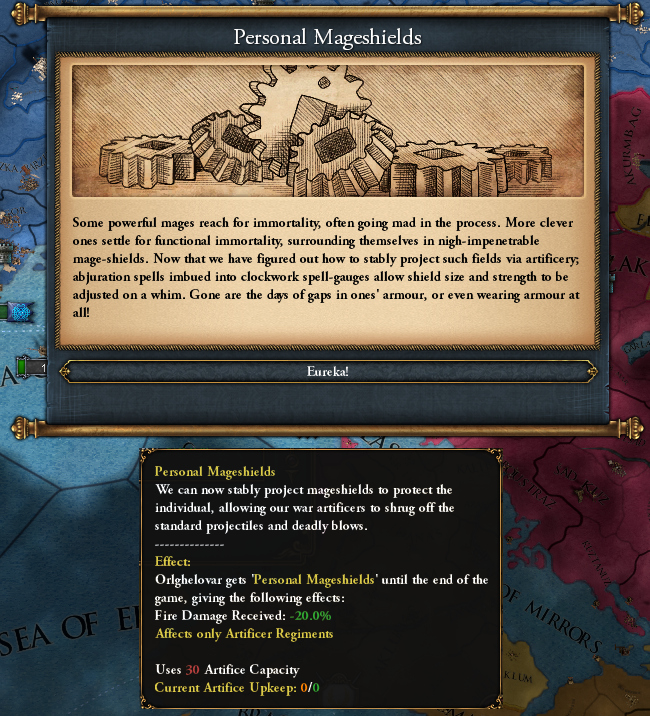 Personal defence on the battlefield The war saw the deployment of a few prototypes of the latest invention of the artificers, a device that could generate a magical barrier capable of deflecting attacking from almost all handheld weapons. Theoretically these could be deployed to entire regiments to render them near immune to ranged volleys from enemy formations, but they were incredibly expensive to produce and so relegated to only high-ranking officers. Again, this doesn't sound like Mechanism. I wonder if there is a chance of getting an invention from a different category regardless, or if I've just been misclicking. This one is really good, and it has a cost to match. As fire damage gets stronger, cutting 20% of that damage gives you massive survivability.  The strangers lurk in the darkness Having followed the mad prospector's map, the expedition had charted out a series of caves that didn't appear on any previous surveys of the region. As usual, these were filled with a variety of treasures that had accumulated over the millennia, but the most important thing that they returned with was information. The caves had been long-isolated by a cave in, but someone had dug near-perfect rectangular passages in between them that had such precision in their carving that they had to have used magic. Deep in the cave, at the entrance to a massive sealed vault, they encountered a group of dwarves with ashen skin who spoke a guttural dialect that was only barely understandable. Considering them potential allies, similar to other dwarves that expeditions had encountered in the past, the grey dwarves were approached peacefully. Before the two sides could meet, the strangers made a break for the exit leaving the expedition to pursue them. Despite having a small army behind them, the dwarves slipped away into the darkness of the caverns.  An ancient vault The strange dwarves appeared to have been using magic to try and breach the vault, which was identified as the Rizvâmbrčthar. It was a mythical rune workshop from the ancient Aul-Dwarov, where magesmiths worked cutting-edge and dangerous runic magic. This would be of great interest to historians, mages, and scientists alike who all sought the secret knowledge that had once been thought lost. The mysterious dwarves were likely also interested in that knowledge, so a guard was placed on the vault until approval could be found to launch a full expedition inside. I haven't tried a dungeon before, this'll be something new this run when we get a moment to do it.  Rumours and uncertainty After the expedition made its report, Whitebeard took several days to collate all the strange reports that had been filed quietly away over the past couple of decades. Shazstundihr seemed to have quietened down, but sightings of strange dwarves had been appearing everywhere else, even in some of the surface territories. Something was coming. Much as Blackbeard had felt the Hoardcurse approach, he could tell that all of the unusual activity was in service to a greater purpose. He made his case to the Assembly, and while they did not authorise a full lockdown of the nation to capture the grey dwarves, they did agree to divert troops from the defensive lines at Hul-Jorkad to conduct thorough investigations in places where there had been sightings. You gain a bunch of provinces that need to be investigated and as can be seen from the always ticking disaster, only a limited time to investigate them. But even if you get all of them, it won't fully stop what's coming. 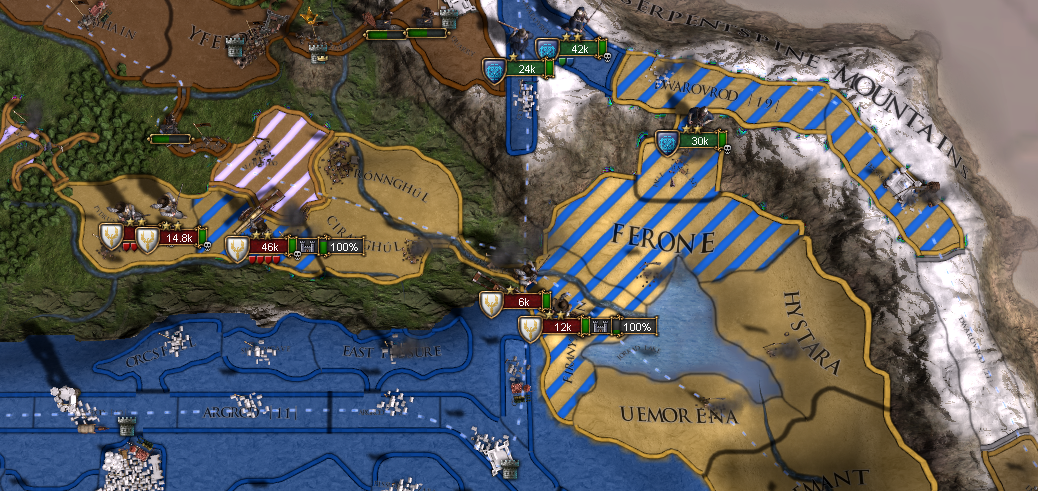 Hold the fort The war with the Phoenix Empire had reached a stalemate, as their war with Kheterata had ended and hundreds of thousands of soldiers poured into Harpylen to push back any dwarven encroachment outside of the mountains. That served the Union Army just fine, as they fell back behind the walls of the hold and let the enemy attrit at the very end of their supply train.  Ambitions of King Gronmar While the war was ongoing, the diplomatic situation in the Dwarovar was rapidly shifting. The new King of Orlazam-az-dihr, Gronmar I, had issued a rebuke against his own father's policy towards the Union and to the other independent dwarf holds in general. His expeditions had managed to locate the Dwarovkron itself, and while he did not hold any of the Gems that had previously adorned it, he considered it proof that he was destined to reunite the Aul-Dwarov. The multicultural republic ruling the Reach was an obvious opponent to his dreams of unification, and so became the primary target of his scorn. Welp, our ally picked up Great Conqueror.  All faiths under enlightened minds As much as Orlghelovar was a hold of science and engineering, it was also a place of philosophy and thought. Any faith was welcome within the walls, and scholars who might be persecuted in other parts of the world found freedom in the daylight-lit parks and terraces of the mountain interior. There was much lively debate with the more grounded technical disciplines as to the truth of the world. After all magic existed, and countless miracles and disaster unexplainable by even that had occurred. The Crimson Deluge, Damestear meteorites, the God Fragment, and yet more going back even further. Science had not yet come to an understanding of these things, and so there yet remained room for religion. With this, we shouldn't have rebel troubles ever again. Finishing Tolerance also gets us -10% idea cost, which combined with every other bonus means we're paying 60% the cost of ideas for the rest of the game. We have access to another policy to take us down to 50%, but that will eat 1 admin mana per month so I won't activate it until we need it. Also, whoops they forgot to rename this one.  Cobalt glass around the world As the 17th Century dawned, the world was becoming increasingly interconnected. This was no less true for the people of the Union. A glassmaker in Orlghelovar could create glass that would decorate a homestead in Aelantir, or a temple in Haless. Several more expeditions had completed circumnavigations, including with dwarven members from the Reach, and trade networks spanned once-unknown oceans. The beginnings of a global society had emerged. It did not take very long for the Union to embrace this too.  Orc-hold liberated Hul-Jorkad was famed as the place where the orcish race had first emerged, and it had been populated by a warband from within the Deepwoods until the Phoenix Empire had taken it. The elves had instituted a program of uprooting the orcish inhabitants and replacing them with dwarves from occupied Seghdihr. Both races found themselves in an unusual situation when cobalt dwarf forces took control of the hold and emancipated them both. The army had to spend as much time keeping tensions from boiling over as it did manning the exterior of the hold against counterattacks, so the signing of peace with the Empire brought much-needed respite and a chance to rebuild.  Allies against imperialism The dwarves of Verkal Kozenad, who were the former adventurers that had recently liberated Er-Natvir, approached the Union with an offer of a defensive pact against aggression from King Gronmar. They had no intention of giving up their independence for one dwarf's ambitions.  Dark works Despite all best efforts, none of the strange dwarves were apprehended during any of the investigations. What was discovered however, were runic circles large enough to hold a small village within them carved into the cavern floors. The magesmiths could again make no determination of what the runes were intended for, so the investigation teams prudently destroyed them.  Magic rains from the sky On an early morning in 1607, the city of Westend in Bahar was wracked with a devastating impact. From high in the Astral, a meteor had descended to the surface and brought with it a bounty of incalculable value. Even as a relief effort was being organised, miners, traders and artificers were making their way to the city to be the first to take advantage of this new source of the most valuable substance in the world. This is your main source of new Damestear if you don't want to go conquering for it.  Xenophilia Nation The Union was a rarity among the nations of the world in having such a wide range of races intermingling freely. And where races intersected, there were those who took it to the next level. Not all such pairings were viable, but those who were had their children welcomed by society at large creating an even more colourful tapestry. I think strictly speaking half-elves and half-orcs are both meant to be half-human only, but with how egalitarian we are being...  Warning against interfering the Empire Ever since the end of the League War, Orlghelovar had maintained good relations with the Duchy of Estallen, giving the dwarves a foothold within the Empire's markets while the Estalleni merchants gained favourable trade deals in return. Over the years, this had shifted into more of a formal alliance and recently the Duchy had been engaging in expansionism within the Empire to the point where it had become the strongest individual member of the Empire, bar the Emperor himself. Emperor Laurens VI was not pleased with this development, and declared that the Union was just as much a party to this as the Estalleni themselves, considering that dwarven money had helped finance the constant warring.  An excess of caution might yet carry the day Reports of mysterious dwarves were escalating, more and more dark circles were being discovered and yet they always managed to avoid pursuit. President Whitebeard pleaded with the Assembly to lock down the nation, but they still didn't consider the situation urgent enough to do something that would wreck the flow of trade and anger the population. Using what authority he did have, Whitebeard ordered the Union Army back from the borders to the heart of the Union. Two divisions were stationed by Orlghelovar itself, while a rapid response force was stationed in Verkal Skomdihr to deal with any situation that might emerge in the eastern end of the Reach.  Worse than possibly imagined When it happened, it was on a scale greater that even the most pessimistic investigators had theorized. In Shazstundihr, the calcite walls that made up the majority of the newest layers of the hold crumbled, destroyed tens of thousands of homes and businesses and killing thousands of people instantly. Behind those walls lay nothing both inky darkness, a magic portal that refused access from anyone who had touched daylight. From that portal marched tens of thousands of dwarves with ashen skin and wearing pitch-black mithril armour. They swept through the devastated hold, killing any non-dwarves that they encountered and enslaving the dwarven inhabitants. Before word could even get out, the army was on the move. Using the rebuilt rail lines, they began to spread through the western tunnels of the Reach faster than a messenger could travel. As they went, they destroyed the mechanisms that brought daylight to the underground, plunging most of the western Reach into darkness it hadn't seen since the fall of the Aul-Dwarov. Arg-Ôrdstun gave in with barely a fight, their defences unmanned because they hadn't even been aware there was a threat. The invaders began to move into the hold in force, apparently making it the headquarters for their war effort. Meanwhile in the east, dark circles, those that had not yet been located and destroyed, flared and spawned smaller versions of the portal that had appeared in Shazstundihr. Whole armies emerged from the darkness and began to rampage through the caverns with no garrisons to stop them. It was only by the use of Sending Stones that a total disaster was averted. The forces stationed in Orlghelovar barricaded the hold when the mayor of Arg-Ôrdstun used his last moments to send a message about the fall of his hold, before the dark dwarves could break into his office. Engineers from Verkal Skomdihr sabotaged the rail line and halted the eastern advance long before it could reach the hold proper. Still, the shock of the invasion sent ripples through the Union Army, as many once-stout dwarven warriors were pushed to the edge of despair for the safety of their homes. The Obsidian Dwarves had returned, and would show no mercy in their own war of reclamation. To be continued… Vote The ferocity of the invasion has taken the nation by total surprise. Many of the Assembly are missing, and communication from one end of the Reach to other is only possible by Sending Stone. The President has declared martial law and given full authority to the Union Army to engage the enemy as they see fit. What strategy have the generals decided upon? Offence: Strike directly at the occupied holds and liberate them with all haste. Let the enemy be distracted with other territory, while we cut them off at the source. Defence: Eliminate any armies roaming the Dwarovar, and bottle up the remainder with our fortresses. Engage and destroy the invaders as they break themselves on our walls. Quantity: Rally the masses and draft every able-bodied dwarf into the military to defeat them with numbers. We do not know how many more of these invaders may emerge, and need to account for that possibility. Besides the strategic plan, this will also put a finger on the scales for the next idea vote. It's not a direct vote for the selection as we don't have a slot open so we aren't likely to be able to actually pick any ideas until after this situation is resolved. Voting will last 48 hours
|
|
|
|
Poil posted:Offense seems like a great idea. The specific requirement is holding three restored holds outside of Amldihr or the Jade Mines (the far eastern mountains), there's no restriction on race. So there is a scenario where the reclamation fails and goblins, orcs, or surface nations get invaded instead.
|
|
|
|
Boksi posted:I don't think they have a mission tree yet. Pretty much this, they have some mechanics and a unique artillery unit but beyond that it'll just be all conquest all the time. If we were playing a hold with a weaker mission tree in the first place I might've put it up for a vote. The votes currently stand at: Offensive - 6 Defensive - 7 Quantity - 1
|
|
|
|
It's a little early but I'm going to call it there (also I already played the update when it was clear offensive had taken a huge lead). Final vote Offensive - 14 Defensive - 7 Quantity - 2
|
|
|
|
Chapter Eleven: A Light in the Darkness 1611-1616  Battle to the death As the army scrambled to coordinate their response to the invasion, the government sent out messengers to attempt to parley with the Obsidians. Not a single one returned. Whether they were dead or alive, the message was clear. There would be no negotiation, except when one dwarf had the heel of their boot on the other. The invasion can only be defeated after being 100% occupied by us, and vice versa.  The east is empowered to defend itself The agreed strategy for fighting the invasion was an immediate counterattack, but that left the eastern half of the Union completely undefended. The garrison at Hul-Jorkad was elevated to the status of an official command, and ordered via Sending Stone to focus on defensive fortifications. They would not have the strength to engage the enemy directly, but they could slow them down.  Through the caverns The rapid response force in Verkal Skomdihr was facing down the largest single collection of Obsidian forces, but they had an opportunity. The caverns running along the northern side of the Reach could take them directly to occupied Arg-Ôrdstun while bypassing the army. The enemy would have trouble pushing east with the rails sabotaged, so the hope was that the two armies would pass one another in the darkness and the defensive depth of the east would last longer than the walls of the Arg-Ôrdstun.  Innovation in the dark The invaders had made sure to destroy the daylight mechanisms as they had made their way through the mountains, leaving much of the Reach in pitch-black darkness. They had set up torches where the inhabitants had been forced back to work, but everywhere else was near-impossible to navigate for dwarves who had gotten used to natural light. How the Obsidian Dwarves managed in the darkness wasn't clear, but the Union Army needed to find their own way that wasn't relying on expensive torch oil. The artificers came through for them, as they offered up their inventions as light sources. Under certain conditions Damestear could be made to emit light, and that was a common feature of inventors who wanted to make their product look flashier for investors. Now, they were going to help guide the way.  To the start of it all The majority of the Union Army was still stationed in Orlghelovar, under Durin Goodanvil. The surviving members of the Assembly demanded that the army remained stationed in the hold to defend the government from incursion, but with the state under martial law the military had priority and followed through with the agreed plan. The portal that had brought the Obsidian Dwarves to the upper Serpentspine was in Shazstundihr. Going on the offensive immediately and preventing the enemy from reinforcing themselves was the highest priority.  The darkness speaks Shortly into the crisis, a message came through on the Sending Stone linked to Arg-Ôrdstun. The dwarf on the other end identified themselves as Runeherald Rarzharr Bedrock, supreme commander of the Obsidian Legion. They made it clear that they had no intention to negotiate. Millennia ago, their ancestors had been banished to the deepest depths of the Serpentspine, to the Primeval Serpentspine, a place of wonders and horrors yet unimaginable to those who dwelt in the safety of the upper mountains. The Runefather had guided them through those dark times and they had carved out an empire for themselves, waiting for the moment their imprisoners would weaken and break the rune seals that kept them from returning. All dwarves would be made to serve the Runefather, all other races were to be driven from the mountains. Whitebeard had to pause before responding, but when he did it was with fury that matched that of the Runeherald's own anger. The Aul-Dwarov was gone, the dwarves who had banished them were dead and their lines extinguished, the Obsidian Legion was killing and enslaving not for justice but out of petty rage. The might of progress and the peoples of the Union would bury them, and those who survived or surrendered would see a world better than any they could have imagined. A quick look at the bonuses that they get. The Legion suck at diplomacy but gets some really good generals, decent military buffs and a huge force limit buff, which they will need to have a chance at winning. 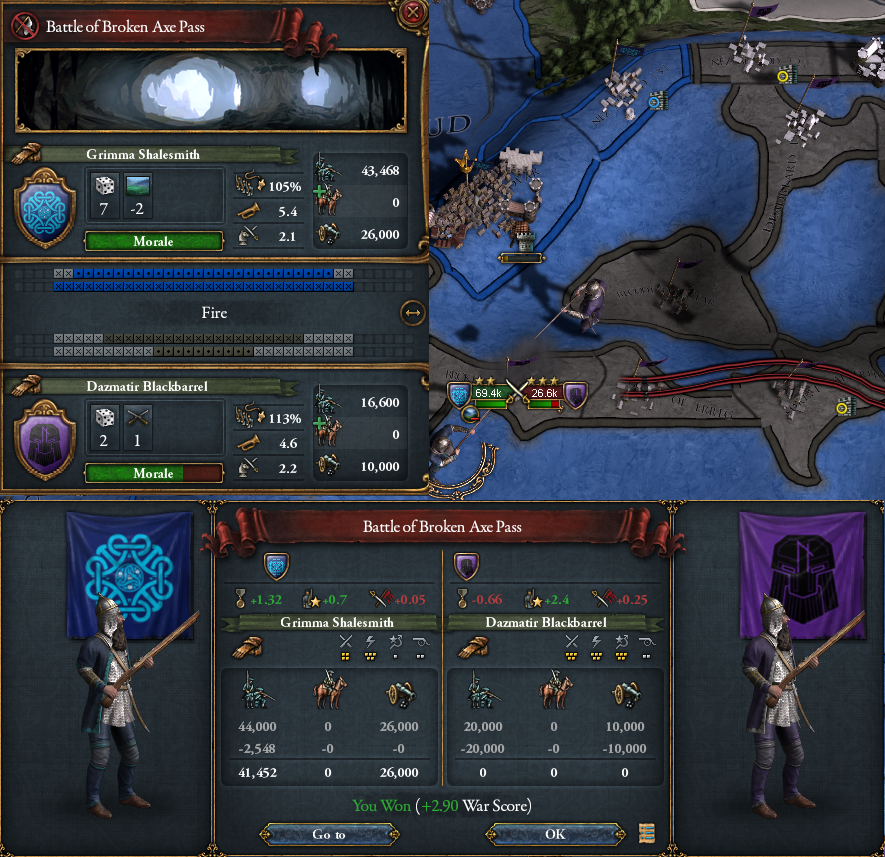 Battle in the darkness On the way to Shazstundihr, the spearhead commanded by General Shalesmith of the Tűngric Army ran directly into the western division of the Obsidian Legion. Thus began a brutal battle in the darkness of the caverns, lit only by the few Damestear lamps that they had been able to bring with them and the regular light of gunfire and cannonfire. The arrival shortly afterwards of the rest of the Union Army brought a sheer weight of numbers against the invaders, and it was quickly discovered that their lamps overwhelmed the darksight magic that the Obsidians used see in the dark. With the enemy suddenly struggling with the light levels, the combined Union forces rolled through them and scattered the remnants.  Overextended and caught out The Legion seemed to have been caught out by the ferocity of the counterattack, and scrambled the rest of their army to the defence of their headquarters in Arg-Ôrdstun. As they sallied from the fortress, they were cut down in their thousands by Union artillery, but in the inverse of the previous battle their numbers allowed them to breach the lines and start ravaging the artillery positions. Union forces withdrew to Verkal Skomdihr to recuperate, but their job had been done and the Legion had lost their initiative.  Reclaiming a ruin Union forces retook Shazstundihr within a matter of days, so devastated were the defences of the hold. The portal had already closed by the time they had entered the hold, leaving the cobalt dwarves to assume that the Legion's runesmiths had closed it to guard their homeland from any danger of counterattack. As the army recuperated, they began to dig through the ruins of the hold to find survivors of the original invasion. Captured obsidian dwarves were treated to the view of dwarves rescuing orcs and goblins whose districts had been cut off by cave-ins, and humans and elves who had fled to the surface pouring back into the hold once it was liberated. Actually lore-wise the portal is a one-time thing. If you play as the Legion, once you conquer your starting opponent you have to work to re-open a link to the Obsidian Empire. Their religion is also based around how strong or weak this link is.  Catch out the weak In an effort to reclaim the initiative, the Legion split its forces with those still at full strength pushing directly to Orlghelovar and those who had suffered losses in the defence of Arg-Ôrdstun pulling back to recuperate. That proved to be a mistake in the face of the Union's aggressive policy, as the few who had managed to hide within occupied territory and hold onto their Sending Stones reported the position of the depleted forces. General Goodanvil pushed his troops out along the rail line and hit them unexpectedly, inflicting significant losses and forcing them to retreat into the caverns. However, with the capital under threat pursuit was not an option. Losing Orlghelovar would be a massive blow and risked the collapse of the civilian government which was just about holding together in the face of the invasion.  Battle for the fate of the glass hold Whitebeard had not had time to leave the hold before the Legion's forces descended upon its defences, and watched as their artillery fired volley after volley of rune-enhanced shells directly into its walls. The Union Army had scrambled to make it back in time, and fell upon the Legion forces with everything they could muster in spite of their own exhaustion at traveling back and forth across the Reach. Just a few days more, and there might not have been hold to return to.  Rescue from the surface As the battle raged, an unfamiliar horn sounded across the plains of Ourdia. The Duke of Estallen had arrived, bringing with him tens of thousands of infantry and thousands of Cannorian knights. While the hold would have been defended without their help, a counterattack would probably have had to wait. But now, with fresh troops descending on the Reach, the Legion looked to be on the back foot for good.  Sweeping clean the mountains The human-dwarven alliance moved swiftly, and crushed an attempt to retake Shazstundihr. Meanwhile, the Duke was welcomed into Orlghelovar, where the Assembly put on a magnificent parade and feast to celebrate the collaboration of the two great nations. Whitebeard met with him in private to thank him for his aid, and while the mood remained good, discussion did eventually turn to repayment in terms of money and other support. Exactly what obligations had been promised between the two of them were entirely off the record, but they emerged with the alliance reaffirmed and the two nation's spheres of influence clearly defined. The Empire was Estallen's, while the lands beyond were the Union's.  Only temporary safety The obsidian dwarves who had appeared in the eastern half of the Reach remained cut off from support, and in fact retreated to a corner cavern and fortified themselves there rather than strike out. Whether this was a plan to set up an eastern headquarters or simply a breakdown in the chain of command wasn't clear.  Legion scattered After 8 months of war, the last of the Legion's mobile forces in the western Reach were crushed by the forces of the alliance. Thousands of obsidian dwarves had been captured, and thousands more and fled into the caverns where they would hide for years before either giving up and trying to integrate into society or else delving deeper in the mountains to try and find a way home. All that was left was to break down the defences of the Legion headquarters in Arg-Ôrdstun and bring the Runeherald to justice. 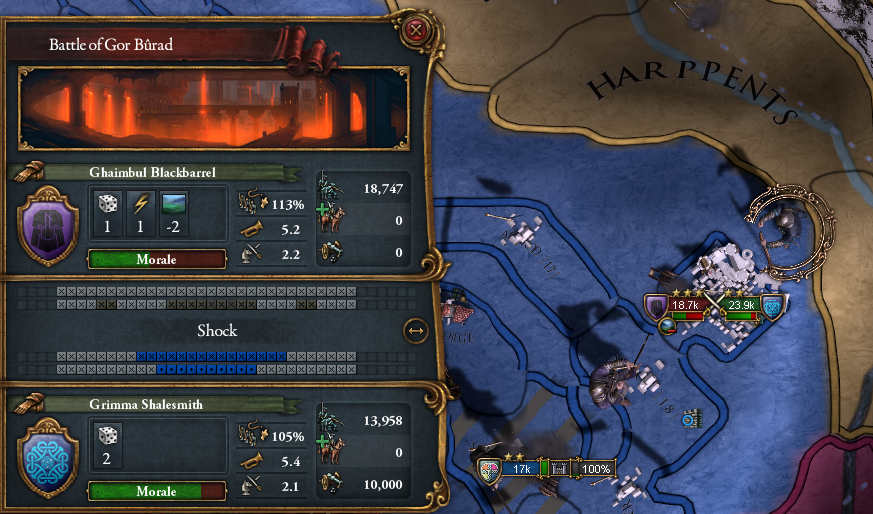 Last stand The forces in the east didn't last much longer. Their portals did not have the capacity to bring through cannons, so even as they made a last-ditch attempt to storm Gor Bűrad their unsupported infantry was wiped out with ease.  Increased gnomish interest With the war dying down, normality was beginning to come to the Union. The Gommo sent a request asking for an official branch to be opened in Aqatbar, considering that the mountain interior was still war-torn. There had been a great deal of interest from the gnomish organisation in the scientific developments within the Union, and so a greater level of cooperation was forged.  The headquarters fall It took the best part of another year to break into Arg-Ôrdstun, with the Legion defenders fighting to the last dwarf to hold the outer fortifications, even descending into street-by-street combat in an effort to protect their herald. The dwarf himself a was found in the mayor's palace, attempting to open a portal back to his homeland with the last of his runesmiths. Before he could complete the ritual, he and his command staff were captured. All that remained was to scatter the last few scattered units that the Legion had attempted to form out of deserters and drafted locals and the war would be won.  The Obsidian Invasion ends Runeherald Bedrock was placed on trial on Orlghelovar, along with the other surviving high-ranking obsidian dwarves. After a swift trial, he was sentenced to life in a cell with a view of the entire upper layer of the hold, where he could see the daylight illuminate the boulevards and plazas every morning and watch dwarves and all other races mingle in peace in prosperity. Those lower-ranked soldiers that had been captured were imprisoned in prisoner of war camps, with an eye towards rehabilitating them into society. There wasn't a way home for them, so it was either that or life as a permanent PoW. Many were still loyal enough to take the latter, perhaps dreaming that another invasion would free come and free them. President Whitebeard returned the authority from the military to the Assembly, who rapidly started to lift the wartime restrictions that had been put in place. For the most part, life outside the Reach proper had ticked along as normal, but now came the difficult task of reintegrating the devastated interior back into the Union administration and economy. Despite all the struggle, this challenge had been met and defeated, and they would emerge from it stronger than ever. So ends the Obsidian Invasion. I might have made it look straightforward, but we had some advantages. Our large surface territory was untouched because they only initially take provinces inside the Serpentspine, we managed to finish our wars and thus have time and manpower to spare hunting down runic circles before the start, majorly cutting their numbers, and had a powerful ally to march in and clean up. And of course, the fact that Offense was the correct choice. Catching and destroying a full quarter of their main army at the start helped keep them under control, and from then they were mostly responded to us rather than taking the initiative. Defensive would probably have still worked once the Estalleni arrived to bolster our numbers, but it would have been more of a slog and considering how close Orlghelovar came to falling we might have lost it in this scenario if we'd let them doomstack. This disaster has the potential to be devastating if you aren't ready for it. The buildup escalates at low stability, so you have less time to ready yourself if caught with low admin power, and most dwarven empires will be entirely within the mountains and thus not have external territory to fall back on. Finally, the numbers are large enough that they can just overwhelm you if you haven't built up as much as we have. I have another game going as Krakdhűmvror where I just conquered the hold with the calcite layer from an AI and my army is a third the size of what it was in this LP, so I'm starting to get fearful.  Institutional collapse The devastation wrought by the invaders even in the short time that they had held parts of the Reach was incredible. In areas under their occupation they had torn down the administrative institutions of the Union, retooled industries to produce weapons and supply the army, and established slavery to overcome the resistance of the inhabitants. Bureaucrats had been worked to death, miners had been drafted as cannon fodder, and non-dwarves had fled or died. It would take a long time for the people to recover from the trauma that had been inflicted, and the government was happy to give them the time they needed.  Rebuilding begins At the same time, the physical infrastructure of the occupied regions had been wrecked, first by the invasion and then by the counterattack. Arg-Ôrdstun and Shazstundihr both needed significant investment to restore to their original splendour. These were eagerly funded by the banks that had survived the war and were looking to make a name for themselves and get a piece of the restored economy.  Theory of flight The war did not halt the advance of science, even if it did turn it towards more violent ends. As most artificers focused on improved lighting or developing weapons directly, others sought inventions of even higher purposes, literally. A dwarven and gnomish collaboration brought out a theoretical paper outlining the idea of a flying warship that could rain down devastation on an army unable to response and patrol trade lines from the sky, if not be adapted to ship cargo itself. The engineering knowledge to create such a warship wasn't there yet, but it opened a new rush to study other potential flying artifice. This invention cannot be used until we have the Enlightenment institution (~1700). It doesn't even appear as a possible selection. Too bad really, it'd be very cool to get this early.  Universal suffrage The end of the war saw a greater push for voting rights among the lower classes. So many had died in defence of the Union, or resisted the rule of the Obsidians in the occupied holds, that it was a travesty that they weren't allowed to participate in the election. Under this mounting pressure, the Assembly voted on an extension of voting rights to all adult citizens in the election of their representative to the Assembly of Holds. Full democracy remained a little out of reach however, as the President was still not popularly elected and with a variety of races with different lifespans, especially mixed races, there was concern that the definition of 'adult' had not been set correctly and left otherwise competent voters disenfranchised.  Faithful allies Having seen the value of powerful allies, the Assembly was happy to devote a division of the Union Army to supporting a push by Verkal Kozenad to secure the eastern tunnel that led out onto the Forbidden Plains. The tribe inhabiting the tunnel were supported by a powerful ogre clan that had subjugated the centaur tribes out on the open steppe, so the army stationed itself at the entrance to the mountains and held there rather than descend into dangerous and unfamiliar territory.  Setting forth into the vault With the situation calm, the government signed off on an expedition into the Rizvâmbrčthar. The Legion had been searching for something, which meant that it was either very dangerous or very valuable. Either way, it was safer in the Union's hands than in the pocket of any random adventurer who tried their hand at the vault, as were all of the other runic experiments that lay within. Dungeons don't operate on quite the same process as other expeditions. Instead of slowly trawling through a certain number of levels while dealing with random events, we are required to go through a series of defined events and locate the exit. Then we can upgrade the associated Great Project and prepare for the next stage of the dungeon.  Trials of logic Whoever had originally created the vault had intended that only the smartest dwarves were capable of enter, and so the expedition had to engage in the most fiendish tests of intelligence in order to be able to proceed deeper inside. As with other expeditions, the success of different options is randomised. We get pretty lucky in this dungeon with the results.  Ravelians enter the Union A group of academics from the Empire petitioned to allow the establishment of a chapter of the Ravelian Society in Westend, with the stated goal of studying the Damestear meteorite that fell on the city. The Assembly approved the request without much dissent. While the Ravelians were considered radical by many, their focus on debate and study fit perfectly into the society that had sprung up out of Orlghelovar. Over the following years the Union would see more and more chapters opening up on the surface and within holds.  Runic perfection Beyond the entrance of the vault were many traps, but the expedition was able to navigate them without much issue. Even in the upper layers of the workshop they found countless runework artefacts, appraised by magesmiths in the party to be priceless perfectly crafted mechanisms. If this was in the upper levels, who knew what treasures lay even deeper inside?  The Age of Witch Kings The world at large was going through another shift, as the religious conflict that had defined politics in the previous century was starting to fall by the wayside. In its place were the rising nation-states of the world, led by powerful monarchs who were gathering more power, both magical and temporal, onto themselves. The Kingdom of Gawed, spanning from the Dragon Coast to Lake Silvermere, the Phoenix Empire and the Kheteratans, the petty kingdoms of Escann, and the rising colonial nations of Aelantir. Even Orlghelovar was part of this trend with the rise of the Union as a unified state capable of fending off an invasion that would have wiped out the dwarves of a century earlier.  Far from absolute rule Unlike the other great powers though, the Union was a democracy. Not unique in the world, but the extent to which it had extended power to its population was nearly unmatched. As a downside, as some would consider it, the President did not have the authority to rule unilaterally, to cut through red tape in the integration of new territory or instil discipline in the army through fear. The question remained, how would such a nation compete with the Witch Kings of the world and the powerful magics that they wielded? We have a couple of problems with regards to our absolutism, one being the giant stack of privileges we've given our estates, some required for missions and others not, and taking less-than-optimal picks from the government reforms for RP reasons. I'll be rolling back privileges as best I can but I think we'll be sitting at only 30-40 maximum by the end of it.  War returns to Escann The lands of Escann had long-since recovered from the Greentide. New nations had arisen, new cities had been constructed, and the population had gotten used to peace. However, with that came the ambitions of the Witch Kings and other petty kings who ruled over the divided lands, not to mention the ever-expanding Gawedis who saw Escann as ripe for the plucking. The region was once again barrelling towards a conflagration, not one born of foreign invasion like the Greentide but by a lust for power and dominance that came from within. Here is where Round 2 of the Escanni Thunderdome begins. Every nation in the region has a CB to conquer all other provinces in the region, and if they manage to own 100 provinces by the time the wars finish in about 50 years they get the chance to form some powerful unique formable nations. Sadly, I doubt any of the AIs have it in them to stand up to Gawed pushing in from the north-west there.  Golem bested through study, not violence Advancing deeper, the expedition encountered the guardian of the upper floor, a massive runic golem. As the group prepared for battle, a magesmith proposed a different solution. Study and understanding, not destruction, was the way of the Union. And thus, they were able to discover a way to safely shut down the machine before it could hurt anyone. 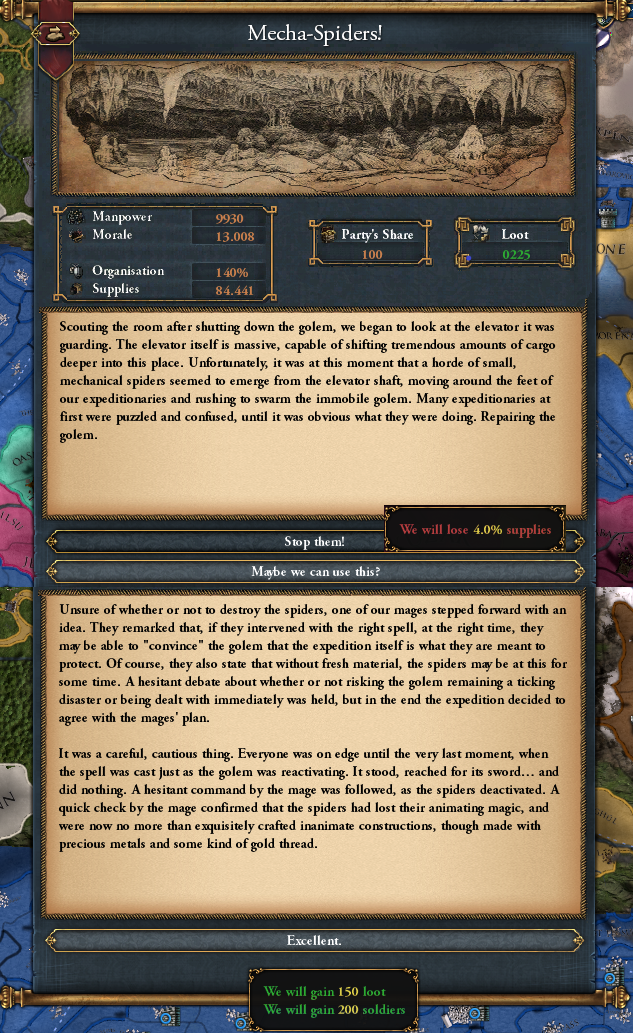 Turning the mechanisms to our favour Similarly, when mechanical spiders swarmed the machine and attempted to restore it to functionality, the magesmith was able to take the opportunity to reprogram the golem and have it join with the expedition as a guardian.  The way deeper Beyond the golem was an elevator that could take the expedition deeper into the vault, but it required additional work to bring it back to working order. A team of artificers joined the magesmiths in attempting to reactivate the elevator, despite the mages' protests. A layer of friction existed between the two groups, but at the same time their competition sped along the work on the elevator. As I understand it you need to 'upgrade' the dungeon before you can proceed to the next expedition.  Expansion of the Institute The Orlghelovaric Research Institute had languished for years, with money and effort being poured into the war effort and reconstruction, but the government was finally able to redirect some support to see the facility expanded further. The construction of specialized research rooms, office, and dorms for scientists and students was simply the first step in making the Institute the greatest scientific facility in the world.  Innovations emerge quickly While self-cleaning parchment hadn't seen widespread adoption yet, it was still commonly used by researchers who had the funds to purchase the expensive material and study it further. They even found ways to encode sounds as runes on the page, so that certain runes would appear when certain words were spoken. The technology had a long way to go, but the ability to turn speech to text had an enormous range of potential uses. Okay, I'm not sure how this is meant to work from an artificery point of view without it literally being just magic… 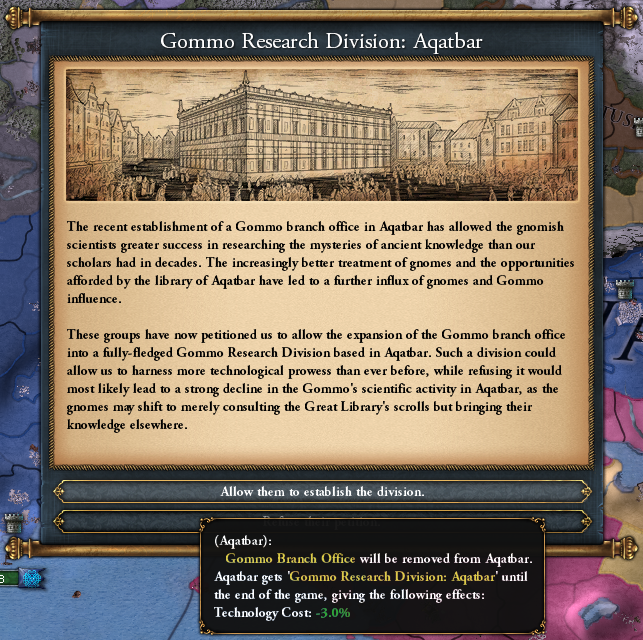 Rising to the challenge Not to be beaten, the Gommo increased their investment into their office in Aqatbar, expanding it to a full research facility. However, it was limited by the space available in the city while the Institute in Orlghelovar was only limited by how deep the miners could dig. The dwarven scientists were not openly worried about the competition, but having a competitor even if they were smaller in more ways than one was still a way to drive innovation.  Empire of Lights One of the highest priorities of the various research facilities around the nation was the first proper artificial light source based on the prototypes used during the Invasion. The daylight mechanisms installed throughout the nation's holds and the rail tunnels were good, but also fragile and only useful so long as the sun was up. With the development of handheld artificer-crafted lamps suddenly the darkness could be banished permanently. It would not be long before this extended beyond the mountains, and every city of the Union could treat night as if it were day. Enlightenment in both the literal and figurative sense could be brought to the world. To be continued… Vote The sheer effectiveness of the offensive, crushing the Obsidian Invasion before they could cement their foothold, has given a major boost to proponents of the offensive military approach. However, other ideas also have their proponents. Which ones will be selected? Vote for two ideas, (e.g. B, E) The top result will be our fifth idea pick, and the second result will be the sixth. It'll be a few updates before we manage to open the sixth slot but I didn't want this to just be a repeat of last update's vote, so even if we can't pick it right away it will guide our strategy for the next few decades. A: Administrative – The Union should expand and enlighten more of the world, although doing so will require streamlining our administration. B: Economic – Much of the core of the Union was devastated by the war, we should focus on economic recovery. C: Influence – The people of the world need to be free, but we cannot simply force them into our Union without a time of self-governance. D: Maritime – Our merchant navies could be bolstered even further to spread our trade influence from Aqatbar to Damescrown. E: Offensive – The Obsidian Invasion was crushed by quick and aggressive action. This is surely the right approach for our army, and our strategic aims (automatic +5 votes). F: Defensive – The army is strong enough, but the near-fall of Orlghelovar has shaken many, who now advocate for making our walls stronger. Let our enemies break on them until their tyrannies break under the strain. Voting lasts 48 hours Sybot fucked around with this message at 14:02 on Apr 8, 2023 |
|
|
|

|
| # ¿ May 15, 2024 12:11 |
|
To note for anyone voting A + B, this combination isn't technically possible because the game doesn't let you pick another idea from the same group if you have more than 50% of your ideas from the that group and if this happens we would have Adm/Dip/Mil at 4/1/1. If this pair do get the first and second highest vote then I will carry one forward to the 7th idea group vote with bonus votes like Offensive gained here. Xerophyte posted:Also Maghargma are, surprisingly, not centaurs! They're one of the ogre kingdoms in the western plains. Usually they die early because the centaurs are ridiculous until such time as they explode. Not sure what happened to the horsies in this game, guessing no one ever managed to form the Khuraen? Thanks for pointing that out! I'll go back and edit it. I assumed they were centaurs because that's all I ever saw on that side of the mountains. Over the course of the campaign so far they have had no less than three separate Great Conquerors. That's what I like about the system, it sometimes lets unusual nations rise to prominence.
|
|
|



